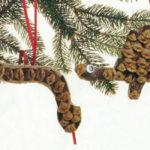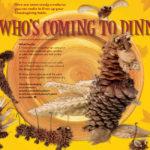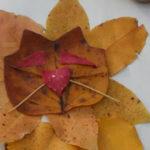Leaf stick pincone crafts woods forest nature activities
pLAYING wITH nATURE
How to look like an expert outside
Sometimes it just takes a little bit of reading…
Start Small. Never Stop.
Forest Collectables
I have spent my entire life trying to get rid of the universal notion that any type of family walk or hike are all about getting to a certain destination. When in reality walks and hikes are really all about the adventure and the the things that fascinate us along the way. Just ask any of your children. It always amazes me that you can always count on them to find the fun stuff along the way. They are outside to discover our world and find joy in the process of exploring the plants and animals that are right in front of them. So add in some spontaneous "Natural STEAM" activities and enrichment that are featured below.
By letting your child's interest levels set the pace for walking the shoreline or in a forest, and by us encouraging them while being open to their natural curiosity, we can definitely help any child to develop a healthy love of not just the beach but of the great outdoors.
Our TOP 12 "Playing with Nature" Pages
All About Nature Collections
Building & Displaying A Nature Collection
Discovering Forest Collectables
Incredibly Easy Nature Program
How Not To Get Lost In The Woods
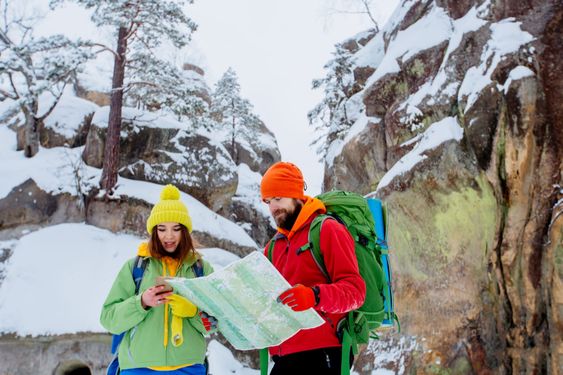
Often, the forest surroundings are unvaried. It’s full of greenery and similar paths everywhere. That’s why start by planning your itinerary wisely.
Research it well, especially if you are hiking solo. Check it online, read reviews, and thoroughly follow it on the map. Most importantly – don’t set an unachievable goal.
Know your limits and don’t get carried away by your adventurous spirit.
Don’t loose your cool if you get lost. Think and act.
Probably you are familiar with that sense of wild curiosity, which makes you want to explore what lies behind the upcoming hill.
And after that, you want to continue and continue, haunted by the beauty of nature. Don’t take unnecessary risks you are not prepared for and know when to stop.
Avoid following unmarked trails unless you have some experience behind your back. Keep in mind that some trails or paths exist because wild animals made them.
They will lead you nowhere. Don’t hesitate to get a guide if that will ease your mind.
Besides being wary, you must possess the right gear. Let’s see what I’m talking about:
GPS – no matter if it is on a smartphone or on a separate device, don’t go exploring the woods, without it.
Hiking app – there are some really good apps that have detailed offline and online maps of every part of the world. In addition, there are some apps that aid emergency services discover you. I briefly explain that in this article I recently wrote for Dave’s Travel Corner. Hints – Gaia GPS, Maps 3D Pro, Map My Hike, etc.
Portable phone battery – having an external battery for your smartphone is essential. Another smart choice would be to buy a tiny old Nokia phone. Its battery could last for more than a week when in stand-by mode.
Head torch – pretty self-explanatory
Whistle – this one could be very useful if you get lost or if you need to signal an emergency. I have a friend who always gives his little children whistles to wear around their necks when in the woods. Kids will be kids.
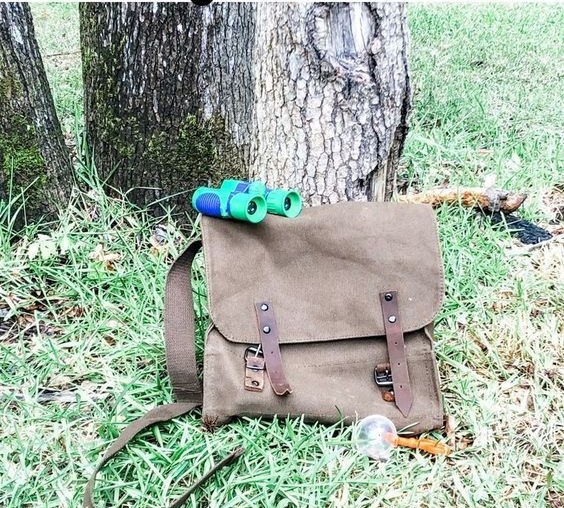
What To Do If You Get Lost Anyway?
As with the snakes, don’t panic. You need to do some sober thinking. If you can go back to a familiar place, which is not far away from your current position - do it. Give yourself some time to remember how you get to your present location. Where did you pass through? What distinctive landscapes or objects did you see?
Try to find running water and start walking along its direction.
Try to find a high hill or a rock that you can safely climb. Being on higher ground will give you a better view of the surroundings.
You will be able to see any rivers or roads if any. Observe carefully because you might see traces of people or any kind of civilization.
If you find a river or a stream, walk along the water direction. It will most probably lead you to a populated place.
If you are wondering which direction to take, it’s a good choice to start walking downhill. It’s less tiring and chances are you will bump into other people or signs of civilization.
Village people tend to settle down close to water and in valleys. Don’t hesitate to blow your whistle and hopefully someone will hear you.
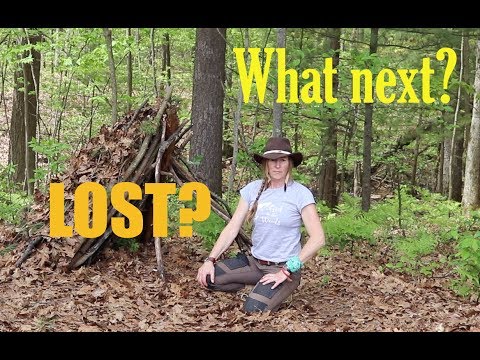
Use your GPS, map or compass to find a way out if possible. If not, know that moss grows on the north side of the trees. That will give you a starting point. If the situation is out of control, call emergency services and follow their instructions.
Pro Tip: learn how to make a signal fire that can be seen from faraway distances. Here’s a good guide.
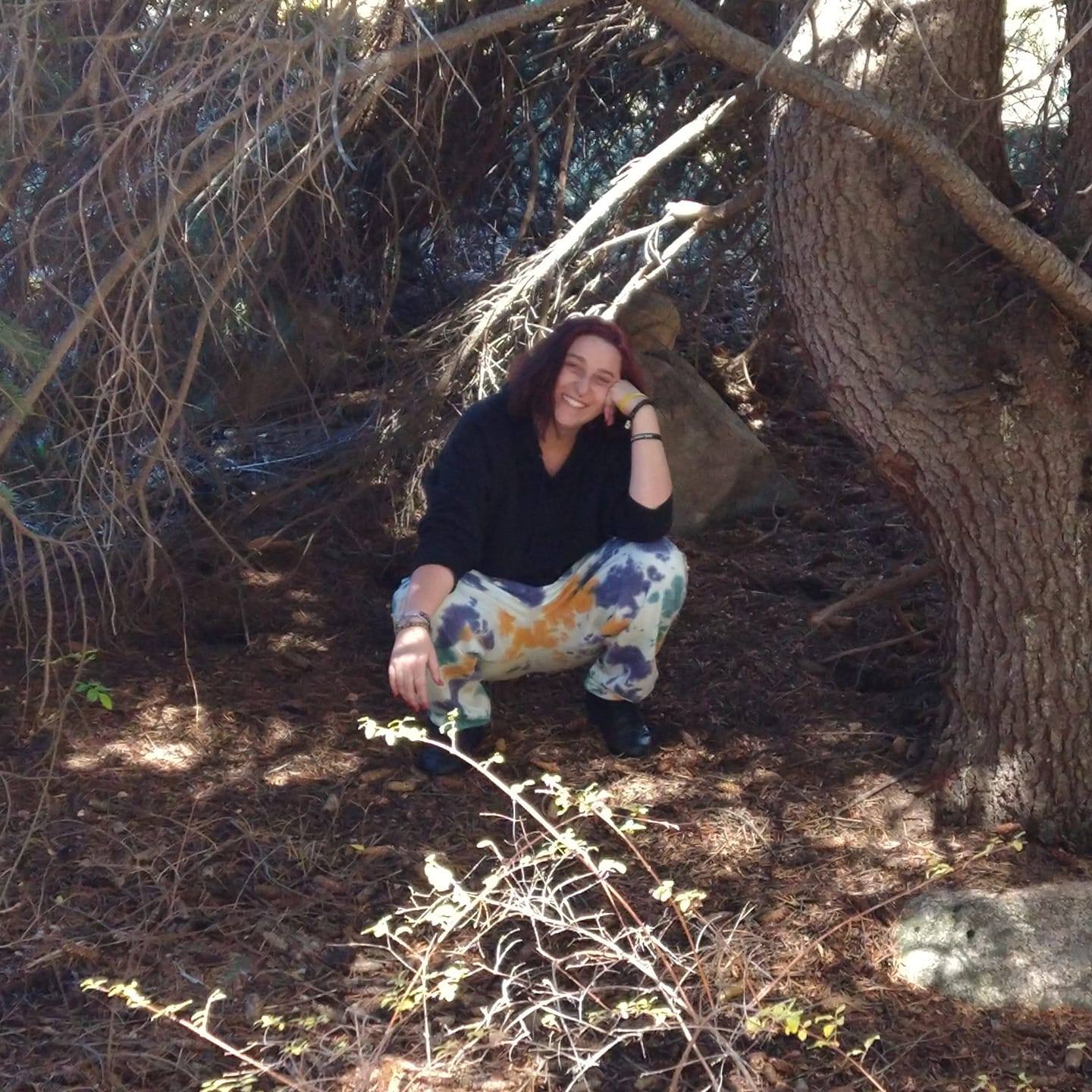
Set Your Mind To Fully Enjoy The Adventure
That what hiking in the woods is – an invigorating adventure. Forget about your everyday problems and dive into the experience with your entire body, mind, and soul. After all, you deserve this. Don’t let anything distract you.
Forget about social media, all the town hustle, and the issues of others. Be open-minded, put a large smile on your face, and start exploring nature. This is your time and your time only.

Forget about your city life and have fun!
Listen to the sounds, be aware of the smells, and immerse yourself in the environment. Remember what I said in the beginning – walking in the woods is like entering a temple. Don’t forget that.
Conclusion
Hiking in the forest is one of the best hikes you can take. It’s so different and stirring. Still, there are some rules to follow that will make your expedition perfectly safe and utterly enjoyable. Remember to gear up well and to think about every imaginable obstacle you may encounter. Don’t forget the differences in the climate, the wildlife, and the items you need.
Gain some basic orientation skills and arm yourself with a positive attitude. I promise you, this could turn into the best time of your life.
Our Series for Babies And Tots Exploring The World
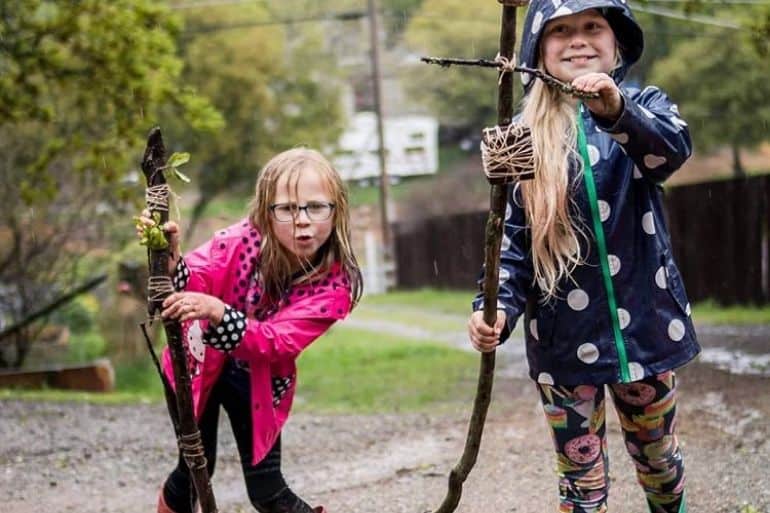
THINGS TO KNOW
Kids are intuitively curious. The best way to learn about nature is to take kids outdoor to the nature, let them explore. Follow your child’s interest, help them observe, think, and ask questions-Fuel their curiousity. Of course some planned fun activities will also help. Although, I highly believe that any activity in nature, should be at least 50% free play. Then they can show you what they are interested in and how they like to explore. Believe me when I say that it's in those moments that they develop their curiousity and problem solving skills.
To create a rich and memorable natural experience for kids, focus on simple, child-focased activities that engage all the senses and spark a sense of wonder. Encourage them to observe, explore, and get their hands dirty.
Sensory exploration and imagination
Go on a sensory stroll: Encourage kids to notice their surroundings by focusing on each of the five senses. Ask questions like:What different sounds can you hear? (Birdsong, rustling leaves)What does the air smell like after it rains?How does the bark of a tree feel? Is it smooth or rough?
Create nature-based art: Use materials found on the forest floor to create ephemeral works of art.Make nature faces by arranging stones, leaves, and twigs on a log or stump.Build natural mandalas, circular designs made from pinecones, pebbles, and wildflowers.Construct paintbrushes from twigs and leaves, then use mud or watered-down dirt as paint.
Make magical potions: Provide jars or bottles and let kids collect "magical ingredients" like pine needles, acorn caps, and mud. Add water and stir up a fantastical forest potion.
Play and construction
Build a den or fort: This is a hands-on, problem-solving activity that can occupy children for hours. Help them find a spot with a few sturdy, fallen branches to create a frame, then layer smaller twigs, leaves, and moss to make a cozy roof.
Cook in a mud kitchen: Find a small clearing and designate it as the "kitchen". Provide sticks, old kitchen utensils, and pots and pans. Kids can mix mud, leaves, and flowers to create their own forest recipes.
Construct a barefoot trail: On flat, clear ground, lay down different natural materials in separate sections to create a sensory path. Use logs as borders and fill the sections with soft moss, smooth rocks, pinecones, and wood shavings.
Create a fairy or gnome village: Using tiny sticks, stones, and leaves, kids can build miniature homes for forest creatures. A hollow log or the base of an old tree makes a perfect foundation.
Exploration and observation
Go on a scavenger hunt: Create a list of common natural items for children to find, such as a round rock, a fuzzy leaf, or a feather. You can also try seasonal or color-themed scavenger hunts.
Watch wildlife: Bring a magnifying glass and binoculars to observe tiny insects or birds from a distance. Look for animal tracks in the mud after it rains to spark a discussion about forest creatures.
Keep a nature journal: Give kids a notepad and pencils to document their findings. They can draw pictures of different leaves, sketch insects, or write down observations about the sounds they hear.
Adopt a tree: Let each child choose a tree to "adopt" and observe over time. They can watch how it changes with the seasons, measure its height, or make bark rubbings.
Tips for building a natural experience
Minimize structure: Allow children to lead the play and set their own pace. The most important thing is to give them the time and space to explore freely.
Ask open-ended questions: Instead of giving them facts, encourage critical thinking by asking questions like, "What do you think happens when it rains?"
Embrace the mess: Let kids get dirty! Connecting with nature through mud and soil can strengthen the immune system and boost their mood.
Provide simple tools: Give them buckets for collecting, shovels for digging, and magnifying glasses for closer observation.
Prioritize safety: Make sure children know how to identify and avoid poison ivy, thorny bushes, and any other hazards in your area. Always supervise tree climbing.
Practice "Leave No Trace": Teach kids the importance of respecting nature by leaving plants and animal habitats undisturbed and carrying out all trash.
Playing in Natural Environments
‘Play allows children to understand the qualities and properties of the world’.
By playing in an authentic outdoor environment, children can play with materials and observe the features of the landscapes around them. As children initially learn heavily through using their senses, discovering and playing in outdoor environments offers children rich sensory learning experiences (Duffy, 2007). When playing, children also inhabit their environment and make it their own. Therefore, natural places are attractive play areas for children, as they find them flexible, unlike playground equipment, which is designed with specific games and movements in mind. Natural environments offer children an environment they can manipulate, discover and control (Fasting, 2019). I have often observed children collecting leaves and sticks and using them as tools for imaginative play. I also see children choosing areas for play and making them their own.
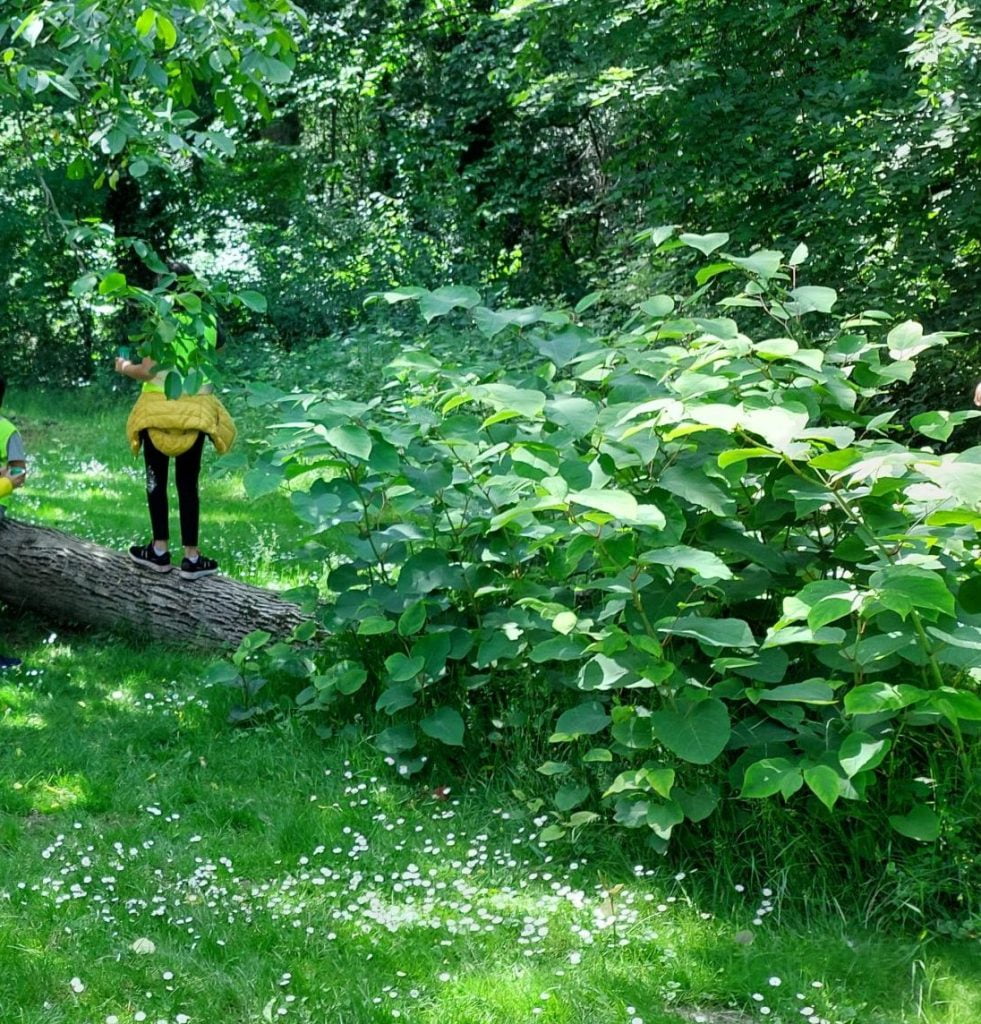
Learner developing confidence by balancing on a tree log.
Physical Development
The environment on its own aids the student’s physical development during sessions. Outdoor environments can contain uneven and variable terrain that helps to develop the students’ balance and physical fitness (Fjortoft, 2004). This, combined with free play opportunities, encourages the development of fine and gross motor skills and helps an individual’s physical development and well-being ( Blackwell, 2015).
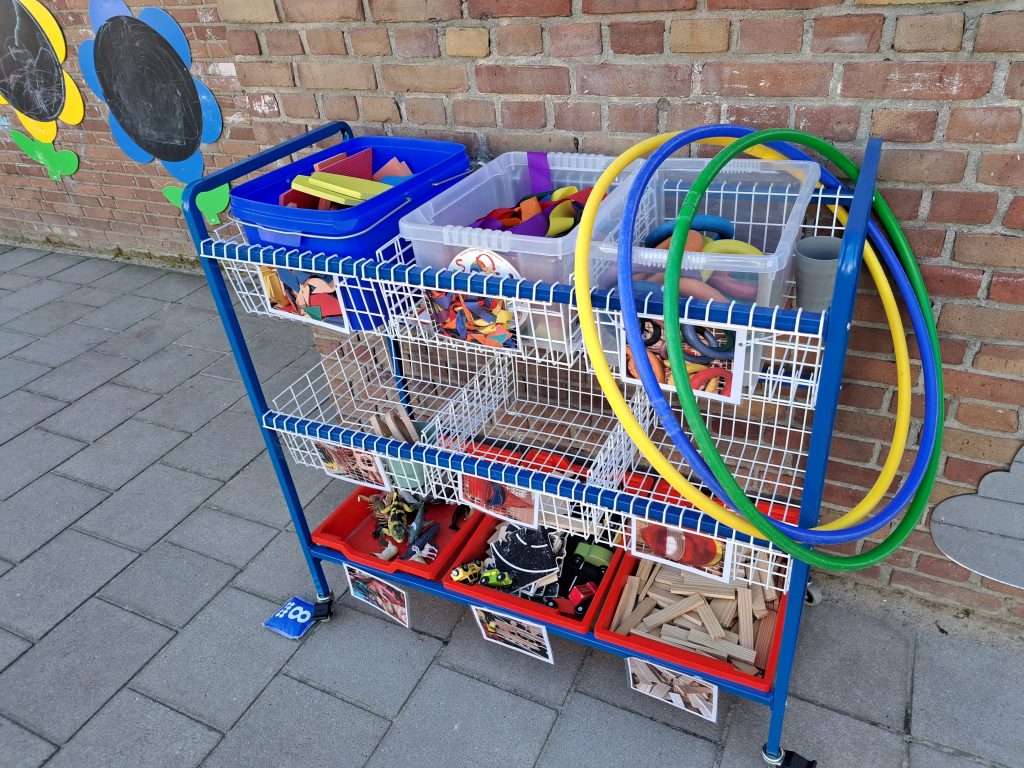
The early Years team is so organised with their outdoor play resources.
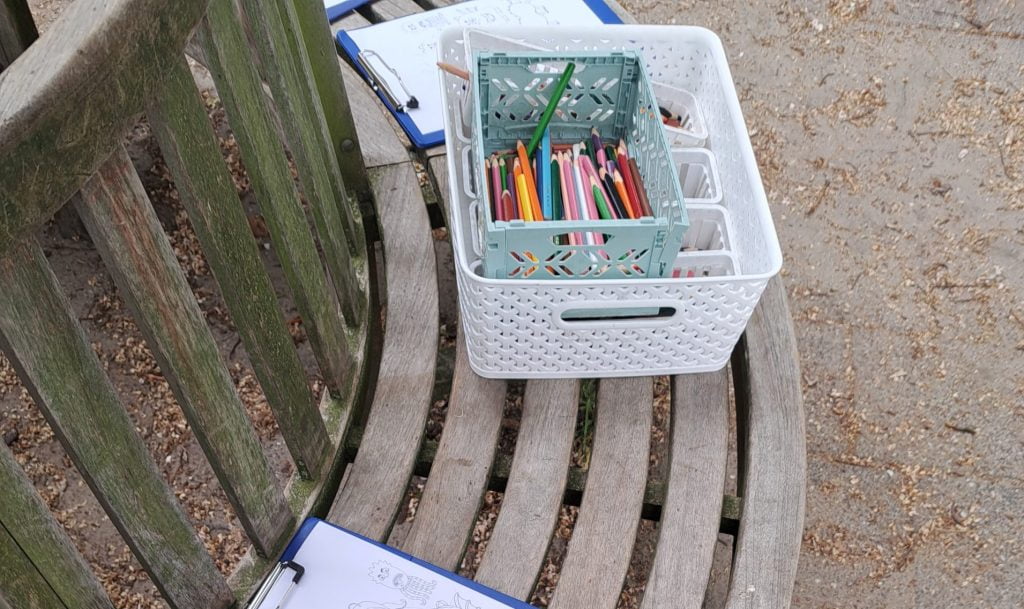
Sometimes it is nice to get the pencils and paper out as a free choice activity.
Principles of Play
Quality play experiences are built on principles that include free choice, self-directed learning, learner motivation, social interaction, and allowing children to challenge themselves and take risks (Duffy, 2007). Children often repeat games and play patterns, allowing them to develop physical and cognitive skills over time (Santer and Griffith, 2007).
Fasting (2019) states that ‘nature environments allow children to be the authors of their investigations and play—the architects of their own body and brain’ (p.7). Outdoor learning play experiences are most effective when self-directed, allowing children to be inspired by their places of play while giving them a choice to set the narrative for their games and interactions. and discover their learning motivation (Duffy, 2007). Some children may be interested in flora and fauna; others may focus on the social aspects of a game or the physical task they engage in.
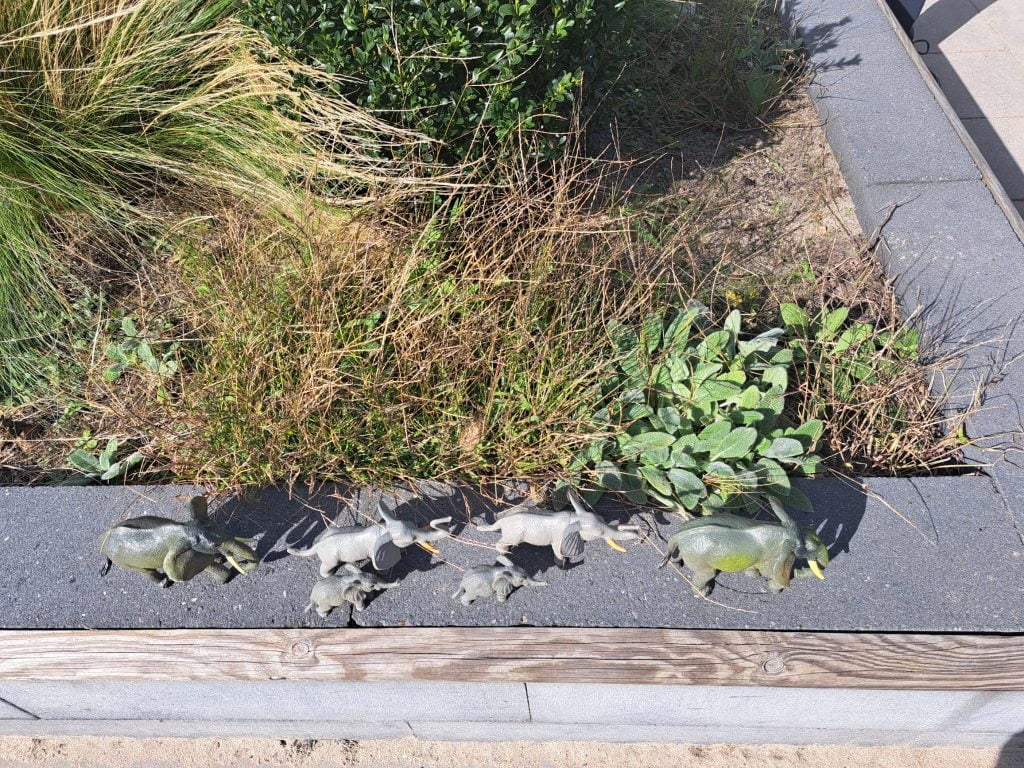
Learners use the playground as a setting for their free play.
As an educator, my role in play is to engage with the children to help them process their learning and provide equipment and tools to fit into individual learning narratives. I often witness the early years teachers asking children open questions about their play, and I feel that this is a skill I need to develop. Understanding how to talk to young children at a level they understand and developing a knowledge of the individuals you teach is important, as children will each respond differently to the educator’s approach.
It is important to be empathetic and support children in their play. Open questions facilitate further learning by encouraging the development of children’s communication skills and fostering a deeper understanding of their learning by talking through activities, explaining rules, and reflecting on their experiences. There may also be opportunities to prompt mathematical skills through counting and identifying shapes. In lesson planning, an educator can allow for the children’s impulse to play, and learning goals can be implemented through play and exploration of their play (Santer and Griffith, 2007).
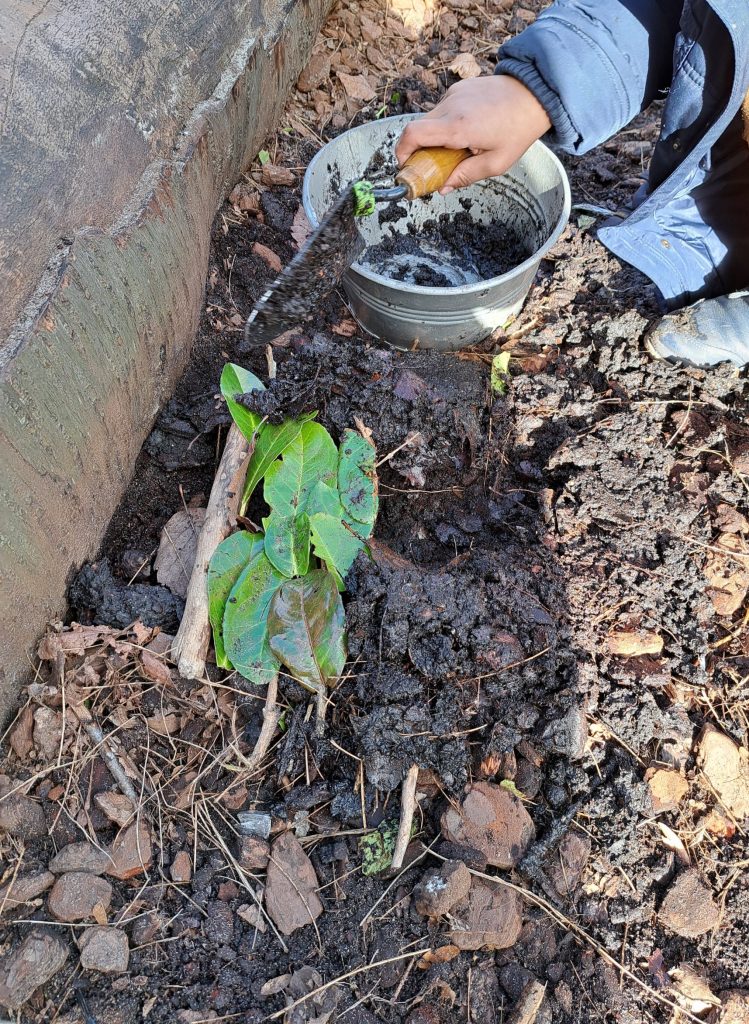
Learner enjoys playing with natural materials.
An educator can also support children as they challenge themselves and take risks with their play. Offering learning environments where they can take risks and experiment allows children to be adaptable and find solutions to different challenges (Duffy, 2007). When children change their strategies to incorporate new information, it aids their cognitive development.
Play is a powerful tool for developing a child’s social and emotional well-being. When partaking in play, children demonstrate their feelings and inner needs, develop their sense of who they are, solve problems and deal with conflicts. Play helps build social and communication skills. Play can also offer powerful tools to help soothe children’s trauma or issues with their own lives that they struggle with (Santer and Griffith, 2007). Free play in nature allows children to learn the rules of society and build relationships and, consequently, their self-esteem (Knight, 2013).
Resources
Discover The Forest has assembled a collection of resources for you to pair with our activities, or use by themselves
Staying Safe & Connected While spending time outdoors as a family, be sure to continue practicing social distancing alongside the following tips to keep our families and green spaces safe.
Take Action Get involved and help conserve our forests and grasslands!
Book Of Stuff To Do! Download and print this book full of games and adventures to take with you, and discover the forest!
Walking in the Forest - Project Learning Tree Family Guide Play detective on your next walk in the woods and discover how plants grow, age, decay, and more with these Project Learning Tree resources.
Project Learning Tree Family Guide Be inspired to take personal responsibility for improving the environment. The goal is for children to "learn by doing."
Thank You, Trees! Trees are an important part of our world. Pick a tree in your yard or neighborhood and write a thank you note to your tree for everything it does.
Habitat Sweet Habitat What do animals do when they are hungry, thirsty, or tired? Find out in this PBS KIDS Plum Landing activity!
Sound Safari What kinds of sounds do you hear around your neighborhood? Try this PBS KIDS Plum Landing Sound Safari activity to find out!
NatureWatch Get outside and enjoy nature with apps, links, and other resources from the NatureWatch site!
Hands on the Land Be part of a national network of field classrooms outdoors.
Jr. Ranger Programs The Jr. Ranger Programs use Forest Service science and practices to encourage children 7 through 13 to enjoy and appreciate nature.
How is the forest like a city? Find out as these kids from PBS KIDS Plum Landing explore the roots and canopies of a local forest.
Forest in the City Can there be a forest hiding inside the city? Watch this PBS KIDS Plum Landing video with Ranger Jesse and find out!
Biodiversity Bingo How many different kinds of plants and animals live in your neighborhood? Find out by trying this PBS KIDS Plum Landing scavenger hunt!
Benefits Read about the many ways you can benefit from nature!
Ecosystem Find out about the different elements that make a forest, a forest.
FSNatureLIVE No matter where you are in the world, visit the USFS’s LIVE programs for exciting, on-site learning about bats, butterflies, climate change, wetlands, and more!
Educator Resources Find out more about grants available for students and classrooms.
Leave No Trace Escape to the forest and enjoy yourself, but leave it as you found it.
Rules of the Forest Here’s a list of do's and don'ts for the forest.
Agents of Discovery Agents of Discovery is a gamified way to get kids active and engaged in the world around them. The app uses geo-triggered, augmented reality to encourage real-world exploration of the forest and its natural features.
We also compiled our science experiments for kids with nature themes together today. It is hard to believe we have so many activities on nature science for kids!
Science and discovery walks through the woods can be gruelling if you really do not love being in the wods. So I have an article to help with that.
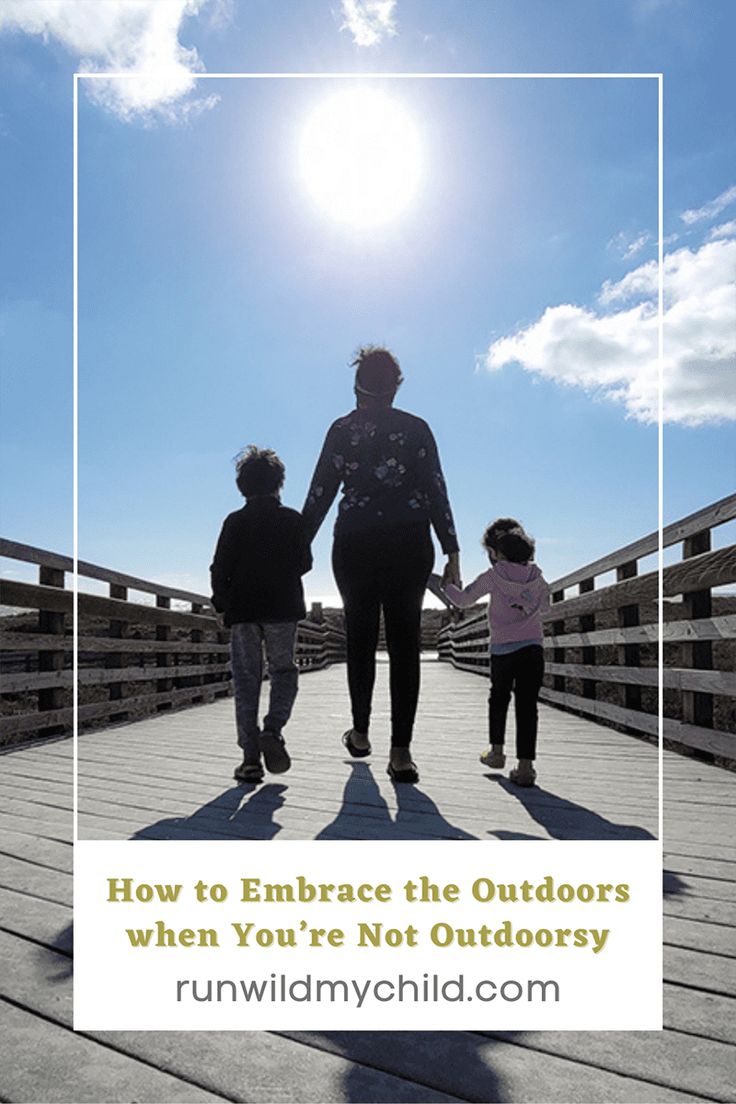
How to Embrace the Outdoors when You’re Not Outdoorsy
Getting started in nature
Sometimes it can be hard to know how to connect to nature. It can be difficult to get started. And many of us with mental health problems face barriers that might stop us connecting with nature.
This page covers:
This page is part of our guide to:
You don't need to have gardening skills or knowledge to get involved in garden projects. Just a willingness to get your hands dirty. I just love weeding and shovelling compost!
Taking the first step
When we're feeling low or unwell, it can be hard to find the energy to go outside or try new things. Even if we know something might make us feel better, it can still be difficult to find the motivation to get started.
You might feel nervous about going outside, especially if you're used to spending a lot of time indoors. You might be unsure if it's the right time to start something new. Or you might be worried it won't work for you.
Here's some things you can try:
Start small. It's the quality of our time with nature, not the length of time, that can boost our mood. Try spending 5 minutes paying attention to nature. Our wellbeing ideas to try in nature page includes suggestions for outdoors and in your home.
Do what works for you. Try different nature activities to find things you enjoy and that you can fit into your daily life. Try not to worry if something doesn't work for you.
Do things you find relaxing. You might like to sit under a tree, look at the stars or do art or creative activities in natural spaces. See our pages on relaxation and mindfulness for more tips.
Work with your highs and lows. Think about which times of day you feel most energised, and when you find things harder. For example, if medication side effects make you tired in the mornings, plan your activities for later in the day.
Remind yourself what works. Each time you have a good experience in nature, write down how you feel or take a picture. Keep your notes or pictures on your phone or in a diary. You can then try using them as motivation for next time.
Try not to judge your feelings. When we worry about our thoughts and feelings, it can be harder to take notice of our surroundings. Try to focus on what you can see, hear, smell, touch or feel. And try not to worry if you don't feel better straight away.
Set small challenges. This can give you a goal to focus on. It can also help you regularly connect with nature. For example, you could try to notice 3 things in nature each day.
I discovered that when everything around us seems frightening, we can fight back with a concentration on even the smallest bits of joy – a gentle breeze, or a particularly nice blade of grass.
Accessing nature
It can be hard to know where to find nature. Many of us don't have a garden. And those of us who live in cities or towns may not live near a park or green space.
You may be worried about the cost of transport, plants or gardening equipment. You might get tired easily or have difficulty doing physical activities. And green spaces are not always accessible for everyone.
Here's some tips and suggestions for you to consider:
Look for nature wherever you are. Nature is everywhere, even in busy towns and cities. Walk around your local area or look out of your window and take notice of trees, birds, insects, the sky or the weather. See The Wildlife Trusts information on urban wildlife.
Look for local green spaces. Your local council may have information about parks or nature reserves near you. You can find your local park on the GOV.UK website. Or you could use a walking app to find nearby walks.
Ask your local Mind. Your local Mind may be able to give you details of local projects or ways to connect to nature in your area. This might include organised groups so that you can meet other people.
Look for accessible green spaces or activities. Euan's Guide has disabled access reviews for places across the UK, including parks and green spaces. The Wildlife Trusts website has information on accessible nature reserves. And there's ideas for accessible walks in the National Trust's top accessible walks and The Outdoor Guide. For information and tips for disabled gardeners, visit Thrive's get gardening.
Bring nature indoors. If going outside isn't possible or feels difficult at the moment, you could try ways of bringing nature indoors. Our wellbeing ideas to try in nature includes some suggestions.
Look for free swaps or giveaways. For example, you might be able to swap spare seeds with other gardeners at a seed-swap event.
It can be difficult to access some types of nature activities if you don't have the money to pay for them. Our useful contacts page lists organisations that provide different nature-based activities. You could check their websites or contact them to find out which free activities.
If you're worried about money, our information on money and mental health may also be helpful.
I would encourage everyone to look out for wildlife in their own local environment. Even in a busy city it can be surprising how many species of plants and animals are there if you take a moment to pause and look around.
Hospitals and green space
If you're staying in hospital, ask the staff if there's a garden you can access.
Preparing to spend time in nature
There may be other practical issues to consider. You might be worried about safety. Some parks or green spaces may feel unsafe. You might be worried about crime, harassment or abuse, especially if you've had bad experiences in the past.
You might feel like spending time in nature is not for you. Or you may feel unwelcome or out-of-place in the countryside or other green spaces. You may not have the time if you're busy with work, studying, childcare or other responsibilities.
Here are some suggestions for you to consider:
Ask for support. For example, if you feel anxious in new places or social situations, you could ask someone you trust to go with you at first.
Plan ahead. Check the weather forecast and think about things you might need. This could include warm or waterproof clothing, sun protection, a water bottle or a map.
Fit nature into your routine. Spend time in nature doing things that you already do. For example, you could make a phone call while going for a walk in nature. Or you could study, work or exercise outdoors rather than indoors.
Think about timing. If you live in a busy area, you may want to go out at a time when it's quieter. Or you may feel safer going out when there's more people around.
While in the forest, you can engage in activities such as hiking, camping, birdwatching, and photography For a more hands-on experience, you can go mountain biking, try watersports,
learn bushcraft skills, or forage for wild edibles.
For leisure, you can have a picnic, stargaze, or enjoy forest bathing.
For Active Exploration & Recreation
Hiking and Trekking: Explore trails by foot, from easy walks to challenging routes, or go backpacking.
Cycling: Enjoy the forest from a bike, with options ranging from casual rides to difficult mountain biking trails.
Camping: Spend a night or more in the forest, often at designated camping sites.
Watersports: Depending on the forest, you might find opportunities for canoeing, kayaking, tubing, or other water-based activities.
Horseback Riding: Some forests offer trails for horseback riding.
For Nature Observation & Learning
Birdwatching: Look for different species of birds, using binoculars and a spotter's guide to identify them.
Animal Tracking: Follow animal tracks to learn about the creatures sharing the forest.
Nature Journaling & Photography: Document your discoveries by creating a nature journal or taking photographs of interesting plants, animals, and scenery.
Plant & Tree Identification: Learn to recognize different types of trees, plants, and their uses.
Geocaching: A treasure hunting game where you use GPS to find hidden containers.
For Relaxation & Leisure
Forest Bathing: Immerse yourself in the natural environment by spending quiet time in the forest, which can be very relaxing and beneficial for your well-being.
Picnics: Enjoy a meal in the fresh air with family and friends.
Stargazing: Look up at the night sky, as forests offer a great opportunity for stargazing away from city lights.
For Creative & Bushcraft Activities
Den Building:.Use fallen branches and other natural materials to build a temporary shelter or fort.
Foraging:.Learn about wild edible foods and natural tinders, but always be sure of your knowledge and local regulations before foraging.
Bushcraft:.Practice survival skills, such as starting a fire without matches or identifying edible plants and making primitive tools.
Nature Art:.Create crafts like leaf art, or paint rocks with acrylic paint.
To avoid negatively impacting ecosystems, follow the "Leave No Trace" principles and only collect things from the woods on public lands where it is explicitly allowed. Generally, items should be inanimate, common, and for personal use only.
Inanimate natural materials
Stones and pebbles: Look for unusually colored, striped, or smooth rocks, but avoid disturbing archaeological sites. Some areas, particularly national forests, allow for the collection of common minerals like quartz, agate, or obsidian.
Fossils: Hobbyists can sometimes collect invertebrate and plant fossils on Bureau of Land Management (BLM) lands. However, vertebrate fossils and commercial collection are typically prohibited without a permit.
Petrified wood: On BLM lands, you can collect up to 25 pounds plus one piece per day for personal use, with an annual limit.
Feathers: You may find feathers shed by birds. Federal law prohibits the collection of feathers from most native birds, but collecting shed feathers from non-native species like pigeons or starlings is often legal. It's best to check local regulations.
Shed animal antlers: If you are lucky enough to find a shed antler, check local regulations. Many states allow collecting them for personal use.
Leaves, seeds, and berries: These can be collected in small, personal-use quantities on BLM lands, but never pick protected plants.
Branches, cones, and bark: Fallen or dead wood can be great for art or firewood. Permits are often required for significant amounts or for cutting standing trees.
Owl pellets: These regurgitated pellets of fur and bone are fascinating to dissect and examine for small animal skeletons.
Shed snake skin: The entire shed skin of a snake is a unique and delicate find.
Geology: Keep an eye out for a piece of pumice that floats, or a rock with unusual patterns or sparkle.
Man-made artifacts (sometimes permissible)
Trash: Pack out any litter you find. While not a souvenir, it is a valuable thing to "save" from the woods.
Antique items: In some areas, searching for modern items with a metal detector is allowed. However, taking historic artifacts like old bottles, tools, or coins from historic sites is prohibited and can carry severe penalties.
Before you go
Know the rules: Regulations vary widely by location and land designation. Check the rules for federal lands (like National Forests, BLM land) and state parks. National Parks have the most restrictive rules, with visitors typically required to "leave what you find".
Get a permit if necessary: Some activities, like collecting a large amount of firewood or specific materials, require a permit.
Leave no trace: Remember to leave your surroundings as you found them, or better. This includes leaving behind any living plants, flowers, or mushrooms you find.
Woods and Camping Safety for the Whole Family
A family camping trip can be a lot of fun with a little preparation. Knowing everyone's limits, planning ahead, and packing the right items will help your adventure come off without a hitch.
Here are the basics of woods and camping safety.
Planning Ahead
If you're not skilled in the outdoors, begin your adventures by taking day trips. But even then be aware of camping safety issues, such as insect bites and stings; plants that can cause rashes and allergic reactions; exposure to heat, wind, water, and cold; and getting lost.


Once families feel comfortable with their camping skills, they may want to plan a few days or a week in a wilderness park. But first, get information from park rangers, read guide books about the terrain and weather, and talk with campers who've been there.
Common Camping Dangers
One common mistake made by camping families is not being ready for seasonal changes. Storms blow in and out during all seasons, and there can be sudden shifts in temperatures in spring and fall, particularly on high mountains. Precipitation and wind lead to rapid cooling, especially when temperatures drop at nightfall.
Excessive heat can be a problem for young children, whose sweat glands are not fully developed until adolescence. On hot days, hike in the cooler mornings and evenings. During the day, spend time in shaded areas. Wear skin protection whenever you or your kids are exposed to the sun, including hats, sunscreen, and cotton clothes.
Another common problem is getting lost. Teach your kids how to recognize landmarks at the campsite and on hikes. While hiking, encourage them to turn around and look at the trail to familiarize themselves with their surroundings. Teach them to remain where they are and stay calm if they are lost. Kids should wear whistles (whistles can be heard farther away than the human voice) and know the universal help signal of three blows or loud sounds. Try to take your cellphone along in case you can get a signal.
Before your trip, look for a local class or go online to find out more about map reading and finding directions. For wilderness trekking, always carry a topographical map and compass.
Proper Clothing
To protect against sudden temperature and weather changes, think layers. Layers of clothing(tank tops, long-sleeved shirts, sweaters, etc.) made of polyester, polypropylene, and wool let you add or remove clothing as needed. To protect against rain and wind, bring breathable, lightweight waterproof jackets and pants.
All family members need comfortable hiking shoes to prevent blistering. When hiking, tuck pant cuffs into socks and boots to protect against ticks. Kids should wear brightly colored clothes to increase visibility. Caps or hats will help guard against the sun and insects.
Setting Up a Campsite
Natural hazards, such as forest fires and fallen trees, are less likely to be a problem at campgrounds that you can reach by car. But other dangers lurk, such as broken glass, discarded needles, and other hazardous trash.
Scout the area before setting up a tent. In wilderness areas, look for signs of animal and insect use; for example, yellowjacket wasps build their nests in the ground. If berries are plentiful at a site, bears may forage for food there.
To build a firepit, look for a clearing and previous firepits. During fire-hazard periods and dry seasons, use portable stoves rather than campfires.
Drinking the Water
Assume that all wilderness streams and creeks are potentially contaminated water sources due to domestic and wild animals. Giardia lamblia, a common parasitic contaminant, can cause nausea, bloating, gas, stomach cramps, and explosive diarrhea leading to dehydration.
If you are can't bring bottled water with you or your supply runs out, iodine is an inexpensive and easy way to purify water (you can buy iodine tablets that dissolve in the water; check the expiration date before using). You can also use water filters. Boiling is an excellent method for purifying water, but takes a lot of time, energy, and resources; also, proper boiling times can vary based on elevation.
Food Supplies and Foraging
Plan your meals according to how many days you will be on a trip, and then bring extra food. Pack plenty of portable foods, such as granola bars, packaged trail mix, breads, peanut butter, fruit, and other camping-friendly foods. You can even buy dehydrated meals that only need water added to them.
It's best to leave foraging for berries to the animals because it's easy to mistake toxic berries for edible ones that can make someone pretty sick and ruin the entire trip.
Plants and Insects
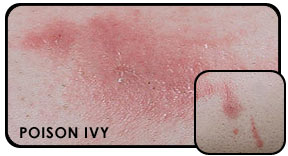
Common plants to be wary of are poison ivy, oak, and sumac. Show your kids pictures of these plants before your trip, and if in doubt, avoid touching any unknown plants. Dress your kids in long-sleeved shirts and pants to protect the skin from exposure to plants that may cause allergic reactions. You can apply protective products before hiking that will act as a barrier against the oils of the plants.
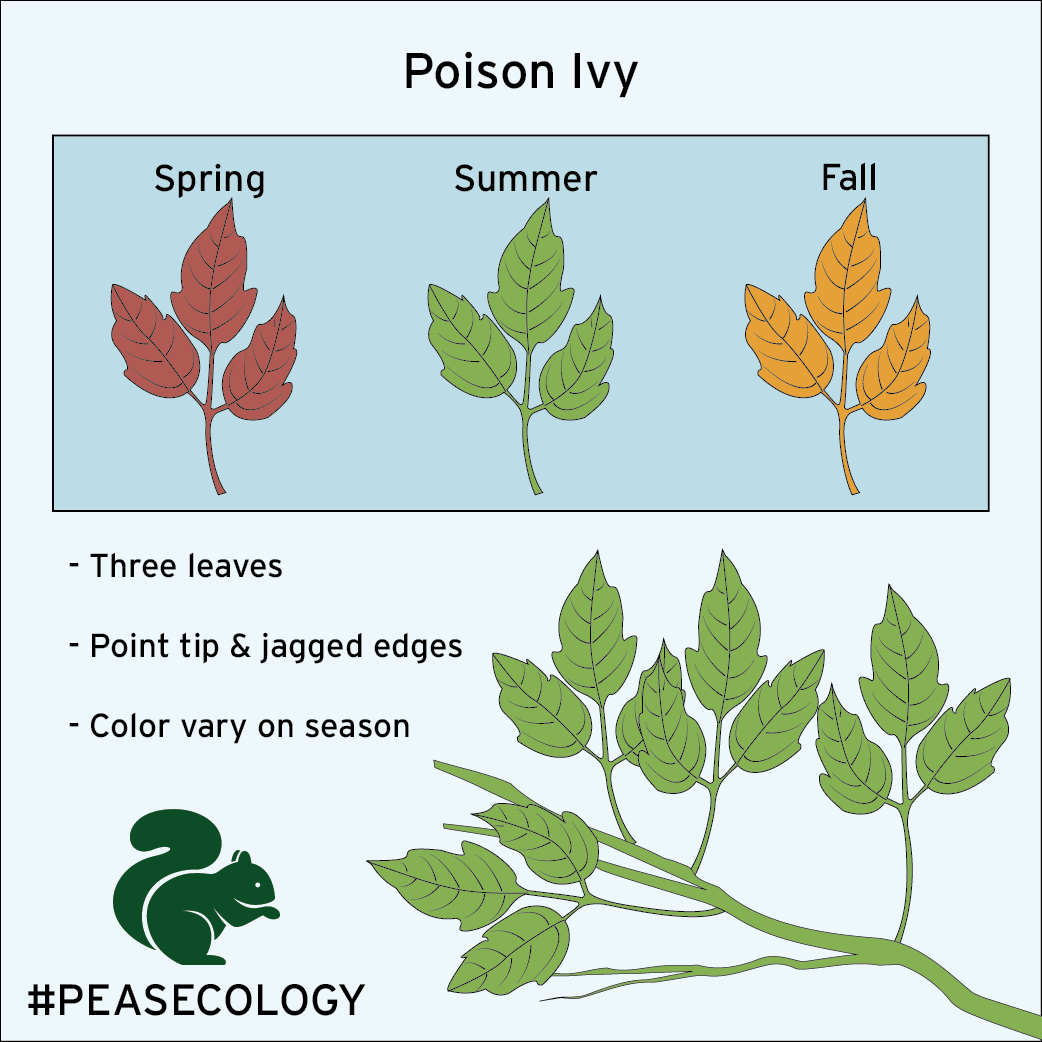
Any area that comes in contact with a poisonous plant should be washed immediately with cool water to help remove the oil that causes the allergic reaction. Calamine lotion or hydrocortisone cream (1%) may help to stop the itching that's common with poison ivy.

LINK
Antihistamines taken by mouth are effective for allergic reactions or itchy rashes — from contact with poison ivy to mosquito bites to bee and wasp stings. Use citronella-based products to repel insects and put it on clothing instead of skin whenever possible. Repellents containing DEET also can be used. Choose a repellent that contains no more than 10% to 30% DEET; in higher concentrations, the chemical (which is absorbed through the skin) can be toxic. Be sure to follow the directions on the label. DEET-containing products should not be used on children younger than 2 years old.

Another camping concern is ticks, which can carry several types of infections, including Lyme disease. Check your kids at the end of each day for ticks. Examine places where ticks like to hide, like behind the ears, in the scalp, under the arms, and in the groin area.
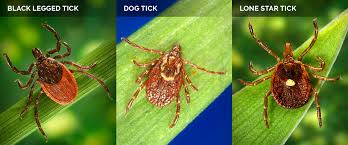
Be aware of the bulls-eye rash seen in some people with Lyme disease. This red ring may grow to about 2 inches in diameter around the bite about a week after the tick bite.
Protecting Against Animals
Teach kids that animals in the wild are strong and will defend themselves and their young if threatened. Kids should not approach wild animals, even small ones, and should never feed them. Don't leave kids unsupervised — especially young children. Instruct them to stay calm and call loudly for help if they encounter a wild animal.
What to Pack
Essentials for every camping trip include:
a map of the area
a compass
a flashlight with extra batteries and bulbs
extra food
extra clothing, including rain gear
sunglasses and sunscreen
a pocketknife
a folding saw
matches in waterproof container
candles or fire starter
plenty of clean drinking water
insect repellents
full water bottles for hikes
a waterproof and lightweight tent
ground insulation for sleeping
a blanket for emergencies
a signaling device, such as a whistle, mirror, pocket flare, walkie-talkie, or cellphone
duct tape
50 to 100 feet of nylon rope
First-Aid Kits
Bring a first-aid kit that includes:
adhesive and butterfly bandages
self-adhesive roller bandages
sterile gauze pads
a cold pack
splinting materials
large wound dressings
blister dressings
nonadhesive dressings
cloth-based adhesive tape
elastic bandages (Band-Aids)
thermometer
non-latex gloves
large plastic bag
safety pins
scissors
tweezers and needles (to remove splinters or ticks)
topical antibiotic cream (such as Neosporin)
oral antihistamine (such as Bendadryl)
medications for pain or fever, such as acetaminophen or ibuprofen
hydrocortisone cream (1%)
alcohol pads
a liquid antiseptic soap to clean wounds
Knowing how to make a splint in case of injury is also useful and can be learned in first-aid classes.
Camping Emergency Basics
Before your trip, notify friends and families of your destination and time of return. And sign up at park registers before and after wilderness treks.
In the case of an emergency, the most important thing to do is to remain calm. If your kids have whistles and were instructed to wait in a sheltered area if they get lost, you should be able to find them more readily. If you bring a cellphone, make sure it's charged and consider bringing extra batteries.
Always stay on the safe side when setting boundaries for family camping. The more remote your location, the more care you should take in choosing your activities. Survey campsites for riverbanks and cliffs. Check out climbing trees for dead branches and moss, both of which cause falls.
So do your homework before your trip. Good preparation for camping lets the whole family enjoy the great outdoors safely.
24 Activities to do in the Woods with Kids
1. Build a Stick Maze in the woods with kids…..
have the children navigate themselves out of it. A stick maze is a great woodland activity for kids.
2. Learn how to plait grass by Making a Fishtail Braid.
This is a great woodland activity for children.
3. Spot a Nest in the forest with kids!
For fun things to do on woodland walk with kids – use this cute Nest Nature Hunt to keep kids observant! Fancy bird watching with kids? Check out this FREE printable Bird Watching Book from Buggy and Buddy.com
4. Try Map Reading or Geocaching in the woods with kids
Playing with maps and compasses can be a lot of fun in the woods! Try out these map activities.
5. Play some Games in the woods with kids!
Try some of our games we love to play in the woods with kids! There are lots of different games here for playing in the woods with toddlers or older kids.
6. Make a Leaf Mandala in the forest
A good craft idea for the woods during Autumn (but would work any time of year) is to make a Leaf Crown or a leaf mandala.
7. Make a Nature Bracelet
Another collecting one – try making a Nature Bracelet using sticky tape. Our kids had lots of fun with this one and kept their bracelets on all day from Kid Citizen Blog! You can also see a Nature Belt idea here from How We Learn Blog. This is a fun activity to do in the woods with kids.
8. Play the Number Art Challenge
Once you’ve returned with lots of lovely nature materials. How about setting your child a Number Art Challenge? A great way of getting children to think about numbers and spatial reasoning. This is such a clever idea that I can’t wait to try out with our kids from Mosswood Connections.
9. Make Pot Pourri
Another lovely idea to make with your collected woodland is Pot Pourri – check out this recipe from Multiples Mom.
10. Do some Leaf Crafts for Kids
If you find yourself with a surplus of leaves at the end of your walk, try making our Autumn Leaf People or try one of our Leaf Crafts for Kids
11. Scavenger Hunts!
Scavenger Hunts are a Fantastic Way to help engage small people when out exploring nature. We tried this recently with my friend Laura and her kids. A scavenger hunt = 6 happy kids – it worked a treat! Here are some of my favourite Nature Scavenger Hunts. First up – is a FREE printable super scavenger hunt from Picklebums. The Father Fitness Nature Trail is also a great visual printable, suitable for younger children too.
12. Build a Den
Ever try building a Stick Fort in the woods? This is a fab Outdoor STEM activity that my kids have loved in their forest school classes at schools. This is a go-to activity for us and what our children are always happiest doing. Check out some great ideas for this at Littlebinsforlittlehands.com and instructions for building an awesome Stick Forest Home here, at Rainy Day Mum.
Fun things to do in the Woods
14. Climb a Tree or Find a Rope Swing
A great activity to do in the woods with kids is to climb trees or build a simple rope swing!
Things to do in the Woods with Kids
13. Storytelling
Collaborative Story Telling is a great way to help build your kiddos vocabulary and where better to do it then in an atmospheric woodland setting? See Rainy Day Mum’s ideas for collaborative storytelling here. Or you could try collecting some nature treasures and making some story art. Check out our other ideas for woodland crafts for kids.
Woodland Activity – story art for kids
Fun things to do in the Woods
15. Create a Nature Journal
Here’s an idea, I can’t wait to try out this summer as our kiddos love anything to do with reading, writing or painting! Creating a Nature Journal. I love the idea of trying out different art forms and processes in our Nature Journals – maybe we’ll try a different art form every week! If you’d like to start a Nature Journal with kids – here’s our post of Nature Journal Prompts for Kids.
16. Animal Observation
I love these Animal Observation Free Printable Logs for helping kids to learn more about animals – these are fun things to do on a woodland walk with kids by observing and recording them from Kcedventures.
17. Nature Bingo
Another FREE Printable that can be completed on the smallest of Nature walks or even in your back garden. Try out The Jenny Evolution’s Nature Bingo Game.
18. Make a Fairy House
Another activity to do in the woods is to build a Fairy House. Now, whenever we’re out for a walk, the kiddos like to collect little bits and pieces to decorate their fairy houses. I absolutely love these ideas for Nature Fairy Houses – you’ve got to take a look at this cute fairy teepee from Red Ted Art!
Fairy Houses to Make in the Woods with Kids
19. Nature Paint Brushes
Make simple paint brushes from nature and see what unusual patterns you can create. This is such a lovely outdoor process art technique with spectacular results from Messy Little Monster.
Crafts to do in the woods with kids
Crafts for kids to do in the woods
20. Bark Rubbings
And if you’re looking to explore nature in more detail – how about creating bark rubbings or going on a play-dough nature walk where you create nature play-dough creatures. Find out more how this idea works at How we Learn. Bark rubbings are fun to do with metallic crayons and black paper too!
21. Geocaching
Ever wanted to try Geo-caching? This is a great idea to keep older children engaged outdoors. Find out about our first not-quite successful geo-caching trip here! And a more successful pro how-to guide from Parenting Chaos.
22. Nature Keyring
If you should find some flowers on your woodland walk, then why not try making a perfect little keepsake – a woodland flower keyring.
23. Hapa Zome
Another flower idea – but can also be made with why not try Hapa Zome in the woods?
24. Woodland Arts and Crafts Journal
My last idea for fun things to do on woodland walk with kids really is a – ‘save the best idea ’till last’! I recently created this lovely Nature Adventure Journal. It’s a whole host of Nature Art and Craft materials in one pack. You simply head on a woodland walk, collect lots of nature materials and use the printable to document your adventure.
Foraging in the woods can provide you with materials for craft projects, home decor, and even survival. However, it is crucial to forage responsibly by only taking fallen or abundant items and positively identifying any wild foods before consuming them.
For crafts and home decor
Branches and twigs: Collect fallen pieces to create DIY wall art, picture frames, or rustic coasters. Larger branches can be arranged in a vase or made into a wooden coat rack.
Driftwood: If you're near a creek or river, look for driftwood to use for unique sculptures or a rustic wall hanging.
Pinecones and acorns: Gather these for seasonal wreaths, decorative bowl fillers, or fire-starters.
Unusual rocks and pebbles: Look for interestingly shaped or colored stones to create mosaics or decorate planters.
Fallen leaves and flowers: Create a collage, press them for a nature journal, or use them to make a suncatcher with clear contact paper.
Birch bark: This has a striking, rustic look and can be used to decorate a nature journal or other craft projects.
Feathers: Finding a feather can be a special discovery. Use them to embellish a craft project or simply display them as they are.
Foraging for wild edibles Warning:
Forage responsibly and always positively identify wild edibles with an expert before consuming anything.
Berries: In late summer and fall, you may find edible berries such as blackberries, raspberries, elderberries, or cranberries.
Nuts: Look for walnuts, pecans, and acorns in areas with walnut, hickory, and oak trees. Some are more bitter than others and require specific preparation.
Wild greens: Dandelion greens, stinging nettles, and lamb's quarter are nutritious wild greens found throughout the growing season.
Mushrooms: Species like morels, chanterelles, and oyster mushrooms are popular among foragers. Never eat a mushroom unless an expert has identified it, as poisonous varieties are easily mistaken for edible ones.
Tree sap: In the spring, you can tap maple trees for sap to make syrup. Other maples, and even birches, can also be tapped for edible sap.
Wild garlic and onions: These grow in clusters and have a characteristic odor.
Foraging & Botany for Beginners
Collecting nature for art involves gathering fallen or detached natural materials like leaves, sticks, rocks, and seeds to create temporary or permanent artworks It's essential to collect responsibly by only taking items that have already fallen, avoiding live plants, respecting wildlife and protected areas, and leaving the surrounding environment undisturbed.
Common art projects include collages, leaf rubbings, rock stacking and nature-based sculptures with artists like Andy Goldsworthy being known for their ephemeral land art.
Responsible Collection Practices
Gather naturally fallen items: Only collect leaves, sticks, petals, seeds, and other materials that have already fallen to the ground.
Avoid harming live plants: Do not pull bark from living trees or "pick" anything from a live plant, as this can harm the plant.
Be selective and respectful: Take only what you need and from different plants rather than one. Leave no trace and minimize your impact on the environment.
Do not disturb wildlife: Be mindful of any nesting birds or animals in the area you are collecting from.
Respect local laws and private property: Always check if you are allowed to collect materials, especially on private property or protected conservation sites.
Ideas for Art Projects
Arranging and Sculpting:.Create temporary arrangements like mandalas or sculptures from rocks, sticks, leaves, and petals, taking photos as a record of the piece.
Collages:.Use collected natural items to create collages on paper, cardboard, or canvas.
Rubbings and Prints:.Place natural objects under paper and rub with a crayon to capture textures, or use leaves and flowers to make prints by dipping them in non-toxic paint.
Nature Journals:.Go on walks to collect items and document them by sketching, writing, or pressing them into a journal.
Natural Adhesives:.Use things like plant-based glues, hand-made paper with foliage embedded, or natural dyes made from berries or crushed flowers.
Nature-Inspired Decor:.Create leaf garlands, lanterns, or decorate rocks and sticks for use as decorative art pieces.
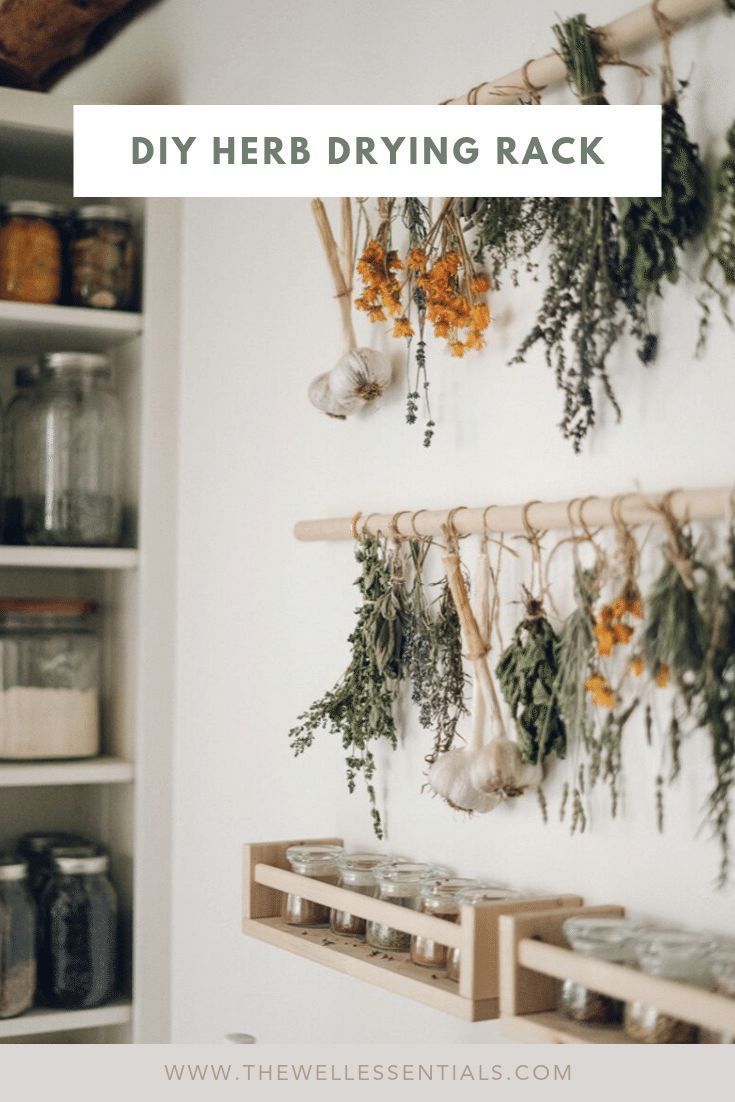
Simple DIY Herb Drying Rack For Your Garden Herbs Herbal tea blends, Homemade Tea and crafts
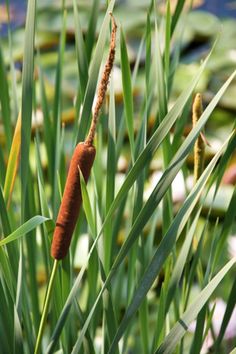
How to Weave & Preserve Cattails | ehow.com
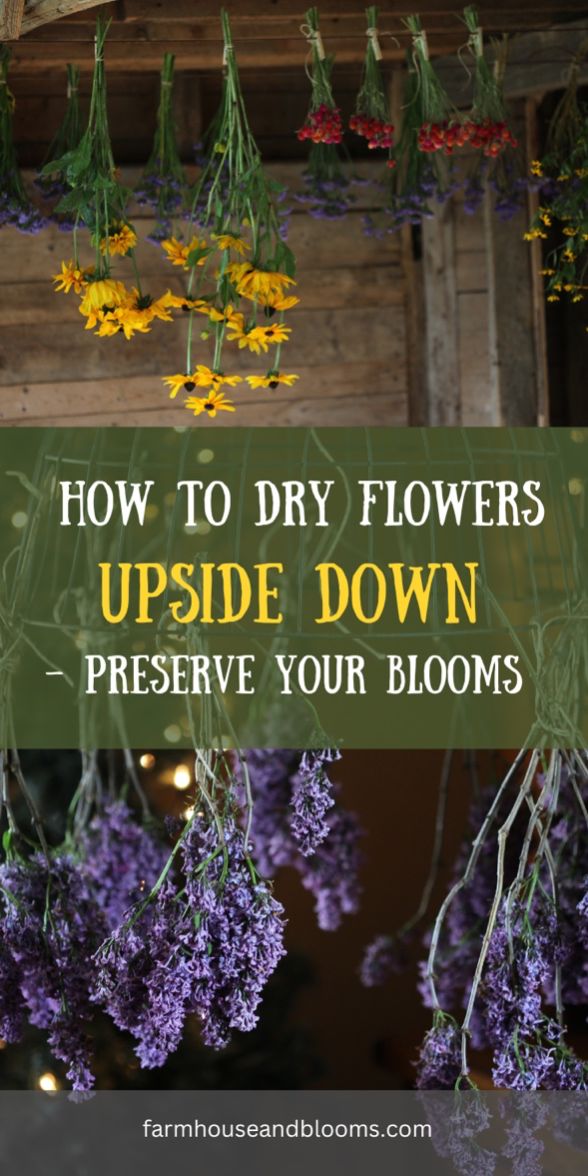
Learn How To Dry Flowers Upside Down
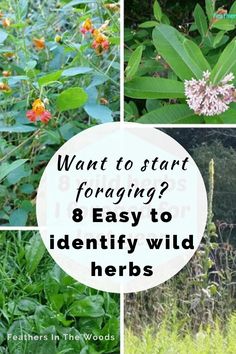
Identifying & Processing Herbs
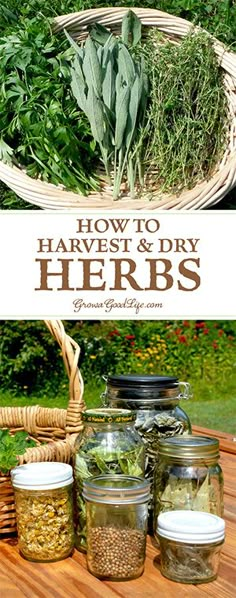
How to Harvest and Dry Herbs for Storage
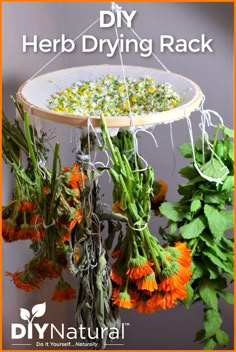
A Tutorial For A Simple DIY Herb or Floral Drying Rack
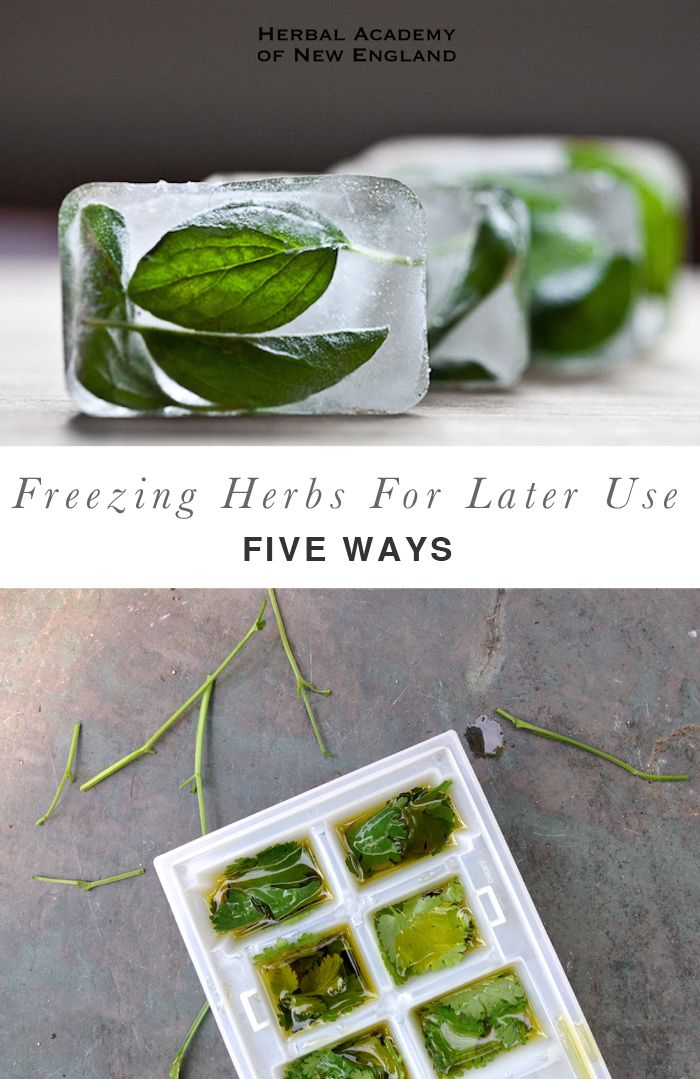
Freezing Herbs For Later Use
– 5 Ways
Freezing herbs allows you to store your fresh herbs longer,
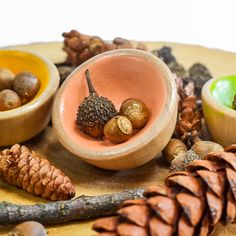
How to Preserve Nature Supplies
for Kids' Play
Learn how to easily prepare and preserve fall nature supplies like acorns, pinecones, and sticks for long-term indoor nature play, classroom study, and kids crafting. ... more
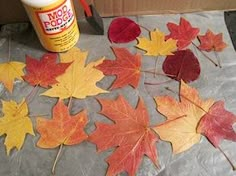
Preserve Fall Leaves & Pressed Flowers with Mod-podge
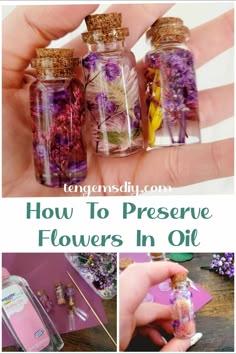
How to preserve flowers in oil
Air Drying Wildflowers & Herbs
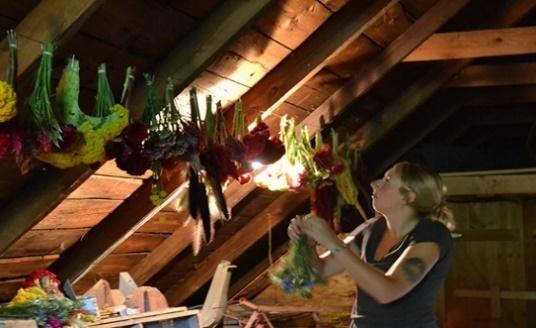
Drying is even better than pressing for preserving wild flowers. It keeps their shape as well as their color, and in some cases dried flowers are hard to tell from fresh ones.
Members of the daisy family, like daisies, thistles, and dandelions all dry well. Thistles, Field Scabious, and roses are good too. Always pick the flowers just before they are in full bloom.
Don't pick any flowers that are beginning to fade or wither, unless of course you wait until they go to seed. Poppies, Teasel, and many other seed heads look very attractive dried. So do grasses.
Continue to see how to air dry your own flowers!
Air-Drying Wildflowers
The easiest way to dry flowers is simply to tie them up in a bunch, hang them upside-down, and dry them for a few weeks.
What you will need to get started
Rubber bands
Dry airy place to hang the flowers
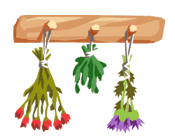
Steps
Tie the flowers into a bunch with a rubber band. Don't put more than 8-10 stems into each bunch.
Hang them upside-down in a dry, airy place for a few weeks. A linen cupboard is ideal because you can hang them easily. An attic, spare room, or garage is also fine, but you will need to fix up a pole or line to hang them from.
If you’re looking to get your kids to play outside more – there are lots of easy nature journal activities to inspire kids to explore nature’s wonderland from cloud watching and scavenger hunts to designing their own garden and rock pooling. This is a fun and easy nature workbook with beautiful watercolour drawings encourages kids to look a little closer at nature and gently develop the lifelong habit of nature observation.
If you’d like to get your hands on this amazing Nature printable pack – click here. It doesn’t have to be used in the woods – it can be used on any kind of walk.
I’m sharing with you how you can play, create and learn using leaves, flowers, sticks, seed pods and bark. Danya Banya’s Ultimate Guide to Crafting with Flora.
You can draw or paint on flowers, leaves, bark and seed pods
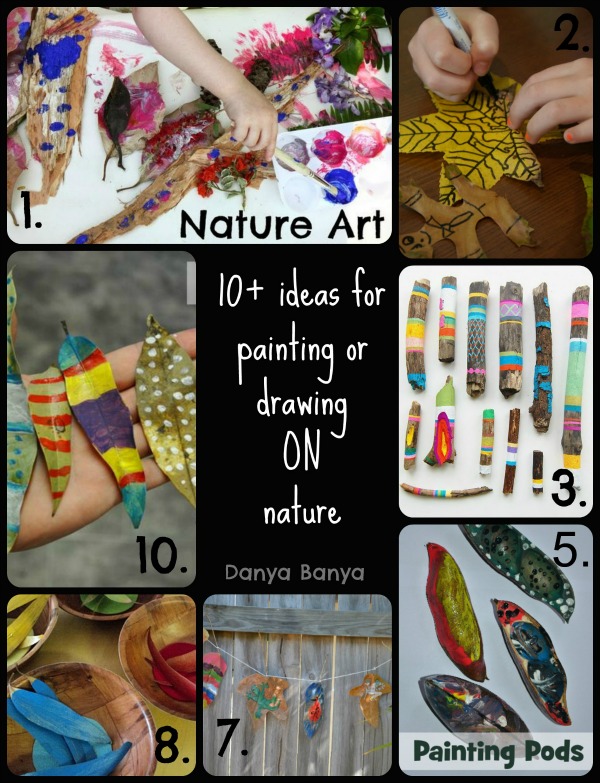
1. Nature Art by Danya Banya
2. Learning With Leaves by Laughing Kids Learn
3. Painted Sticks by Be A Fun Mum
4. Flower Stencil Spray Painting by Learn with Play at Home
5. Painting Seed Pods by Mother Natured
6. Leaf Art by A Little Learning for Two
7. Using Nature as Your Canvas by Mother Natured
8. Painted Leaves by A Little Learning for Two
9. Painting on Seed Pods by Danya Banya
10. Paint Leaves by Be A Fun Mum
You can paint with flowers, leaves and sticks instead of a brush
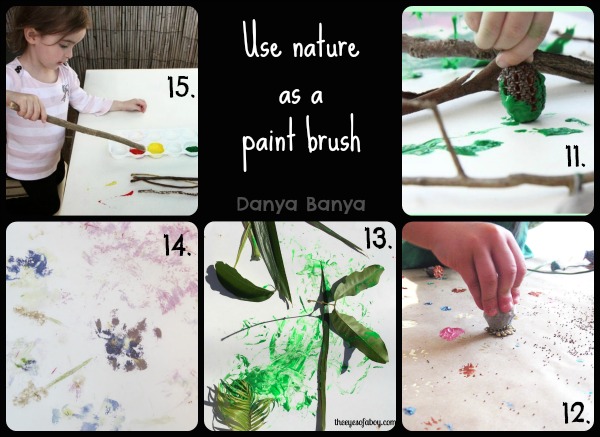
11. Painting with Nature (and a Peg) by Danya Banya
12. Poppy Seed Pod Painting by Happy Whimsical Hearts
13. Painting with Leaves by The Eyes of a Boy
14. It’s Flower Paint by Happy Whimsical Hearts
15. Painting With (and On) Sticks by Danya Banya
You can create jewellery any parent would be proud of

16. DIY Nature Bracelet by Wildlife Fun 4 Kids
17. Nature Crowns by Wildlife Fun 4 Kids
18. Threading Leaves by A Little Learning for Two
19. Nature Bracelet Making by Paint on the Ceiling
20. Floral Wreath by Be A Fun Mum
You can make an awesome collage
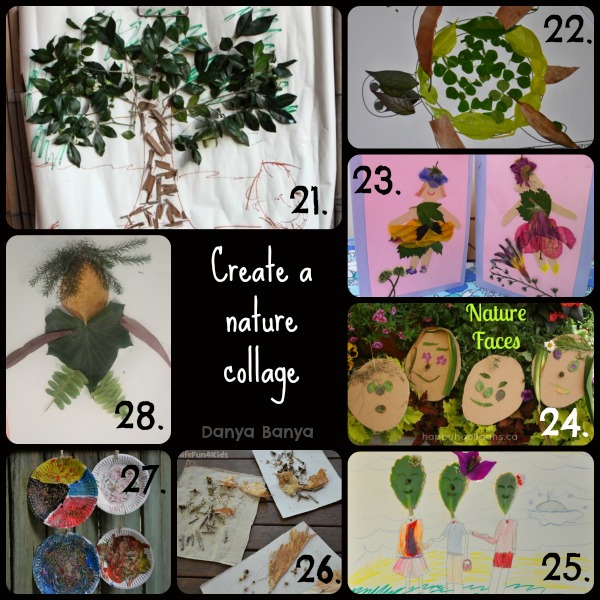
21. Tree Collage by Danya Banya
22. Colour With Nature by Wildlife Fun 4 Kids
23. Flower Fairy Cards by Just for Daisy
24. Nature Faces by Happy Hooligans
25. Leaf Art by Be A Fun Mum
26. Invitation to Play With Nature by Wildlife Fun 4 Kids
27. Nature’s Glitter by Wildlife Fun 4 Kids
28. Fun with Leaves by My Little Bookcase
You can laminate, contact, press or laminate flowers and leaves to preserve and examine them
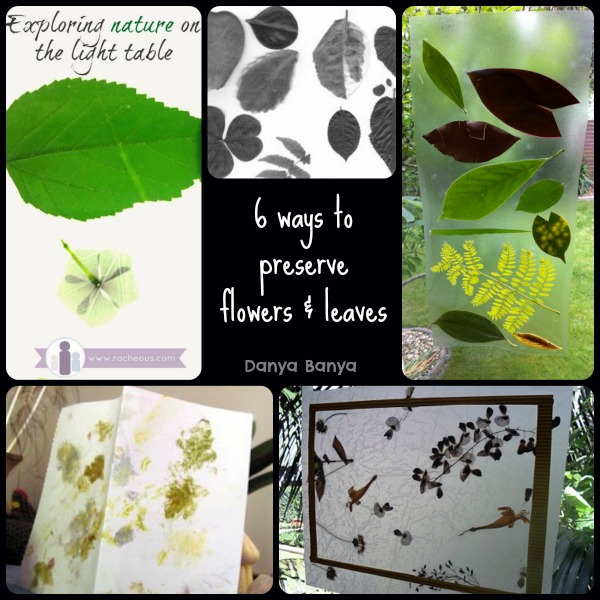
29. Nature on the Light Table by Racheous – Lovable Learning
30. Leafy Inspiration by Hinterland Mama
31. Contacted Leaves by Laughing Kids Learn
32. Wax Paper Flower Hangings by A Little Learning For Two
33. Hammer Pressed Flower Prints by Hinterland Mama
34. DIY Flower Press by Just for Daisy
You can make Martha-Stewart-esque home decorations
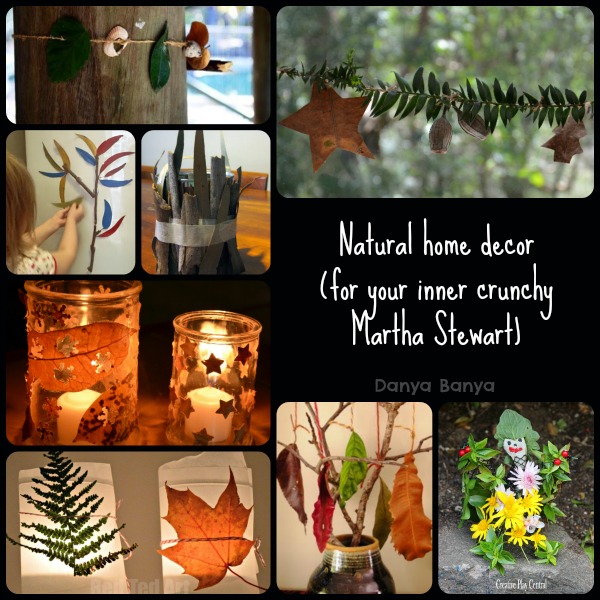
35. Gum Tree Organisers by Happy Whimsical Hearts
36. Hole Punched Nature Candle Holders by Wildlife Fun 4 Kids
37. Tree Jewellery by Hinterland Mama
38. Magnetic Tree by A Little Learning for Two
39. Creating with Flowers, Leaves & Twigs by Creative Play Central
40. Nature Fridge Magnets by Hinterland Mama
41. Jingle Sticks by Danya Banya (post coming soon)
42. Christmas Nature Garland by Wildlife Fun 4 Kids
43. Outdoor Fairy Tree by A Little Learning For Two
44. Nature Spider Web by Wildlife Fun 4 Kids
45. Sticks by Hinterland Mama
46. Simple Lanterns by Red Ted Art
47. Nature mobile by Danya Banya
You can make dolls, houses, boats etc – great for roleplay
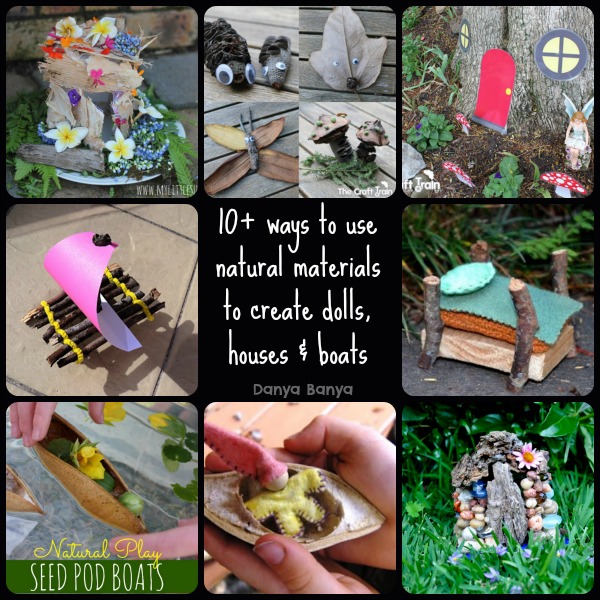
48. Bush Critters by The Craft Train
49. Seed Pod Boats by One Perfect Day
50. Stick People by Danya Banya
51. Stick Raft by A Little Learning for Two
52. Pebble Fairy House by Be A Fun Mum
53. Seed Pod Cradles by Hinterland Mama
54. Fairy Garden by The Craft Train
55. Gumnut Babies by My Little Bookcase
56. Natural Fairy House by Be A Fun Mum
57. Fairy Furniture by Hinterland Mama
58. Playing with Seed Pods by Hinterland Mama
You can add natural materials to play dough, clay and other sensory dough play
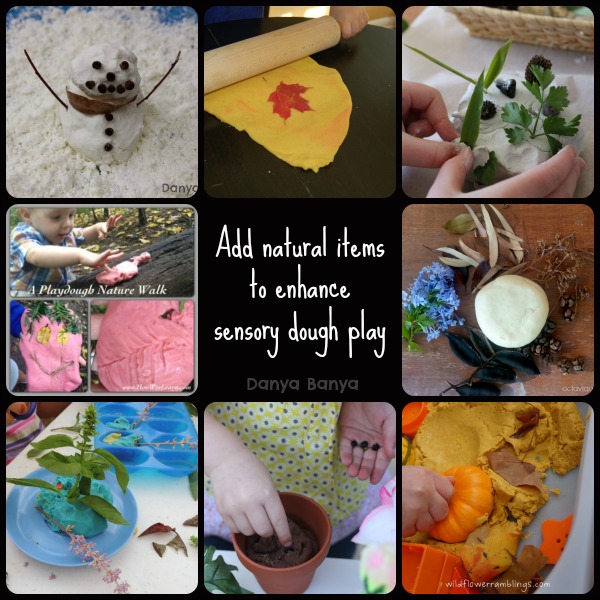
59. Play Snow by Danya Banya
60. Making an Impression by The Inspired Treehouse
61. Exploring Clay with Preschoolers by One Perfect Day
62. Garden Treasures Play Dough by Octavia and Vicky
63. Fall Sensory Bin by Wildflower Ramblings
64. Play Dough Garden Centre by The Imagination Tree
65. Sensory Florist Fun by Mummy Musings and Mayhem
66. A Play Dough Nature Walk by How Wee Learn
You can make learning fun! Flora can be used in all sorts of ways to play and learn about art, maths, science, language, colour, categorisation, the environment, team work…
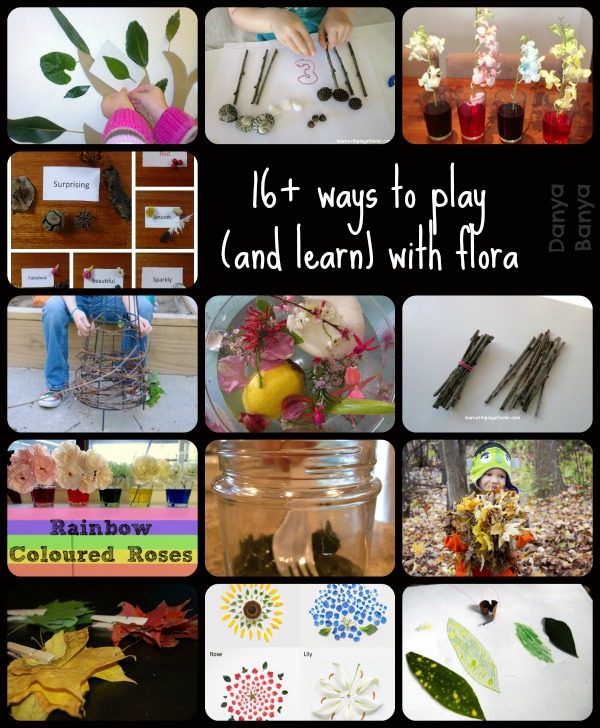
67. Leaf Matching by A Little Learning for Two
68. Numbers and Natural Materials by Learn with Play at Home
69. Flower Experiment by Ladybug’s Spots
70. Number Recognition Play by Danya Banya
71. Introducing Adjectives by My Little Bookcase
72. Patrick Dougherty Inspired Sculpture Art by Artchoo!
73. Floating Art by Learn with Play at Home
74. Counting and Grouping with Sticks by Learn with Play at Home
75. Colour Changing Roses by Octavia and Vicky
76. Why Leaves Change Colour by How Wee Learn
77. Leaf Scramble by The Inspired Treehouse
78. Rainbow Leaves by Be A Fun Mum
79. Drawing Nature by Hinterland Mama
80. Leaf Categorisation by The Inspired Treehouse
81. Deconstructing Flowers by Be A Fun Mum
82. Acorn Hopscotch by The Inspired Treehouse
Remember that you are in the animals backyard
Many different types of animals, from mammals like sloths and squirrels to birds, reptiles, and insects, live in trees. These arboreal (tree-dwelling) animals use trees for food, shelter, and to raise their young, while also adapting to life in the canopy with specialized traits like claws for gripping or prehensile tails for balance.
Examples of animals that live in trees:
Mammals: Squirrels, monkeys, sloths, koalas, opossums, tarsiers, kinkajous, and tree kangaroos.
Birds: Owls, woodpeckers, bluebirds, and hummingbirds.
Reptiles: Tree snakes, geckos, and flying dragons.
Amphibians: Tree frogs.
Insects: Bees, butterflies, ants, and bark beetles.
Why trees are important for animals:
Shelter and protection: Trees provide cover and safe spaces from predators.
Food source: Many tree-dwelling animals feed on tree flowers, fruits, leaves, and other parts.
Nesting and raising young: Birds build nests, and other animals raise their offspring in the protective environment of trees.
How animals adapt to tree life:
Specialized limbs:Opposable thumbs and toes, as well as strong claws, help animals grip branches.
Prehensile tails:Some animals, like certain monkeys and kinkajous, use their tails as an extra limb for grasping and balancing.
Gliding membranes: Animals such as flying squirrels and greater gliders have membranes that help them glide between trees.
Wildlife Viewing
Preparing for a stroll on a national wildlife refuge ? We got you.
One of the biggest reasons to visit a refuge is the chance to see wildlife — birds, bison, salamanders, you name it. National wildlife refuges are home to thousands of species. Whether you know it or not, wildlife need you to be responsible on your outdoor adventures. (Don’t worry. We promise you will still have fun).
Here are a few wildlife-friendly reminders for your next trip to a refuge — or any natural area.
The Basics
Know before you go. Plan ahead and become familiar with regulations and activities happening on the refuge. Know when and where activities like hunting or other special events are occurring. You may want to schedule your trip to avoid popular times.
Be respectful of other visitors. Sometimes, we can’t avoid times of high use. After all, the best times for wildlife viewing are reliant on the season and time of day. Remember, other visitors enjoy watching wildlife, too. Give others room and follow social distancing guidelines from the U.S. Centers for Disease Control.
Recreate responsibly during the COVID-19 pandemic.
Be a Good Steward
View from a distance. Give wildlife plenty of space. This is important for the animal's well-being and your safety. To view wildlife up close without disturbing it, use a zoom lens, binoculars or a spotting scope.
Do not disturb. Be respectful of nesting and denning areas. Avoid using amplified noises that may harm animals by frightening or misleading them. If you encounter wildlife (small or large), don’t touch — just enjoy the show. You may even see a sick or injured bird or animal. If you’re concerned, reach out to refuge staff.
Never feed wildlife. Feeding wildlife is dangerous for wildlife and people. Sharing your food can sicken an animal or encourage it to approach humans in the future, expecting a snack.
Leave pets at home. Bringing pets to refuges may be prohibited. Please check an individual refuge’s website to learn whether your pet can tag along. When welcome, pets are required to be on a leash. Regardless, leaving your furry companions at home may be a good idea because they may scare small animals or become prey for larger ones.
Pack it in. Pack it out. Whether it’s the wrapper from a snack or scraps of food, be sure to keep your trash and food waste with you to dispose of at home. Make sure to look over rest areas for accidental droppings — and collect them before leaving.
Leave No Trace. The phrase refers to a framework of seven principles that guide all adventurers to have a low impact while outdoors. Many of the tips we share on this page are variations of those seven principles.
Learn more about Leave No Trace.
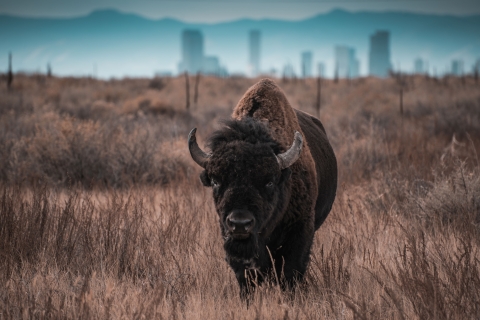
A bison at Rocky Mountain Arsenal National Wildlife Refuge, with the Denver skyline in the distance.
Pro Tips
Wildlife Drive
Wildlife drives or auto tour routes on refuges offer a fun way to view wildlife from the safety and comfort of your vehicle. While driving, keep your eyes on the road and obey signs and speed limits. If you want to stop and snap a picture or focus in on a critter, pull your car completely off the road into a designated pullout to keep wildlife and other motorists safe.
Look Closely
Not all wildlife is easy to spot. Some fascinating creatures are smaller than a quarter. Look closely for pollinators and other insects that are vital to our ecosystem and critical for larger wildlife (and humans) to thrive. Native plants make great photo subjects.
Go With the Season
Want to see a cerulean warbler? In winter, you would need to book a flight to South America, or wait for spring in the United States. But that is no reason to be discouraged. Each season offers wildlife wonders to see. A pro tip? Become familiar with the migration seasons so you know what to expect on your visit. Take what the season will give you. (Hint: Visiting in the winter? Look for tracks in the snow. What about summer? Listen for the buzzing sounds of fascinating insects like dragonflies.)
Wondering what season fits your likings? Check out:
Spring marvels on refuges
Summer sights on refuges
Fall wonders on refuges
Winter scenes on refuges
This and That
Wondering what to bring?
Water —Stay hydrated. Bonus points if you bring a reusable bottle.
Sun protection —Those rays may be fiercer than you realize. Wear long-sleeve shirts, hats, sunglasses and sunscreen, no matter the season.
Bug repellent — At certain times of the year, insects can be a nuisance. Be ready.
Binoculars or spotting scope — This is a pro’s favorite. Binoculars and spotting scopes can help you see small and/or distant wildlife that would otherwise be easy to miss. Being able to see wildlife in detail from afar also will keep you safe.
Camera — For most purposes, your phone will do. Take home the memories of your visit, share and tag us on Facebook or Twitter.
Naturalist guide — This can be a brochure or even an app on your phone. Naturalist guides are a handy tool to help you identify birds and fauna alike.
Journal — If sketching or writing is your thing, a journal can be a fun way to explore a refuge. Even if you aren’t the next Pablo Picasso or Maya Angelou, doodling and writing down observations and questions can be a fun way to learn your way around the trails.
Check out “How to Best Enjoy a National Wildlife Refuge” for more tips.
Where to Go?
Wildlife viewing doesn’t have to happen far from home. Most refuges are within 25 miles of a city or decent-size town. Find a refuge are near you. (Hint: National wildlife refuges are the best places for wildlife viewing.)
Animals of the Forest
Discover the fascinating world of forest animals and their habitat, and learn about the vital role of forests!
The forest provides a habitat for many animals. Here they find food and shelter at the same time. Each animal occupies its own space – in the crown of a tree, in shrubs and bushes or on the ground. Hedges and meadows are often located near the edge of forests.
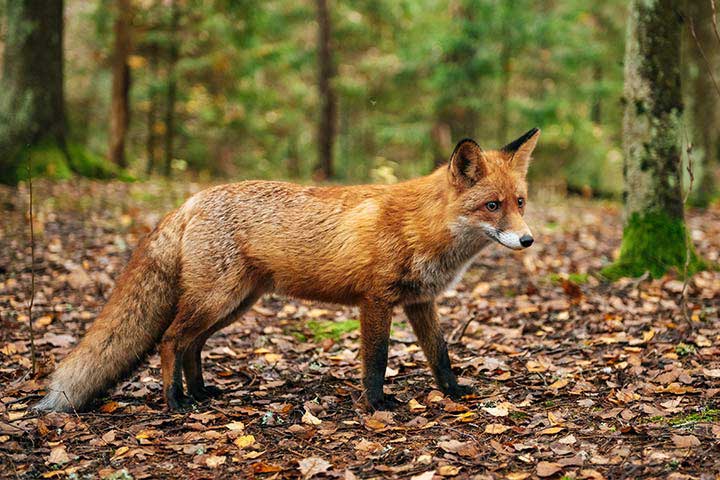
Red Fox - Photo: valdisskudre/stock.adobe.com
Forest Fact File
Species living in forests:
ca. 6,700 animal species, ca. 4,700 species of plants
A forest provides animals with:
spots for breeding and nesting
protection against the weather and animals of prey
food
ambush for animals of prey
A forest provides the environment with:
water reservoirs
protection for the soil
climate protection, “air filter”
oxygen production
Forests Are Divided into Layers
A forest is just like a building with four floors or so-called "layers": forest floor, herbaceous layer, shrub layer and tree layer. The more sunlight falls through the canopy of the tree layer, the more distinct are the shrub and soil layers. In each layer live different animals. Next time you go for a walk in the forest, you should try and find out what animals are living there.
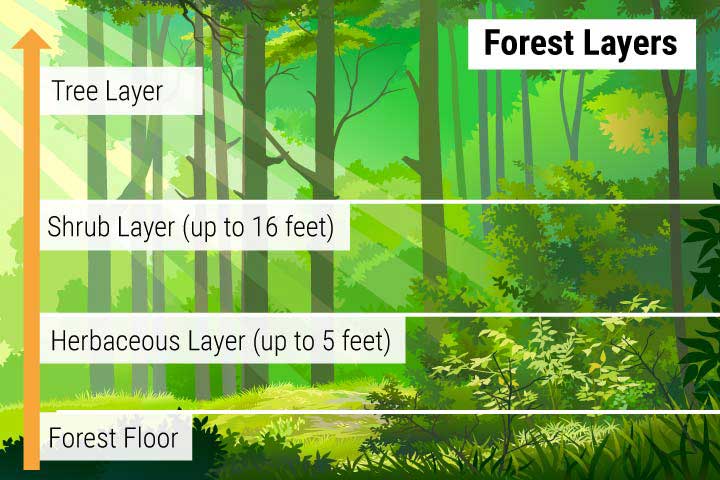
Illustration: ActiveLines/stock.adobe.com
1. Forest floor (directly on the ground)
Mosses, lichens, mushrooms and foliage cover the ground of the forest. Insects, spiders and reptiles can be found there, but also mammals such as mice and hedgehogs. The nutritious soil provides food for many animals. For animals that dig little holes and tunnels into the ground, it also offers some hide-away.
Animals in the forest floor:
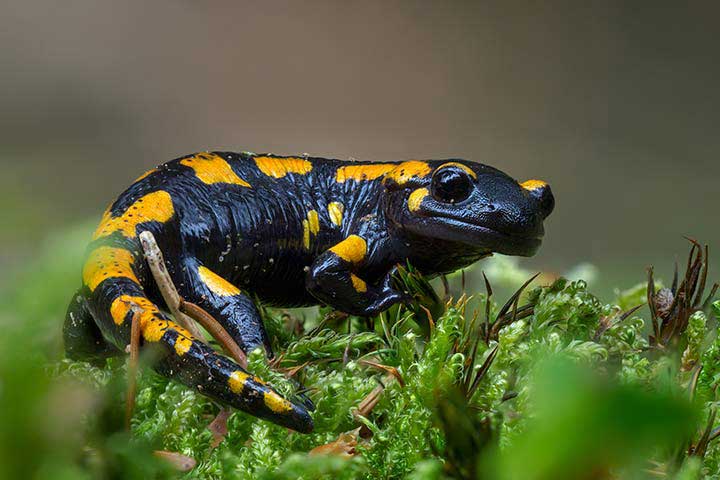
Fire Salamander - Photo: Vlasto Opatovsky/stock.adobe.com
2. Herbaceous layer (up to 5 feet / 1.5 meters)
Mainly insects live between the grasses and ferns of the herbaceous layer. The plants provide protection and food as well. The more sunlight reaches the layer through the canopy of leaves, the more plants grow and thrive in the herbaceous layer. If there is not much sunlight, the vegetation is also rather sparse.
Animals in the herbaceous layer:
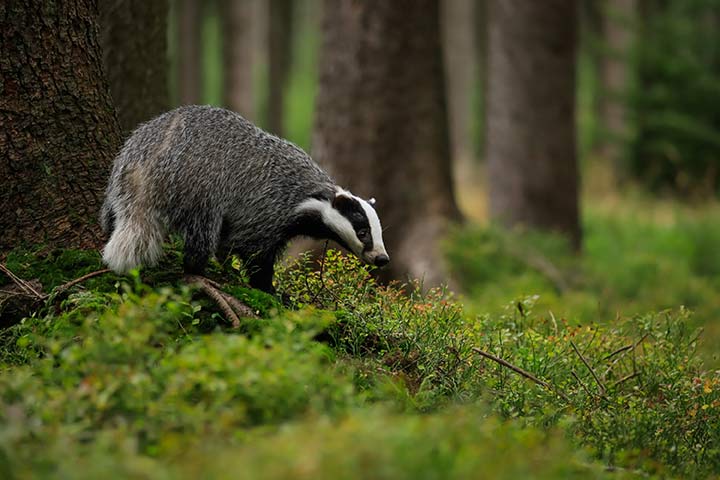
Badger - Photo: Hana Duncova/stock.adobe.com
3. Shrub layer
Shrubs protect deer from bad weather and animals of prey. Birds use shrubs to hide in them, build nests and pick tasty fruits (such as rowan berries, sloes, raspberries). Many shrubs have thorns, which protect the birds from animals of prey.
Animals in the shrub layer:
Hazel Dormouse
Robins
Thrushes
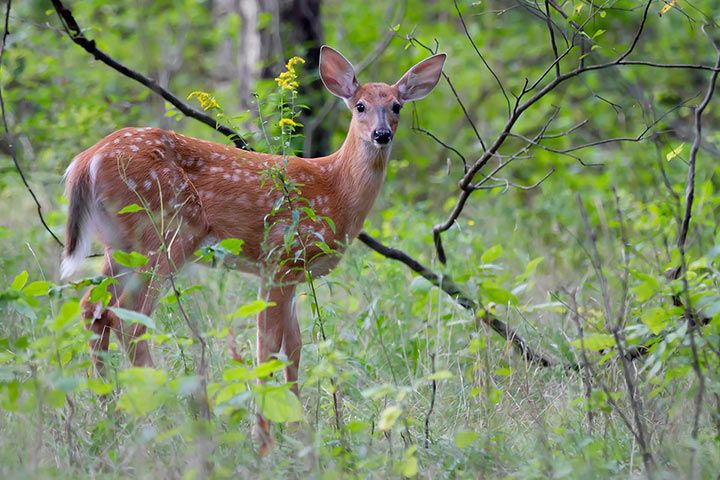
White-Tailed Deer - Photo: Jim Cumming/Shutterstock
4. Tree layer (up to 16 feet / 5 meters)
Mainly birds live in the tree layer and have their nesting and breeding places there. In this area they are optimally protected against animals of prey that are living on the ground. Yet, also mammals such as the squirrel or the pine marten climb up that high. The squirrel even builds its nest up there, which is called “drey”.
Animals in the tree layer:
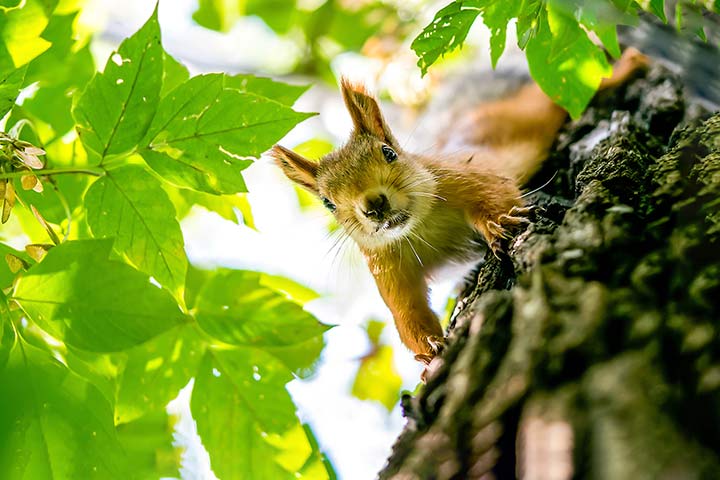
Squirrel - Photo: Lillac/Shutterstock
Interesting Facts about Trees in the Forest:
Forests are usually named after their types of trees, e.g.:
Broadleaf forest: elms, willows, alder trees, birches
Conifer forest: pines, spruces
Mixed forest: mix of broadleaf and conifer forest
Forests are also named according to their geographic location, climate or composition. The mountain forest is obviously located in mountain regions. The swamp forest is rather wet and humid and can be found in swamp areas. The South-American rain forest is known for its particularly humid climate. A forest that is not cultivated by humans is called primary forest or old-growth forest. An alluvial forest is located next to creeks and rivers.
Did You Know?
Our indigenous trees can usually reach heights of up to 131 feet (40 meters).
Oaks can be up to 850 years old.
80% of the sunlight is filtered by the leaves of the trees.
I hope you like the next section of science activity ideas. Doing science at home is not just for fun, it is also to cultivate child’s interest in science and help them grow scientific thinking skills. I encourage you follow the scientific steps while working with kids on these fun activities. I outlined the steps and developed this Science Experiment Recording Sheet. I highly recommend using it, even with young children. They can draw pictures if they can’t write. It is the process that is important, starting with questions and hypothesis.
Free Science Experiment Record Sheet
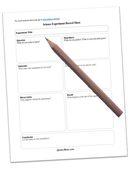
Download the free science experiment recording sheet and receive more STEM learning ideas.
If you are looking for more science activity ideas with more detailed instructions, and even go broader to STEAM (Science Technology Engineer Art Math), check out these 52 STEAM Activities for Kids. The video below shows what the activities look like in action. As you can see, there are 52 activities designed for kids from age 5 to 12. Each activity has a list of materials needed, a step by step guide on what to do, and pictures to show you what it is like.
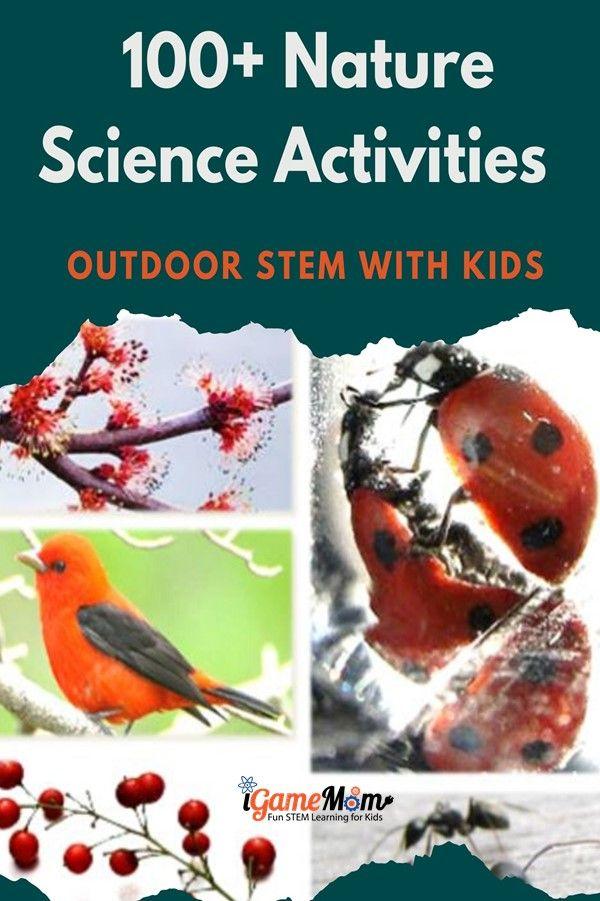
8 Simple Science experiments for Kids about Bugs
7 Fascinating Water Science Experiments for Kids
8 Amazing Ice Science Experiments Kids Love
RELATED: Make Your Own Hot Ice Crystals
6 Fun Snow Science Experiments for Kids
7 Sand Science Experiments for Kids
10 Hands On Weather Science Experiments for Kids
7 Wind Science Experiments for Kids
8 Rainy Day Science Activities for Kids to Learn About Rain
RELATED: Build Your Own Weather Station with Everything Provided
9 Seed Science Experiments for Kids
7 Leaf Science Activities for Kids
9 Amazing Flower Science Experiments for Kids
10 Plant Science Experiments for Kids
8 Cool Science Experiments with Pine Cones
9 Pumpkin Science Experiments for Kids
10 science topics to explore with kids in Summer
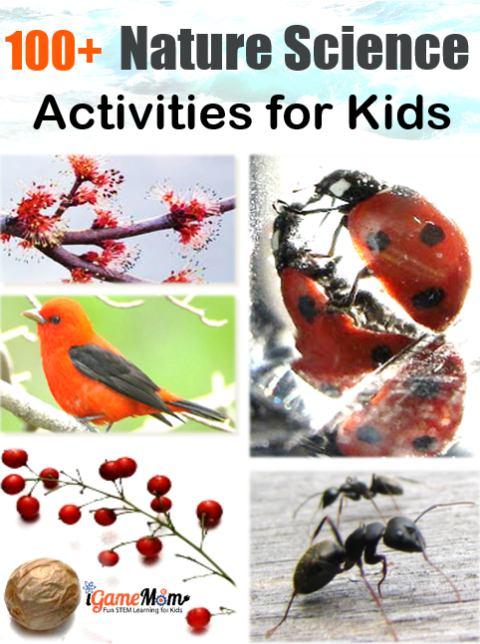
6 Ideas to Encourage Science Curiosity for Nature
Natural Science Apps for Kids
9 Apps Making Outdoor Science Study Fun
Best Natural and Animal Science Apps for Preschool Kids
Best Natural and Animal Science Apps for Elementary School Kids
10 Science Apps for Kids to Learn Bird Identification
6 YouTube Videos about Flower Life Cycle
Want more learning ideas for Free?
Looking for more science activity ideas for kids? Check out these website that has over 3000 searchable STEM activities for kids.
You will also like 500 Science Activities Covering Every Month of the Year
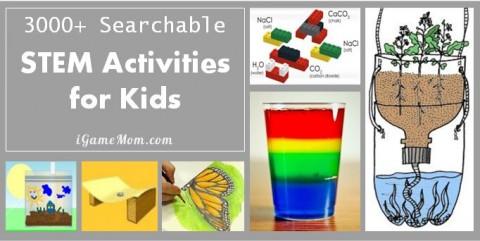
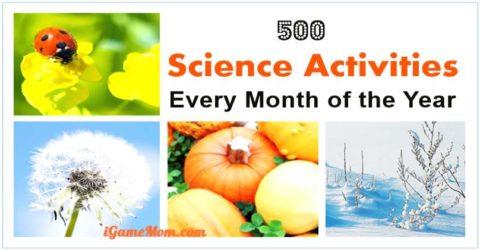
January Science Activities
It is the beginning of the new year, let’s celebrate it with science! It is also cold in most areas, so we can do some science with the cold temperature.
8 STEM Activities to Celebrate the New Year, most activities have science components in them.
8 Cold Science Experiments to Amaze Kids
6 Fun and Easy Snow Science Activities
You will get more ideas from over 200 Winter Science Activities for Kids.
February Science Activities
It is still cold, so try some indoor science activities. Of course, no one can forget the Valentines.
9 Heart Science Activities for Kids for Valentine’s Day.
8 Science Activities to Learn About Color
8 Science Activities about Salt
5 Science Experiments Using Pepper
March Science Activities
It starts to warm up, but there are always up and downs, so this is a good time to study weather. If you start growing seeds, make sure invite kids and do some science exploration with them.
Our collection of over 75 Spring Science Activities have a lot wonderful science ideas for kids of all ages.
10 Weather Science Activities for Kids
9 Science Activities for Kids to Learn about Seeds
April Science Activities
In our area, we get a lot windy days during this time of the year. It is also a good time to study the sun before it gets too hot. Many times Easter falls in April, and for kids, it is about eggs.
8 Fascinating Science Activities with Eggs
7 Wind Science Activities for Kids
10 Science Experiments about the Sun
Related: 75 Spring Science Activities for Kids
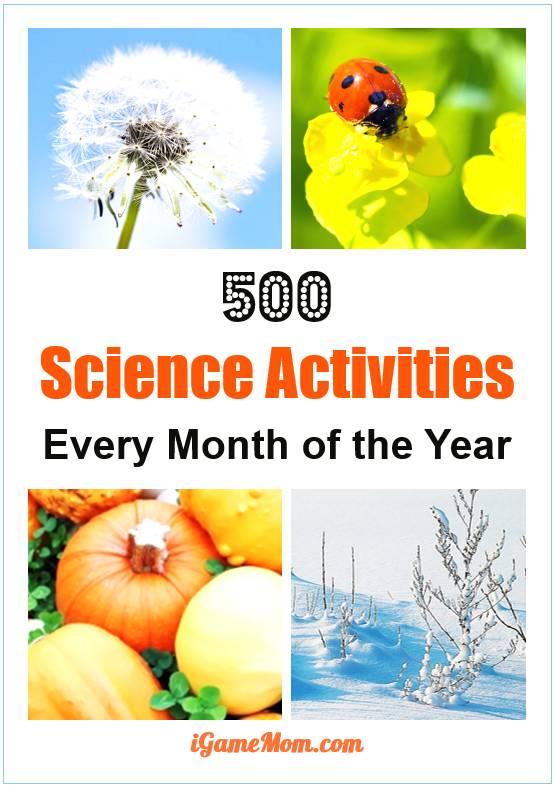
May Science Activities
Summer starts in the north hemisphere. It is getting warmer, plants are growing, insects are active.
Make sure to visit our collection of over 100 Summer Science Activities for Kids
8 Simple Science Activities about Bugs
10 Plant Science Activities for Kids
June Science Activities
This is a month with blooming flowers. It is also the time you will see a lot fresh vegetables. Many kids finish the school year in June and families have more time to be outside.
Definitely try these amazing backyard science activities with kids.
9 Amazing Flower Science Activities
With so many fresh food varieties, it is a good time to learn about taste with these 7 Taste Science Activities.
Related: 100 Summer Science Activities for Kids
July Science Activities
It is summer break, and beach is a popular place to go, a place with a lot sand. Many places also see a lot rain. When it is hot, it is always nice to play with something cold, like ice.
7 Sand Science Activities for Kids
8 Science Activities to Learn About Rain
8 Ice Science Activities for kids
August Science Activities
It is still hot in many places, so it is the perfect time to play with water. This is also the time I don’t care kids stay up late till it is dark.
10 Science Activities for Kids to Do after It is Dark
During the day, they can study light with these 9 Science Experiments about Light
Related: 70 Fall Science Activities for Kids
September Science Activities
Although the fall starts in August, September is the time it really feels like autumn season. It is also a good time go out at night to observe the moon and stars.
Check out these 70 Autumn Science Activities for Kids
7 Science Activities about the Moon
7 Activities to Learn about Stars and Constellations
October Science Activities
Apples, pumpkins, yellow leaves are signs of October. Kids will also love Halloween at the end of the month.
7 Science Activities using Apples
9 Pumpkin Science Activities for Kids
7 Leaf Science Activities for Kids
For Halloween, try these 10 Skeleton Activity to learn about human body. I also like these 10 Interactive Apps about Human Body.
November Science Activities
It is the start of winter season. Leaves are falling. It is Thanksgiving, when families are getting together, and cooking together.
Find some fun ideas from 200 Winter Science Activities for Kids.
8 Pine Cone Science Activities for Kids
6 Kitchen Science Activities for Kids
December Science Activities
It is cold, and it is Christmas season for many countries. People all over the world are getting ready for the New Year.
9 Science Activities of Christmas Tree
These 9 Magnet Science Activities are perfect for a cold winter day.
It is always fun to watch how others perform science experiments on these interesting science YouTube channels.
Hope these will keep you busy for the year, or maybe several years.
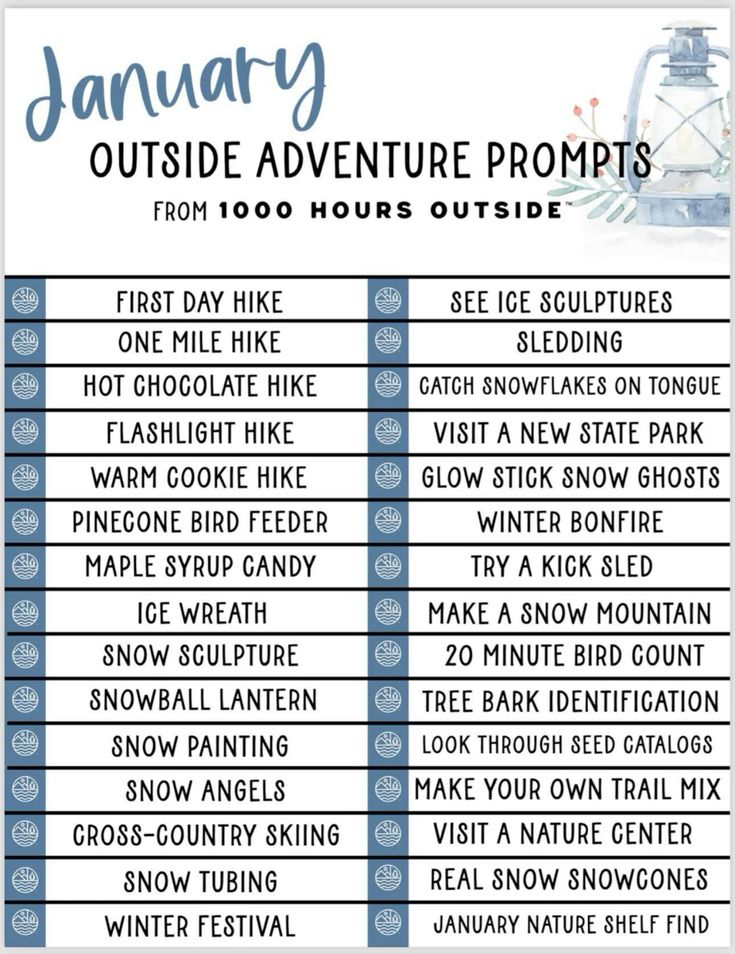
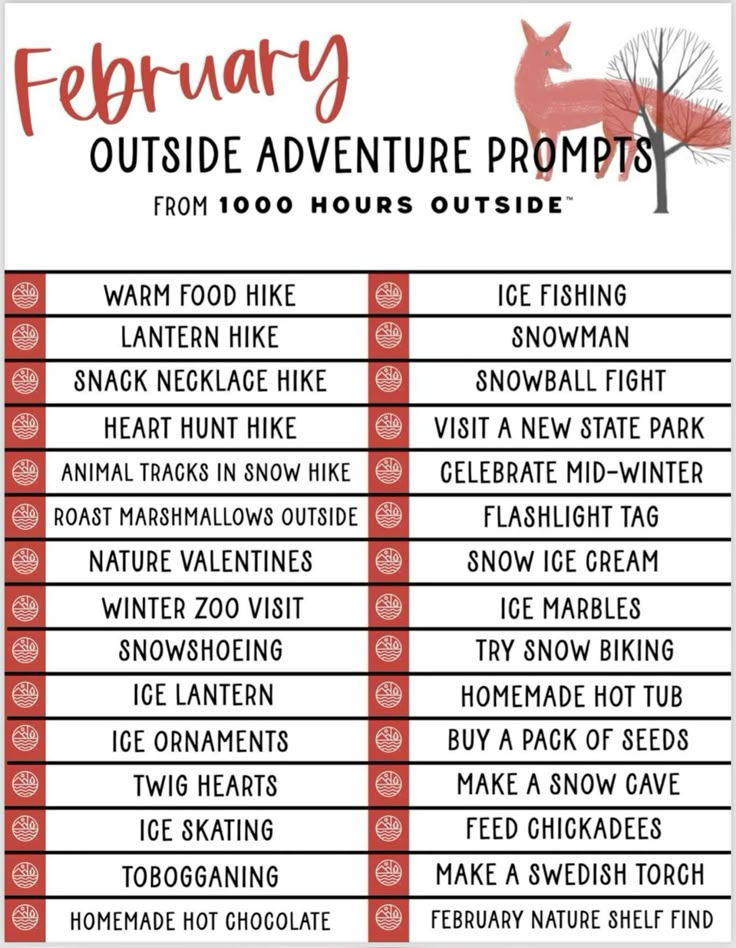

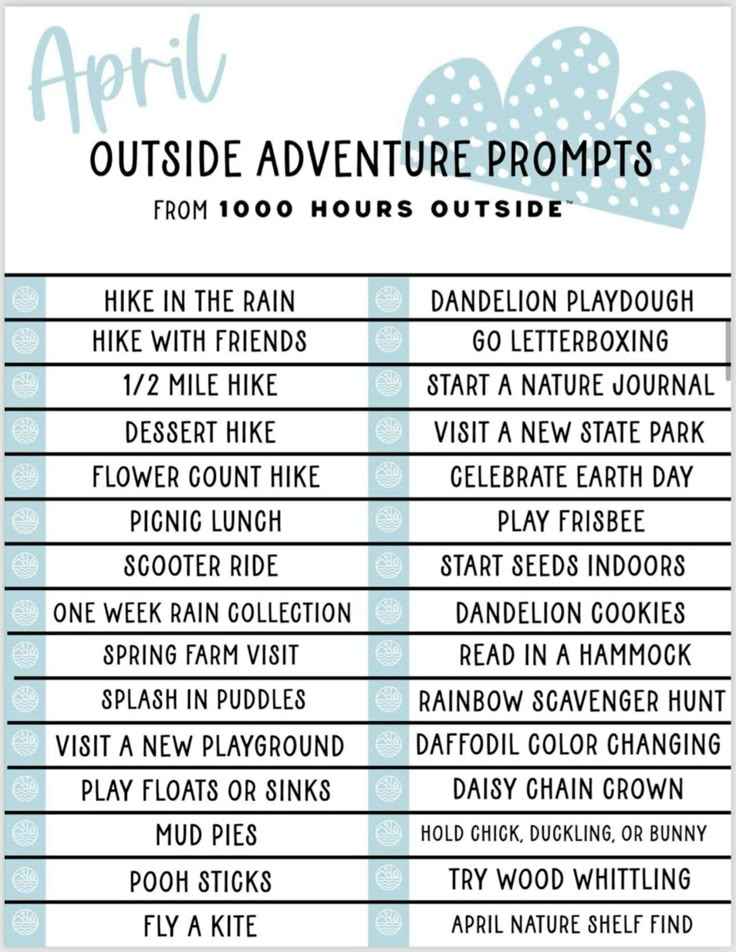
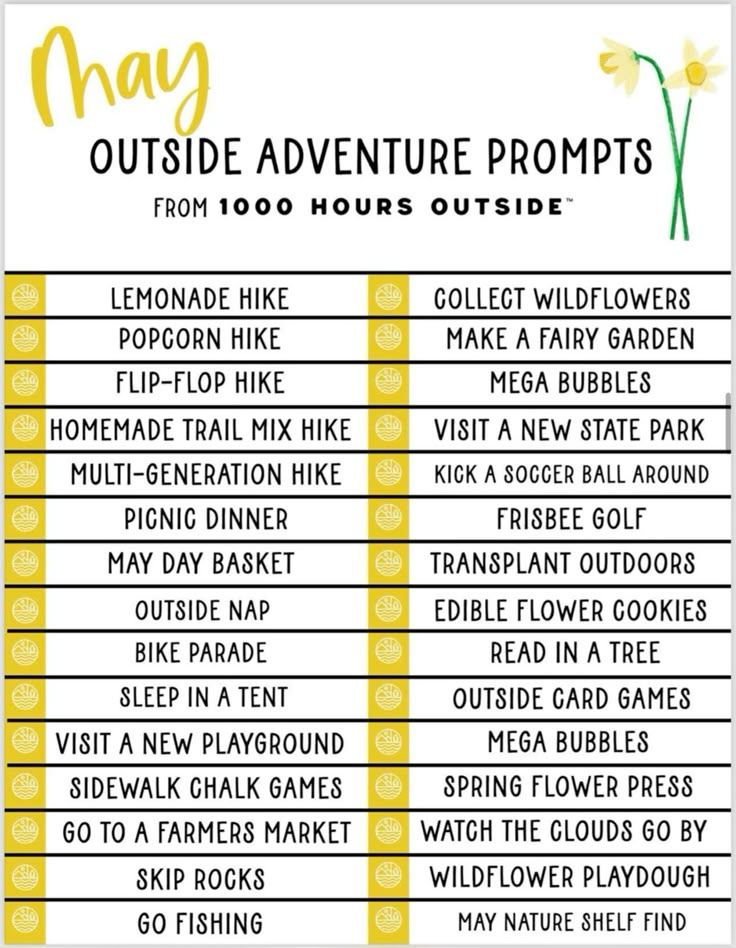
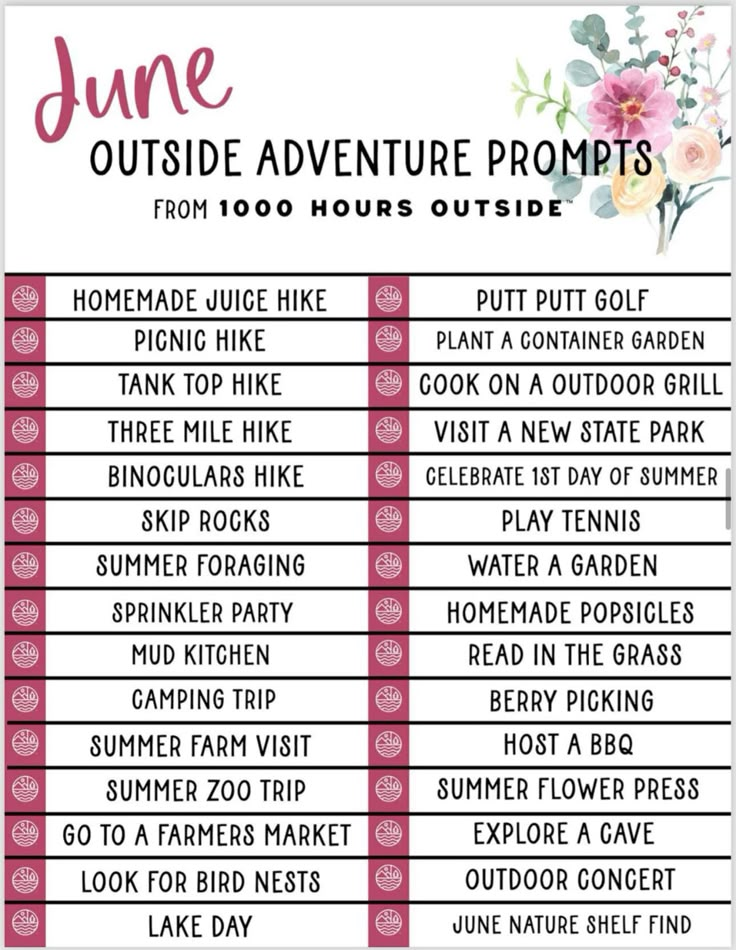
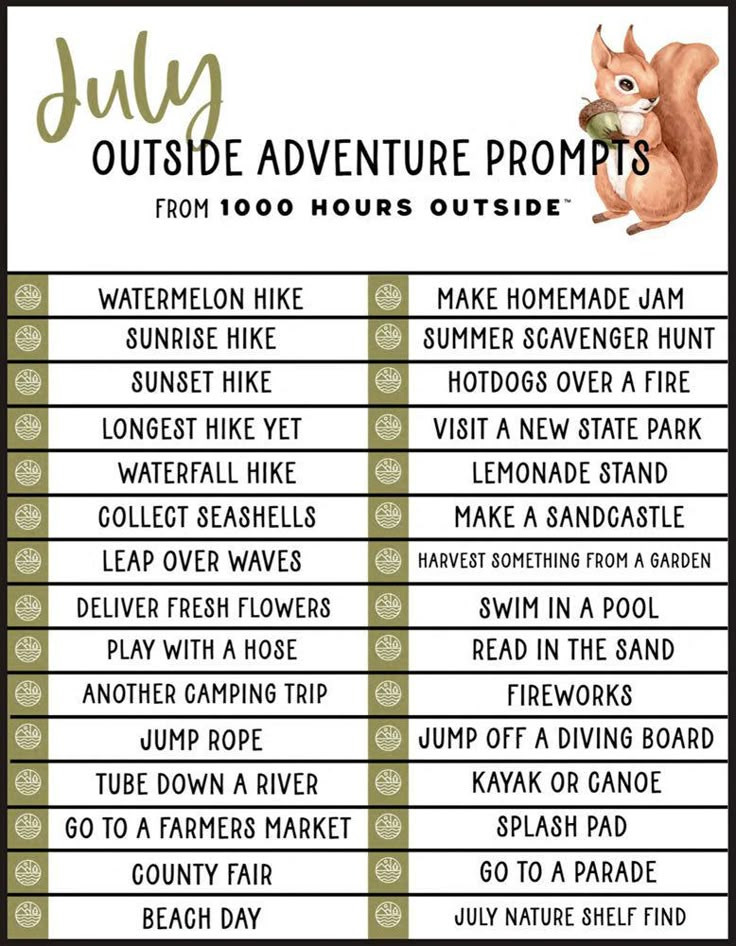
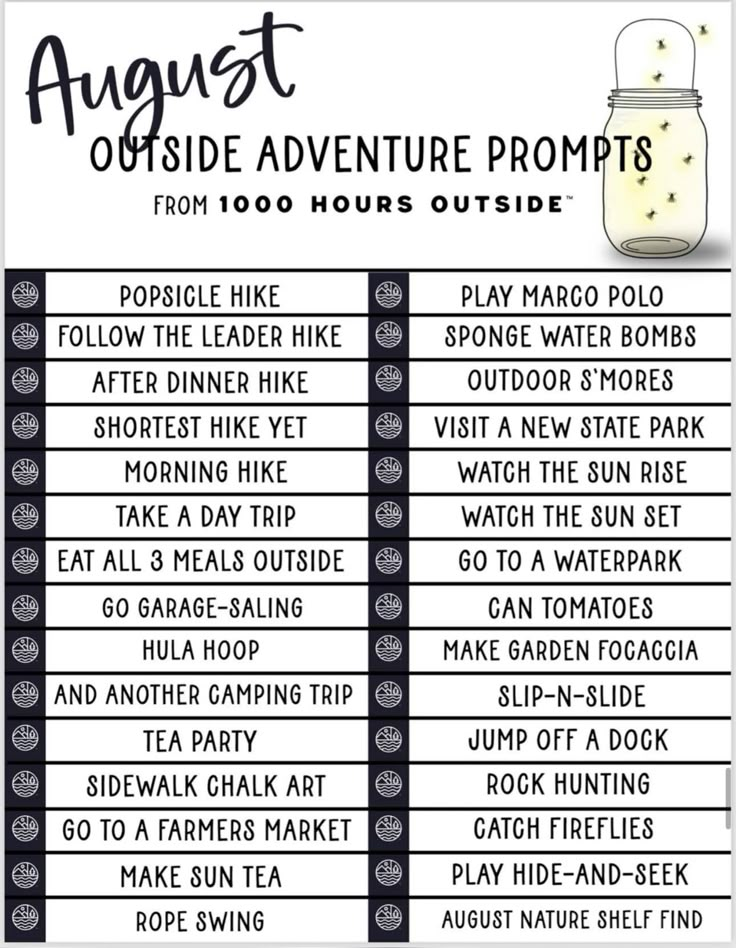
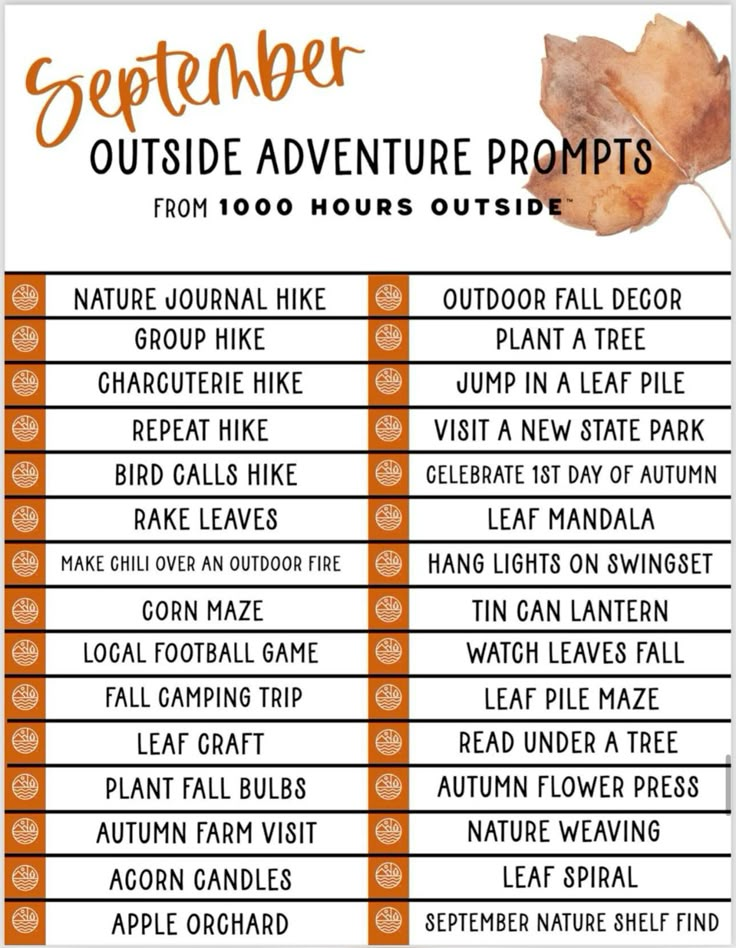
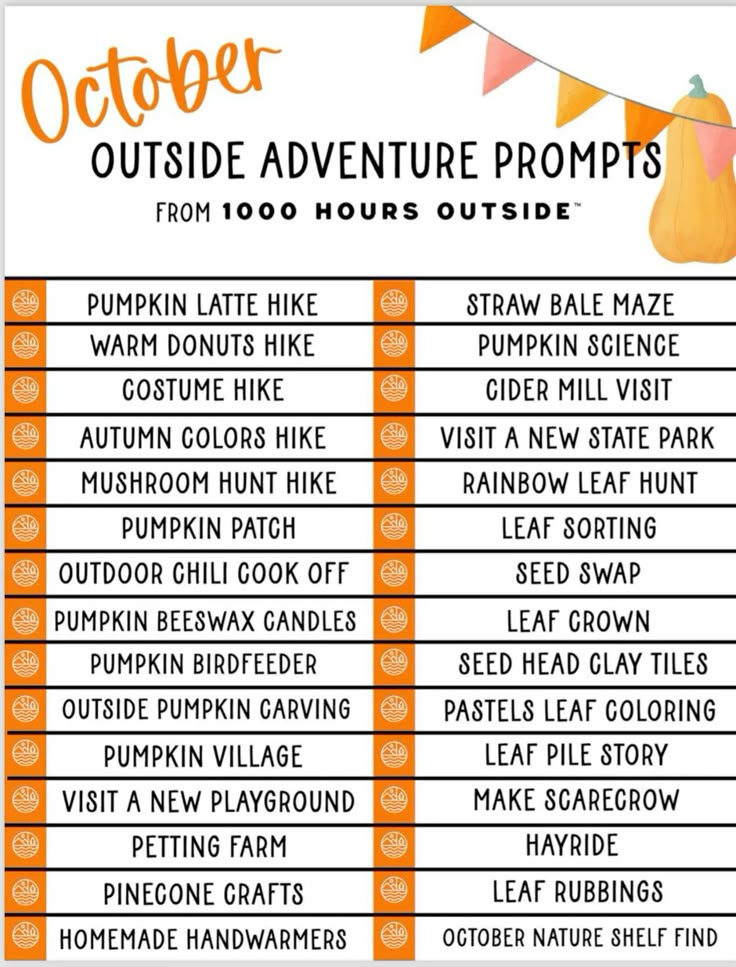
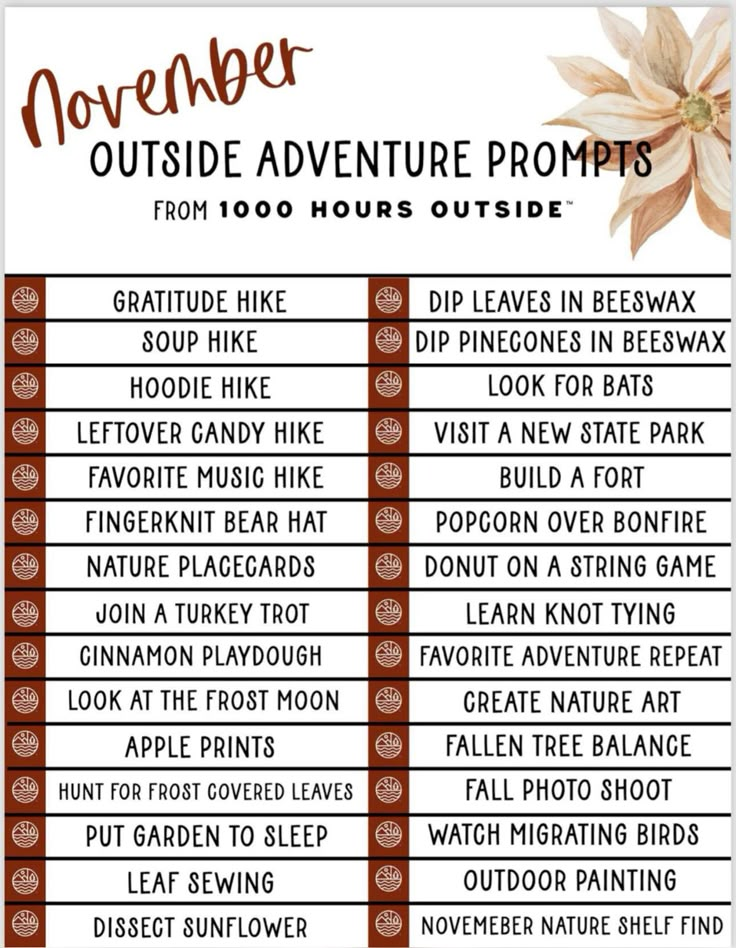
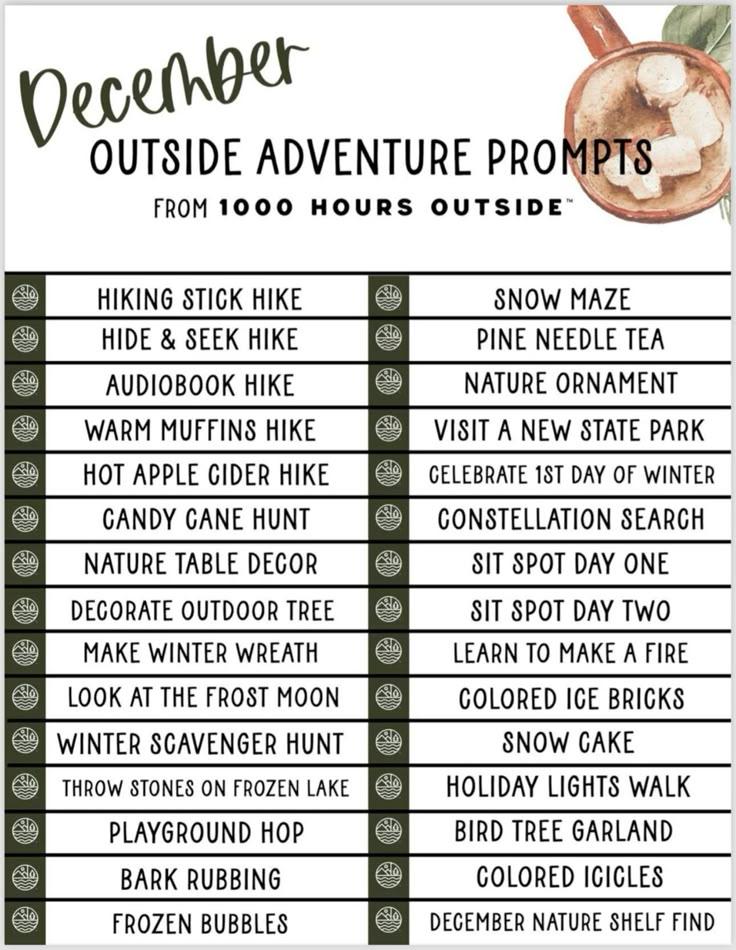
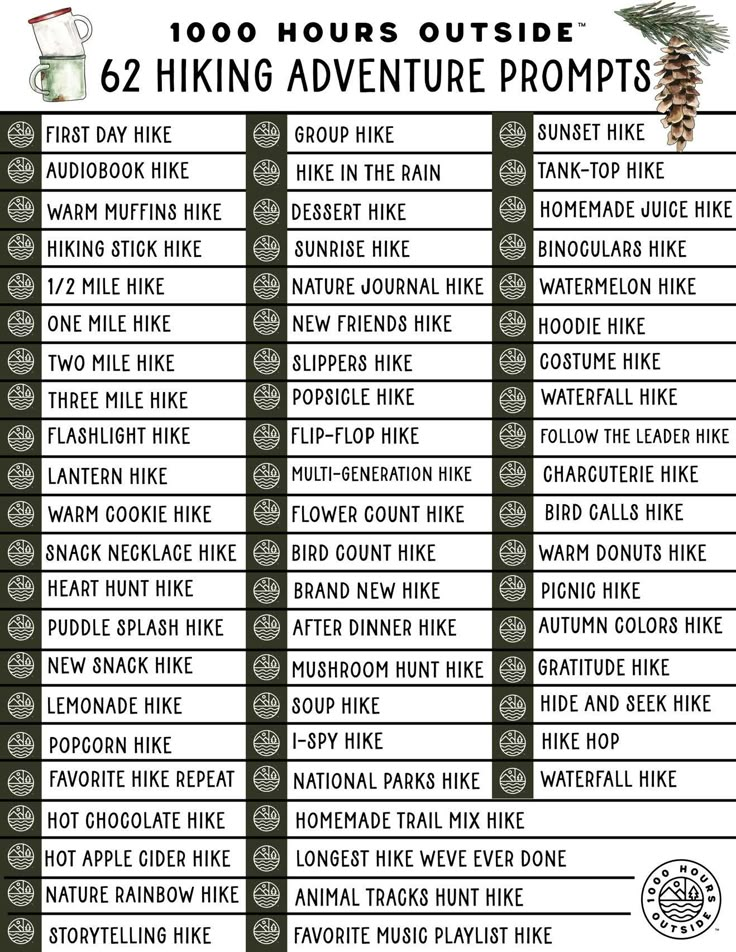
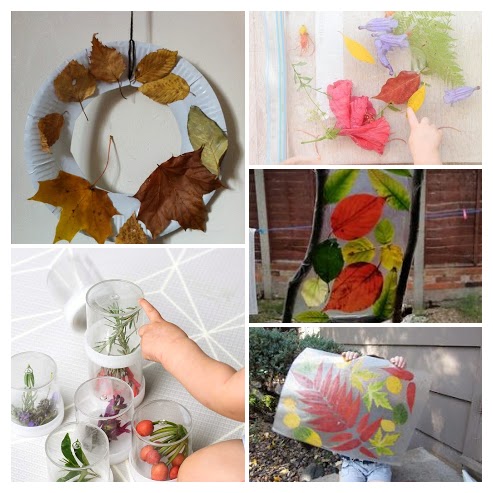
THINGS TO MAKE OR DO
Woodland activities for children and families can be enjoyed all year around.
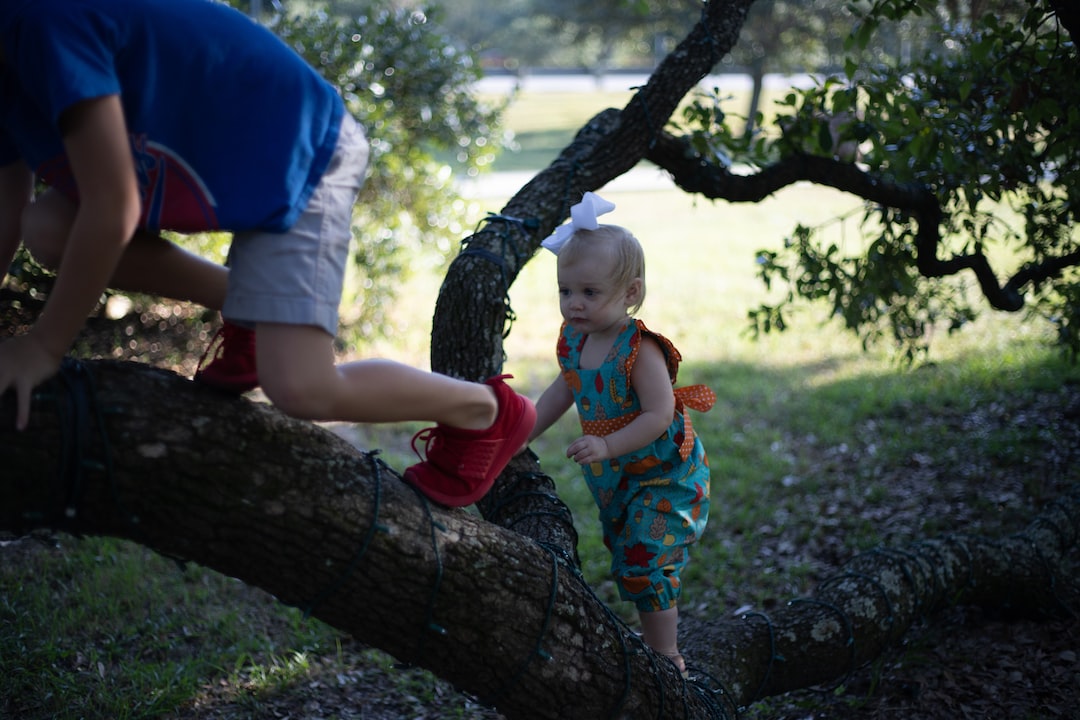
We've got plenty of ideas to help families enjoy woods and the great outdoors all year round, from scavenger hunts and den building to wildlife spotting and nature crafts.
Head to the woods for unforgettable family adventures.
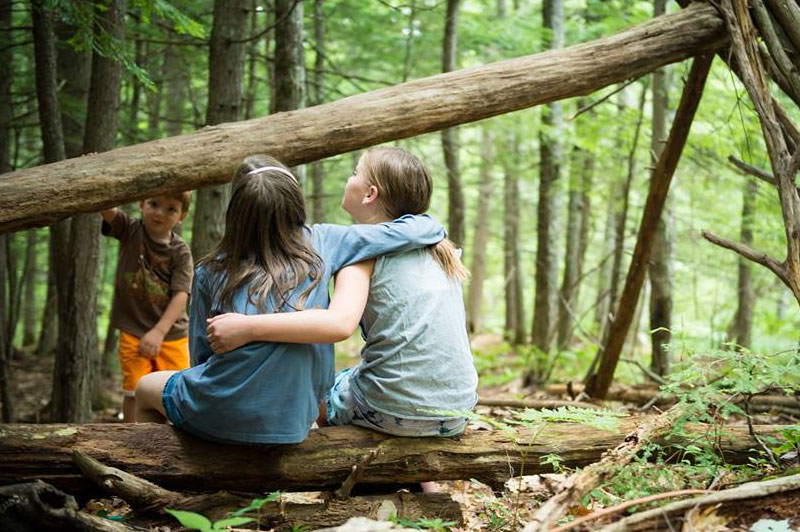
10 nature activities to try with your family
We believe woods are the world's best playgrounds. They spark children's imaginations, inspire a love of the natural world and help to create happy memories that will last a lifetime. Spending time outdoors also makes us healthier and happier, so it's a win-win!These activities will help you explore woods with your kids and learn about nature. You can also enjoy them at home or in a green space near you.
Love your woods
Discover our top tips to help you enjoy your woodland visit while protecting precious wildlife.
1. Go on a scavenger hunt
A scavenger hunt is an exciting way to explore the natural world and helps little ones develop their observation skills. It adds fun to family walks too (especially if you introduce a bit of friendly competition!) and the possibilities are endless.
Try seasonal scavenger hunts and search for signs of spring or autumn treasures.
Choose a colour theme – encourage younger children to look for all the colours of the rainbow and challenge older children to track down different shades of one colour.
Explore with your senses and hunt for textures, scents or sounds.
Check out this scavenger hunt blog for more ideas. Keep your eyes peeled on woodland scavenger hunts.
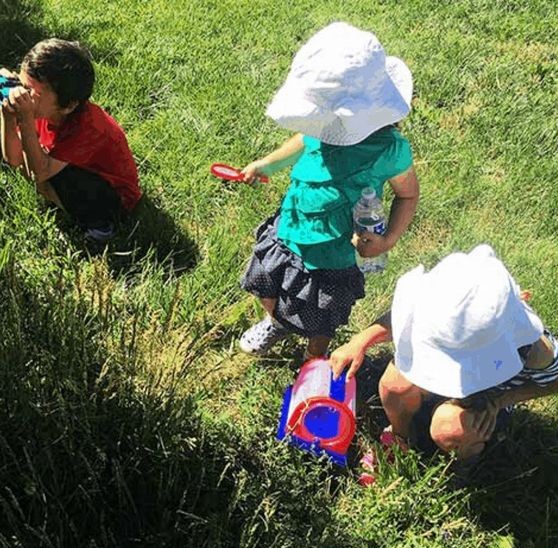
2. Spot wildlife
Do your kids get excited about bird watching or love getting up close to creepy crawlies? Woods are teeming with wildlife, so there's no better place for young nature lovers to explore. Grab a magnifying glass or some binoculars then head outdoors and see what you can find. This pocket-sized wildlife ID books can help you identify birds, minibeasts, trees and flowers while you're out and about. They feature clear colour photos to aid recognition and they're packed with fab facts too.
Some woodland creatures are difficult to spot because they're nocturnal or super-shy, scampering away into the undergrowth at the first sound of a child's voice. They often leave plenty of clues for us to find though, so why not become nature detectives and learn how to identify poo and prints on your next adventure?
What will you spot on a trip to the woods?
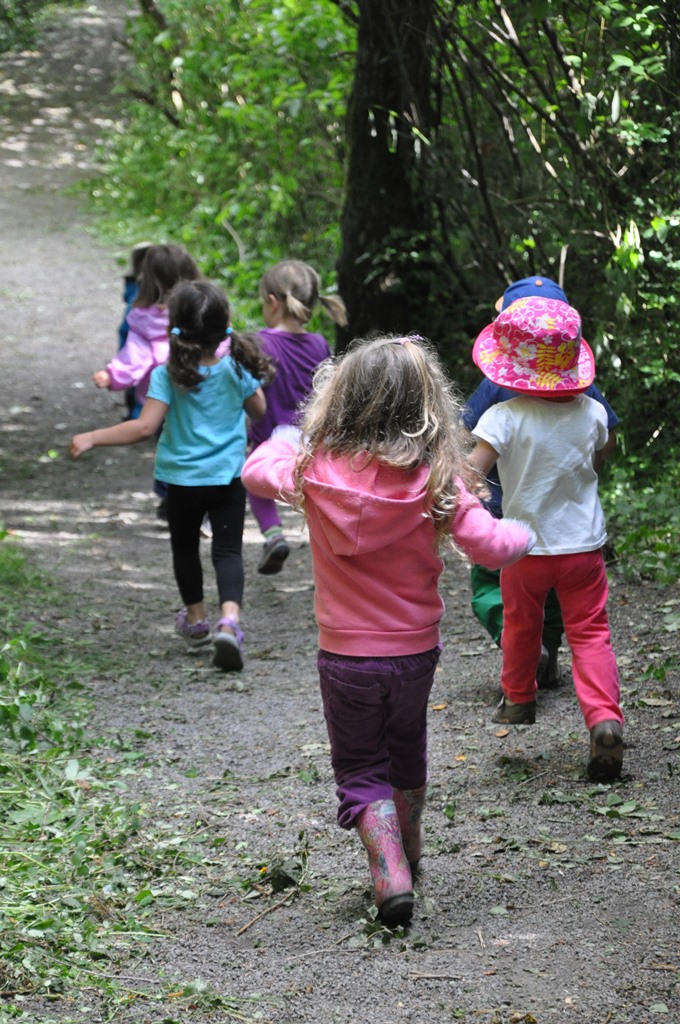
3. Have a picnic
An alfresco feast is super-exciting, especially for kids. So next time you head out on a woodland adventure, don't forget to pack your picnic basket with some yummy goodies.Our woods have beautiful views to enjoy while you scoff your sandwiches. Leafy trees also provide plenty of sun-dappled shade in the summer months, while a winter picnic will warm you up on colder adventures. And remember, you can help us look after our woods by taking your rubbish away and recycling it at home.

Visiting woods
Find a wood for a picnicWe care for 1,000 woods across the UK. They're free to visit and open every day, so they're ideal for picnics and family walks. Find a wood near you
4. Build a den
Den building is a hands-on activity the whole family can enjoy together. Use branches and sticks to make a shelter that protects you from the elements, or build a secret hide where you can watch wildlife. Before you start, read our den-building guide for some top tips and techniques.Remember, woods are home to shy animals and fragile plants, so please be considerate with your den making. Use fallen branches and twigs – don't break pieces off trees. And if you’re in an ancient woodland, leave den building to the badgers and foxes. Look for on-site guidance if you're not sure.
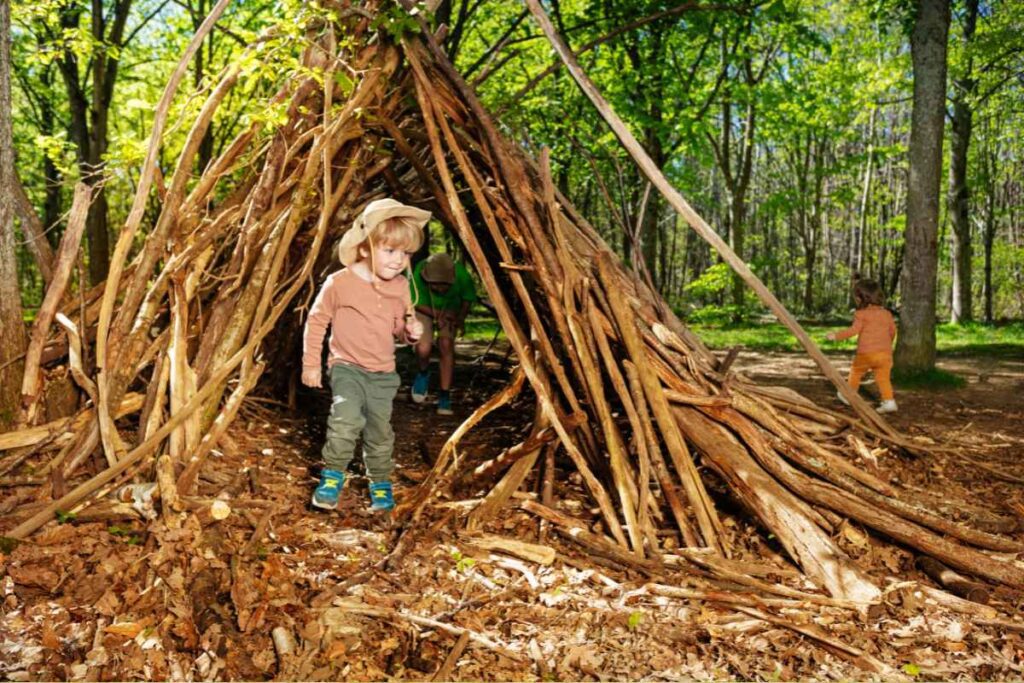
Den building is a brilliant family bonding activity.
5. Make natural art
Woodlands have inspired artists for thousands of years! The natural materials found in woods can be used to make sculptures, collages and other creations. Youngsters can seek inspiration from the ever-changing colours, shapes and textures of the forest scenery too.While you explore, keep your eyes peeled for fallen leaves, petals, sticks and pebbles. You could build a tower out of twigs, design a pattern using colourful leaves, or even make funny faces on the forest floor. What will you create?
6. Identify trees
Woodland is the perfect place to do a bit of tree detecting. You'll discover plenty of different species and you can study their leaves, seeds, twigs or blossom depending on the season. We've got lots of resources to help you become tree experts – get started with our printable tree ID sheets designed to help children develop their identification skills. This handy leaf swatch book is great for families too – it's the perfect size for tucking in your pocket on woodland walks and it features leaf photos and facts from over 30 common British trees.
Learn how to identify trees by their leaves, seeds, flowers and bark.
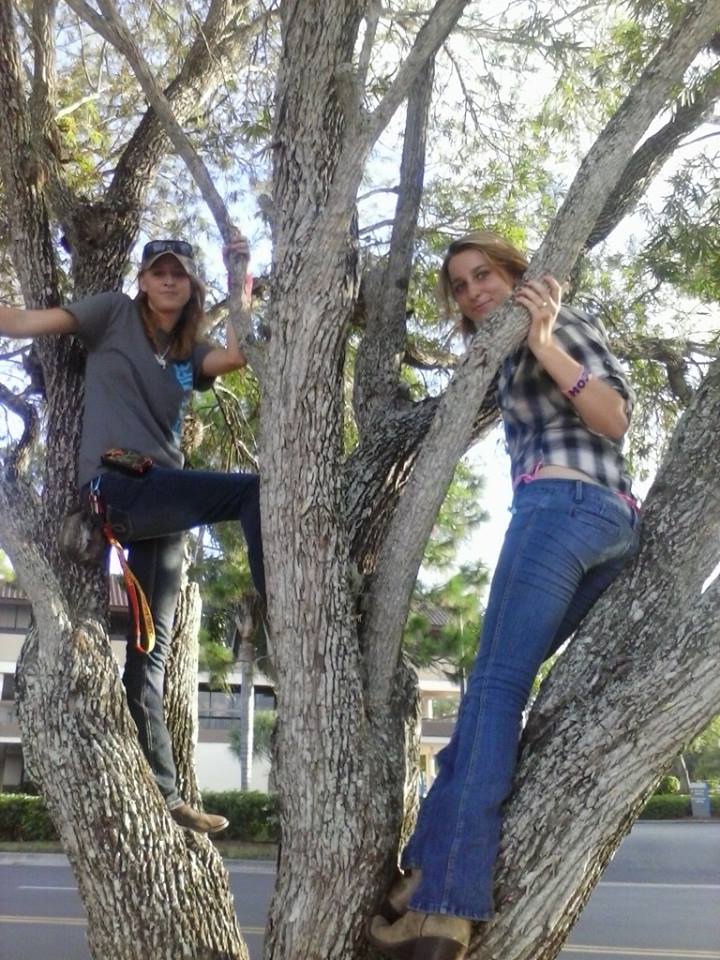
7. Make a nature diary
Your whole family can get stuck into this memorable project. Team up to create a nature journal and record your woodland walks and wildlife encounters. There are no rules – write notes, draw pictures, paste in photos, add stickers, decorate the pages, stick pressed flowers in it… whatever captures your experience. As well as a fun activity to enjoy together now, it will become a wonderful keepsake to look back on in years to come.
Make a nature diary to record your family's woodland adventures.
8. Play in the rain
Don't let a bit of rain dampen your enthusiasm for the outdoors – chuck on your waterproofs and embrace the opportunity to become wet weather explorers! Go puddle-jumping, make mud pizzas, or search for slugs and snails slithering about in sludgy soil. Read this rainy day play blog for more inspiration.
Enjoy playing out in the rain.
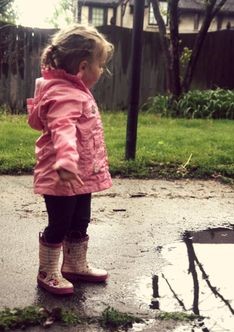
9. Learn how to whittle
Once you've mastered the skill you can make all sorts of fun projects, such as spoons, simple figures or flowers.To get started safely, check out our whittling tips for kids and beginners.
Give wood carving a go and learn how to whittle a stick.
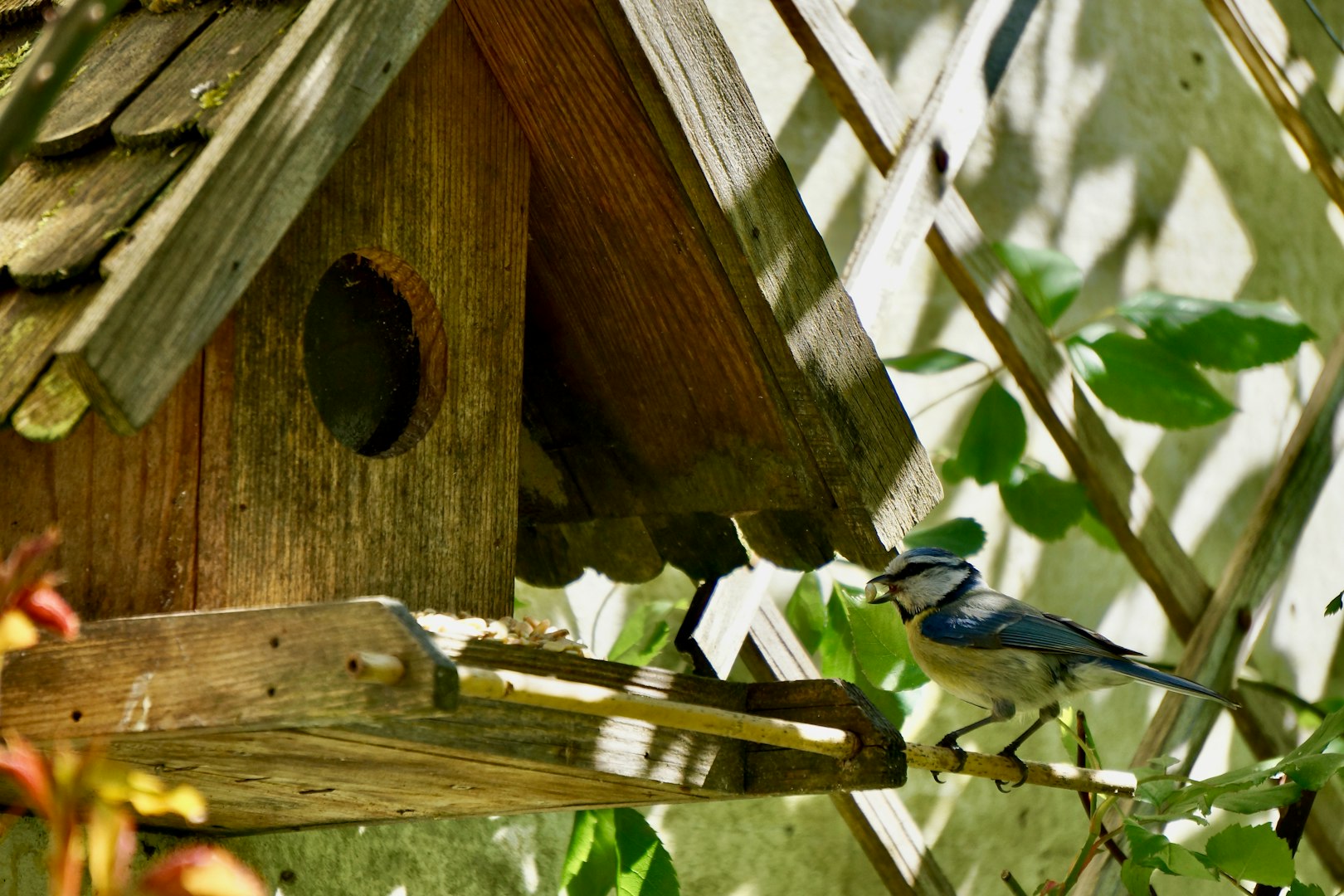
10. Build a wildlife home
Inspired by the wildlife that lives in the woods? You can help the creatures in your own garden or neighbourhood by building a bug hotel, nest box or hedgehog house. A cosy home provides important shelter from the weather, as well as a safe space to hibernate. Some animals may even raise their young there! We've got a range of guides to help you make a wildlife home with your kids, whether you've got a generous garden or a pint-sized window box.
Ideas for Having Fun Out in Nature!
Hey, it’s a nice day! Let's go outside and have some fun!
School is starting and schedules get so busy. But the nice weather is coaxing us outside on the weekends and evenings and we have to answer.
Check out these 18 fun-filled ideas that will help you enjoy the great outdoors with hands on nature activities. Choose a few and head outside, what are you waiting for?
Outdoor fun activities for the whole family!
Let’s grab the chances we have to get out and enjoy the last of summer and beginning of fall!
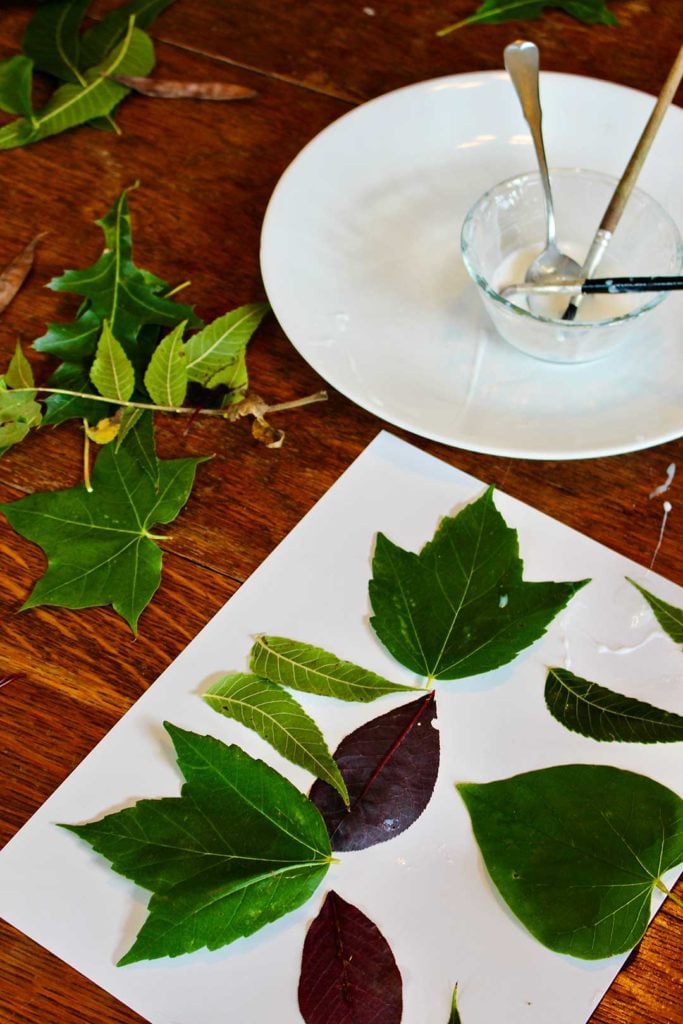
Make a Kids Fall Leaf Collage
Grab your grand and pick up some of those pretty leaves to make a kid’s fall leaf collage. It is amazing what ideas the kids will come up with using just leaves as their art medium when they make a leaf collage picture.
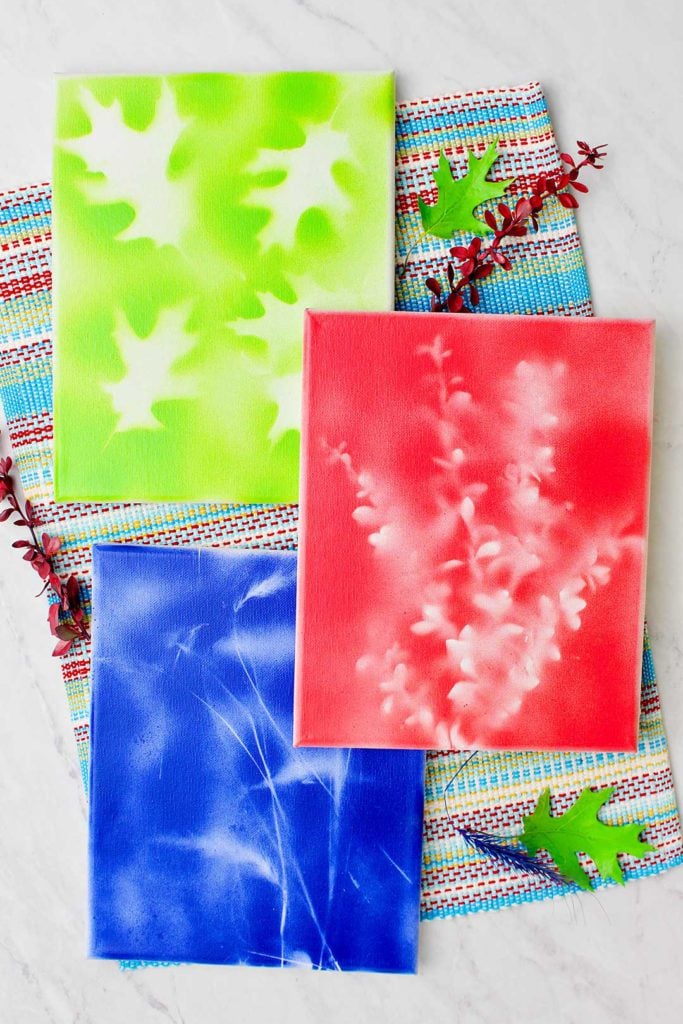
DIY Botanical Wall Art with Spray Paint
Use the DIY Botanical Wall Art with Spray Paint tutorial to help you make amazingly easy and modern botanical art for your home. This project is fast and fun with leaves & grasses from your own yard.
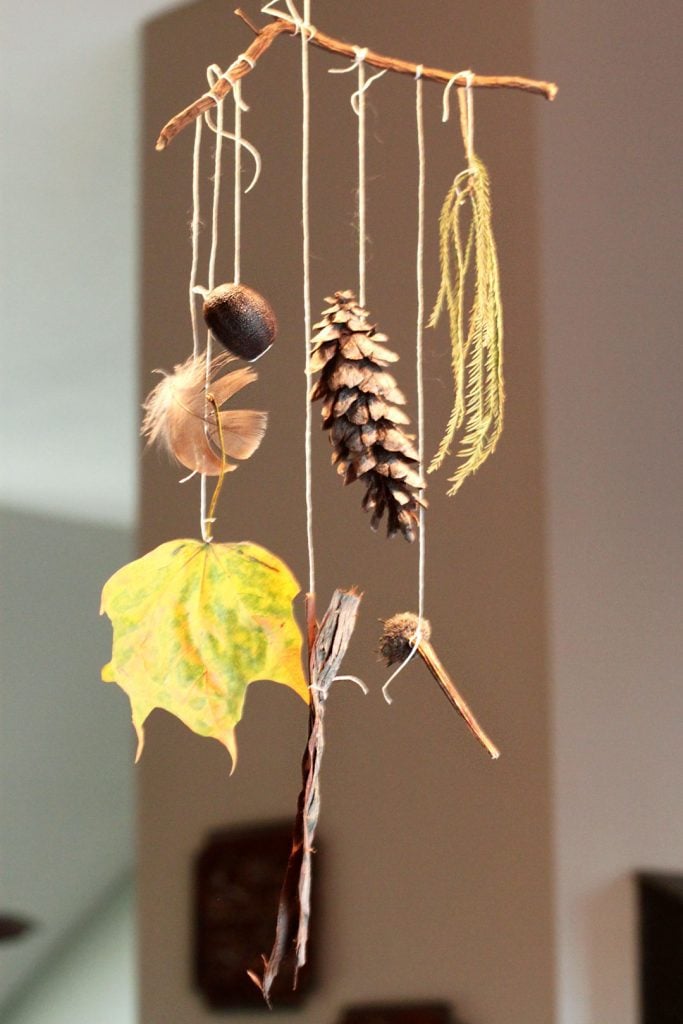
Treasure Hunt Nature Mobile
Check out this Treasure Hunt Nature Mobile. How fun and simple is this? Yet, isn’t it beautiful? Take advantage of these nice days and head outside for a picnic and/or a walk with your grands. The weather will be turning soon, these days are a treasure.
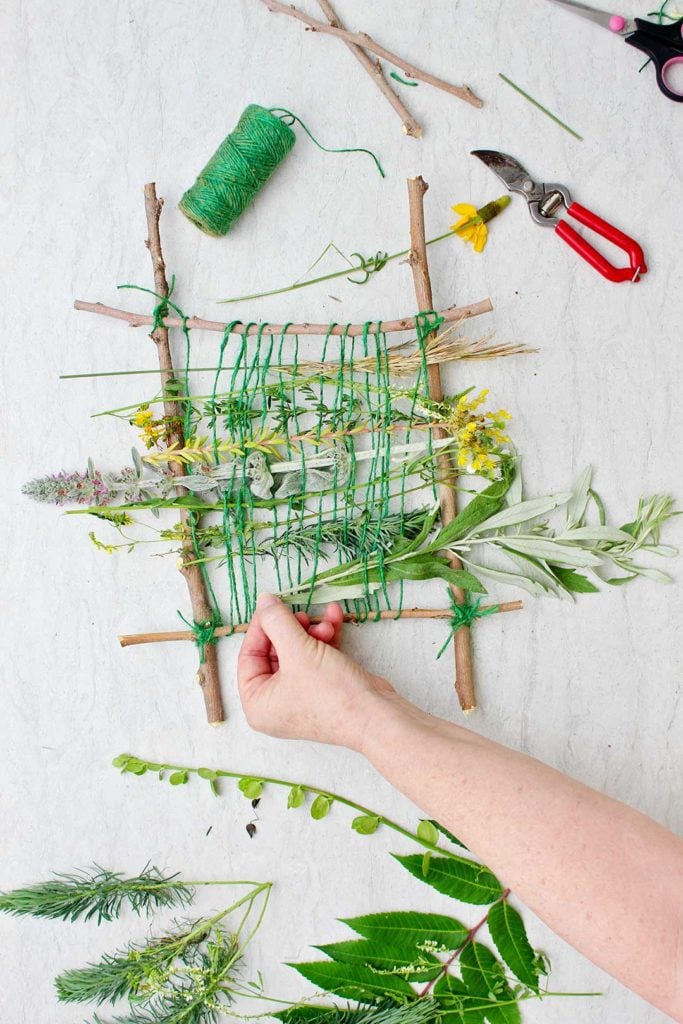
Nature Weaving with Kids (2 Ways!)
2 Ways of Nature Weaving with Kids shows you how to make 2 types of nature looms. Both are winners and give a lot of flexibility for you to choose what works best for different aged grands. Collect greenery on a walk with your children and fill your loom with grasses, leaves, and flowers.
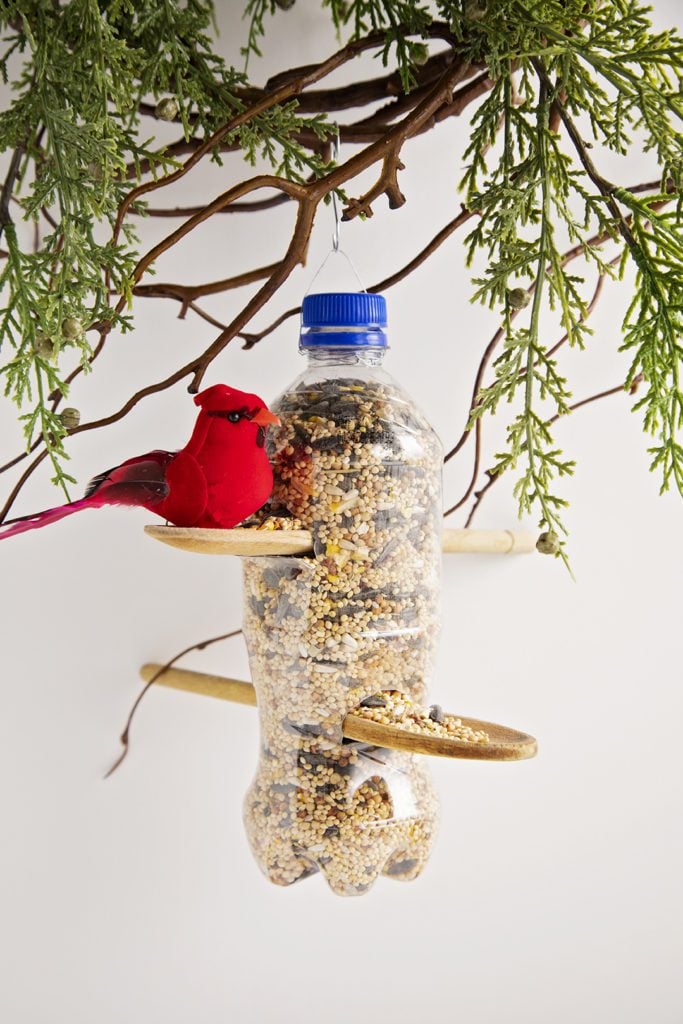
Recycled Plastic Bottle Bird Feeder
I especially love this simple craft with the kids because we can recycle a plastic bottle. Turn something you've already used into something useful again, and head outdoors to hang it where the birds can enjoy it too!
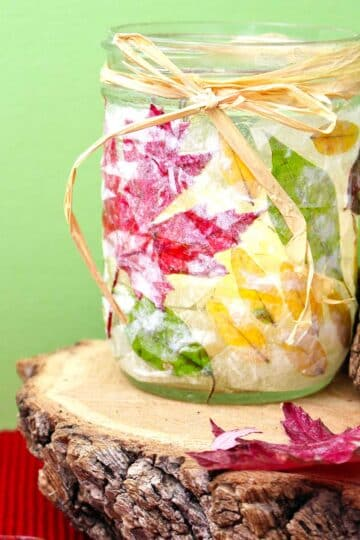
DIY Fall Leaf Mason Jar Candle Holder
Decorating this DIY Fall Leaf Mason Jar Candle Holder is a fun nature craft for kids! Get crafting with just Mod Podge, tissue paper, an upcycled mason jar, and some leaves from a nature walk!

DIY Flower Press from Wood
This spring make a large DIY Flower Press from Wood that holds 10 layers of pressed flowers It’s strong and easy to make- kids will love it. Way cool! This DIY Flower Press from Wood for Pressing Flowers came out even better than I had hoped. I’m so excited for you to try this and have fun with the grands.
Threading Garland
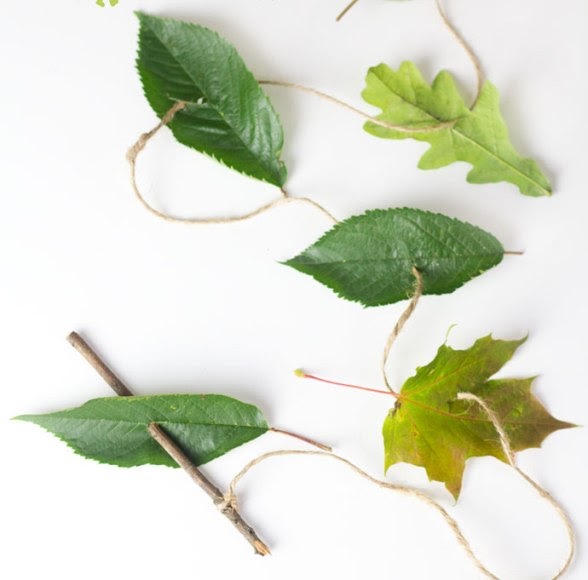
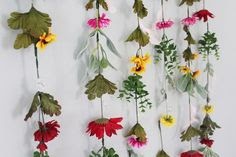
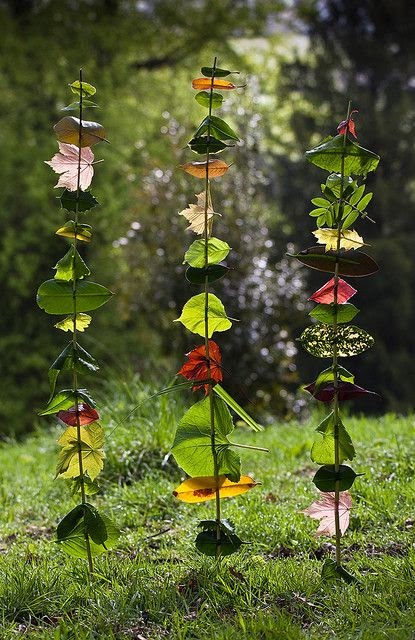
If you’ve tried threading beads with your little one, then this one is sure to be a hit! Kids Craft Room has a fun gross motor activity that involves 100% natural materials. Make a twig ‘needle’ if you don’t have a needle, tie on some twine ‘thread’ and you’re all set to thread your way through some flowers, herbs or leaves! This project has a Hungry Caterpillar feel to it, so reading the book along with this is a good idea.
***We often made mobiles from shorter strings of leaves or flowers. Or Hope hung some from a tree that her grandmother sat near. She had a hard time getting around so Hope strung all the different types of flowers from her yard. She hung them under a shady tree: that way my mom could see them all at once and they would last longer. When they started to get wilted Mom had me hang them in her room to dry.
Nature Sensory Bag
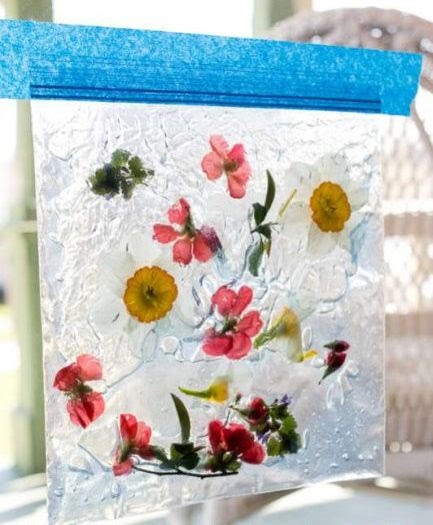
Sensory bags are a great way for babies to explore and learn to focus their attention. This sensory bag from Hands On as We Grow also doubles as a sun catcher – just stick it on the window! Gather the materials by doing a scavenger hunt or a nature walk and use double bags especially if you’re dealing with over-excited toddlers or babies! You can focus on using different textures here, so it’s more fun to squish and move around!
Botanical Sun Catchers
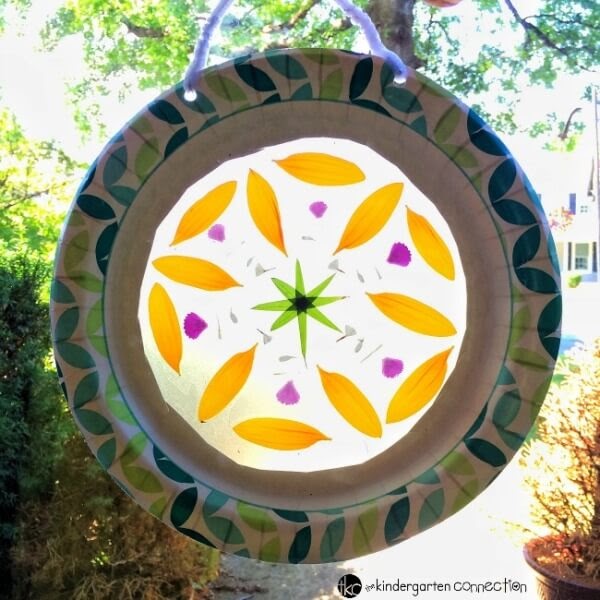
This activity from The Kindergarten Connection is more of a big-kid activity, but toddlers can do it with help from Mom or Dad. With paper plates, self adhesive transparent sheets and lots of pretty petals and leaves, you can create a beautiful sun catcher to hang by your window. What’s more, as the sun shines through the leaves, kids can clearly see the veins and other parts of the leaf and marvel at Nature’s attention to detail!
Hope's Favorite-
Nature Sensory Bottles or Keepsake
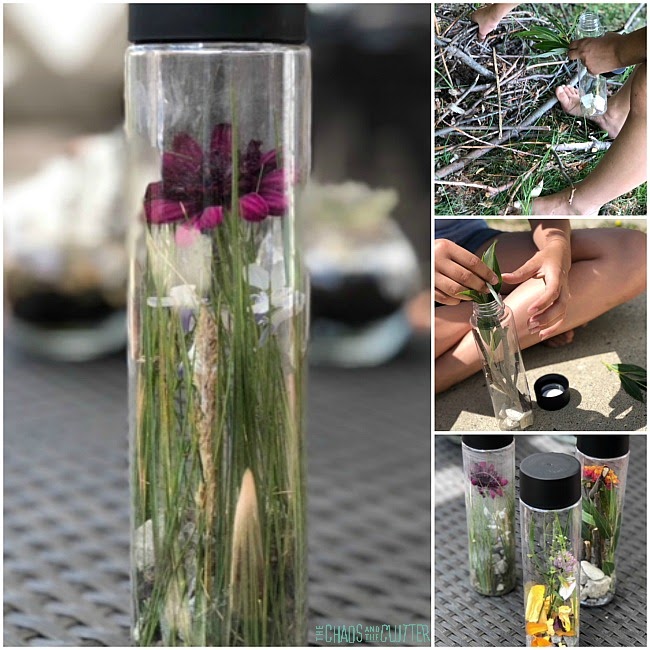
The sensory input on this activity happens throughout the activity. Each individual nature sensory bottle is unique. They also make great keepsakes for memories.
Begin with a trip outside to explore nature. Bring a plastic water bottle with you.
Follow your child's interest and suggestion.
NOTE: If you are using an expensive bottle- hold onto the lid. The kiddos are sure to loose it!
If they find things that catch their eye, they can add them to their sensory bottle. They can either gather all of the items before and add them to the bottle later or they can add the items as they find them.
My kids really enjoyed creating their natural sensory bottles. They enjoyed climbing through the trees looking to discover items to include. I love how each one of them came out so differently and yet all were lovely. We filled ours in the spring and the colors were so beautiful. The flowers, flower petals, and purple clover contrasting against the white rocks, green leaves and stems, and brown twigs made them quite striking.
Nature Sensory Bottle
Materials needed:
empty unbreakable bottle (I used 1 liter clear soda bottles)
items found in nature
Instructions:
Go on a nature walk or hike to gather items for your nature sensory bottle. As you are outside, ask your child questions designed to help them become more aware of their sense.
“How does that rock feel?” or for younger kids, “Does that rock feel rough or smooth?”
“What do you smell?”
“Can you feel the wind?”
“What sounds do you hear?” or for younger kids, “Can you hear the birds chirping?”
“What colors or shapes do you see?”
As they gather items to fill their bottle, have them describe the items to you. See if they can incorporate their senses into the descriptions. Really, any item they find can be added to the sensory bottle, so this list is not comprehensive.
When complete, place the lid on the bottle. Some of the items in these sensory bottles can mold over time due to moisture, so the bottles only keep for a few weeks. Or you can fill the bottle up and empty it right away and head back out on another nature hike to fill it again.
What to put in a nature sensory bottle:
sticks
rocks
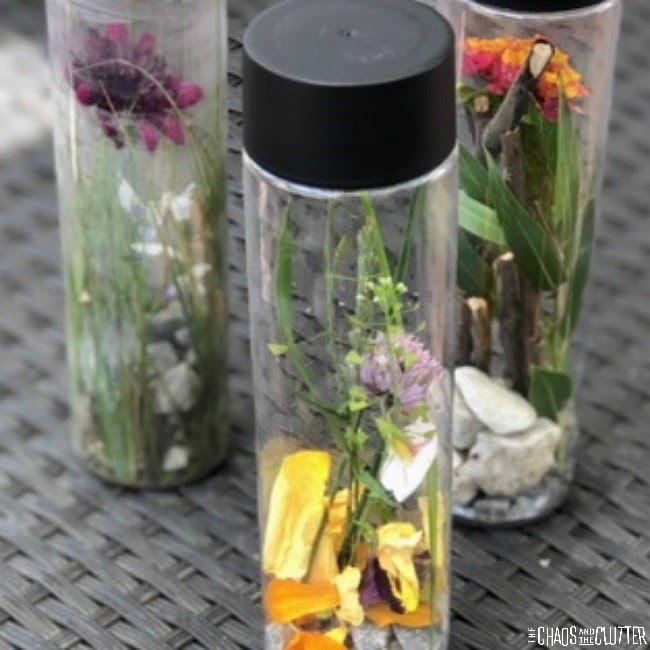
pussy willows
leaves
snow
water
flowers
flower petals
weeds
pebbles
seeds
dirt
mud
sea shells
pine cones
pine needles
feathers
herbs
grass
acorns
sand
berries
insects (only if you poke holes in the bottle of course)
wheat
You can do this sensory activity in any season. Encourage interest in the different colors and textures as the opportunity arises. The nice thing about that is that the natural sensory bottle you make in winter will be very different from the one you make in spring. My favorite season is fall because of the colors of the leaves. They make beautiful sensory bottles!
Nature Portraits
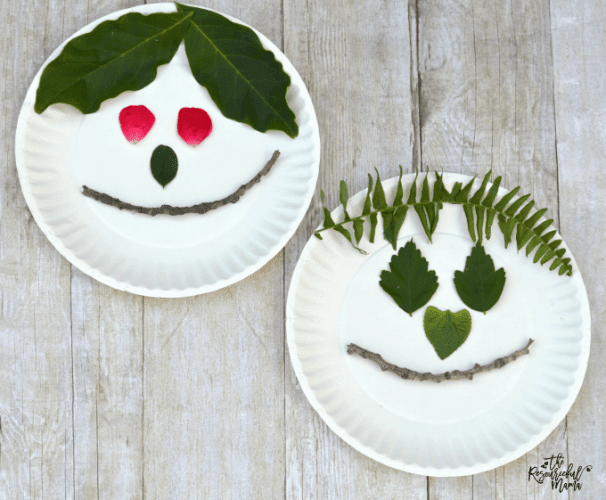
Does your toddler like making faces? Well, then this activity from the Resourceful Mama is perfect for her! With paper plates and lots of leaves, flowers, berries and more, you and your toddler can make some hilarious looking faces! Gather twine or long grass for hair and go crazy with some weird hair styles! Just hand the materials to your little one and let her create a face to her liking.
Nature Collage
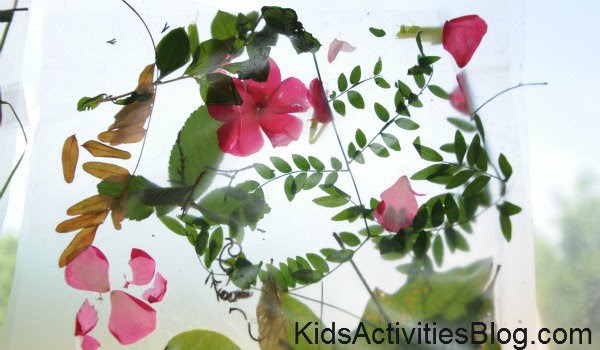
Collages are among the easiest craft projects for toddlers and kids, and this one from Kids Activities Blog is no different! However, what’s special here is that you use only natural elements to make the collage! They have used contact paper to make the collage do double duty as a sun catcher, but you can just use a sheet of thick paper or card stock as well. Use fresh flowers or dried ones – they’ll all look pretty!
Turn a Family Scavenger Hunt into a Nature Mobile Fall Craft for Kids
Today we have a fun nature mobile fall craft for kids that doubles as a great way to get your family active. Strap on your hiking shoes and get ready to forage through the wilds to get the supplies for this easy craft! Winter is on its way, my friends. There is no denying it. The temperatures are dipping and some of us have to turn on our heat at night! Soak up the last of the warm remnants of summer and spend some time outdoors before the icy temps hit. While you’re out there, keep an eye out for some great supplies in nature for this craft!
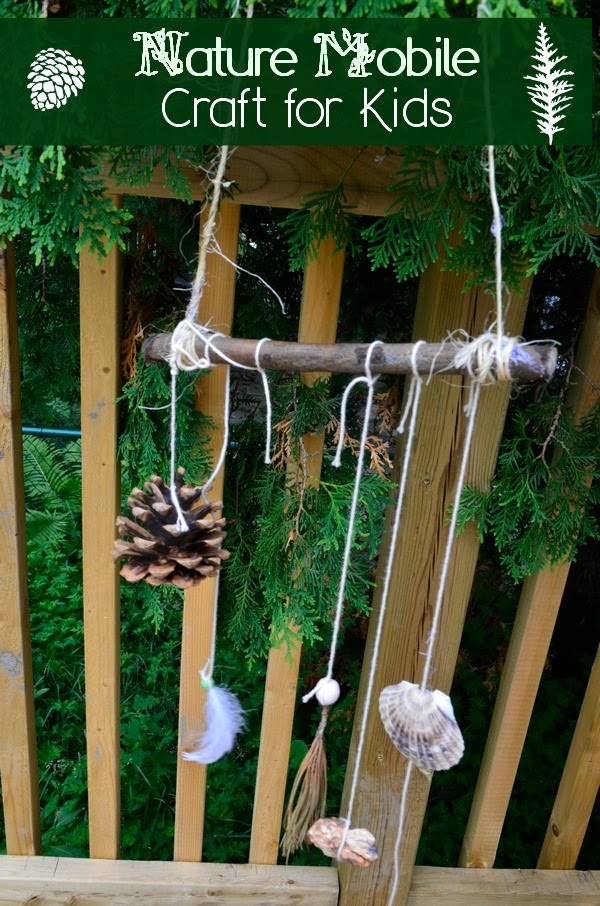
WHAT YOU’LL NEED:
Pinecones, seashells, feathers, cool rocks and any other natural elements that you find on your journey.
Twine or other natural-looking rope
Beads, if desired, preferably in browns, greens and other forest colors.
A thick stick or twig
HOW TO MAKE IT:
Start by gathering your supplies for this fall craft for kids. This is the really fun part! If you live in a woodsy area, you could find everything you need in your own front yard. For the seashells, dig into your family memory box from past trips to the shore. Don’t have seashells? No big deal, you can really use any natural elements here. The key is to make it meaningful to your family.
Lay everything out in front of you so you can see what you have. Take the thick twig and place it at the top of your surface. Arrange your other elements until you have everything where you want it.
Cut your twine in varying lengths, enough pieces for each item.
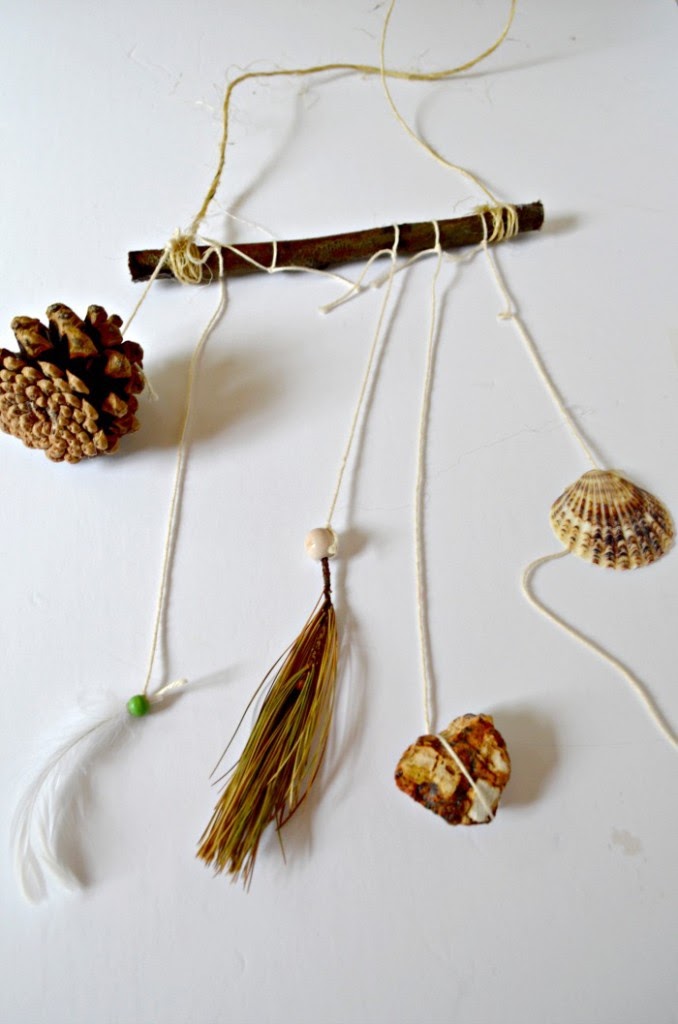
4. Use the twine- and beads, if desired- to attach each piece to the thick stick.
5. Create a hanger by tying the twine to each ends of the stick, with enough give in the middle to let it dangle from your hook.
6. Hang your nature mobile someplace where everyone can admire it!
That’s it! Easy, right? You could take this nature mobile fall craft for kids in so many different directions. Make one each season and bring it out to celebrate the change in weather. Make it a new tradition: when you go on vacation, search for items for another mobile. The great thing about this fall craft for kids is that it has the potential to bring the entire family together.
Here you will find loads of fun things to do with sticks. My children are forever collecting sticks. Sticks have to be the ultimate toy or craft material. Children just love them. I love how children’s imaginations come to life with a simple stick. I’m going to share lots of ideas for the humble stick.
Things to do on a walk with sticks
My kids love collecting sticks on walks. They’re one of our favourite things to collect on a nature walk. It always keeps them happy. Perhaps yours do too. Have you ever wondered though about what to do with sticks? Below you’ll find loads of stick ideas.
There are so many things you can do with sticks on a walk. Here’s a few idea for activities with sticks to get you started with.
How to Preserve Sticks
for Kids' Play
Use them as a walking stick
Sometimes the most simple ideas are enough to keep children entertained on a walk. A stick seems to bring our my children’s imaginative play and their inner explorers too!
Play pooh sticks
Do you remember playing pooh sticks as a child? All you need is a stick each and a bridge over a flowing river or stream. Simply all throw your sticks in at the same time, on the side of the bridge where the water is flowing away from you, run to the other side and see whose stick comes through first. Sounds simple but kids love it. Just watch their competitive or investigative side come out. What kind of stick goes fastest? Is it better in the middle or near the sides of the stream?
Make art on the floor
Collect some sticks, fallen leaves, pine needles and other natural loose parts and create art on the floor. Perhaps you’ll make a beautiful mandala or a simple pattern or even a picture. Find some summer art activities to try here.
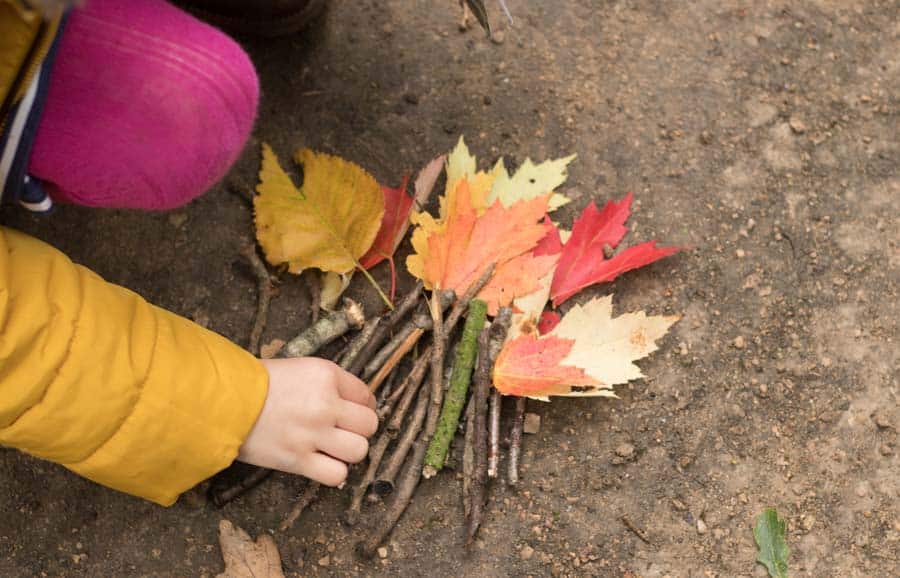
Our bonfire picture
Create a stick maze
Lay sticks on the ground to create the pattern of a maze. If you create it large enough you could challenge someone to walk through it or perhaps just roll a conker through a smaller maze.
This is one of our favourite winter activities for kids.
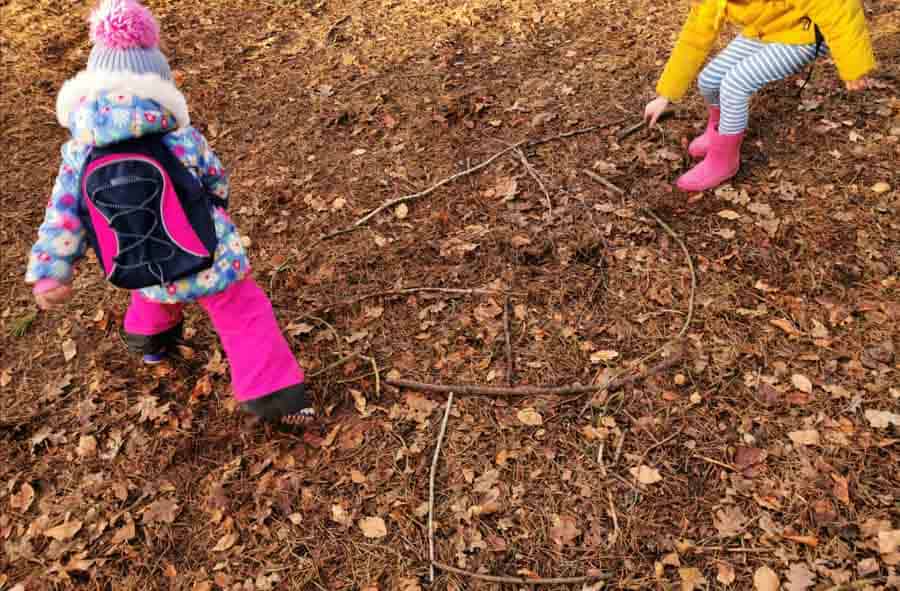
Can your kids create a stick maze?
Make a journey stick
My girls love creating journey sticks. They’re really fun to create on walks. They are a collection of natural things that your child finds on your walk. Anything from leaves, feathers and wildflowers.There are different ways to do it depending on the age of your child. The simplest way is to take some tape to stick things to a stick. For older children, take some coloured wool or * garden twine and tie the bits of nature to your stick.
Find step-by-step instructions for two easy ways to create a journey stick here.
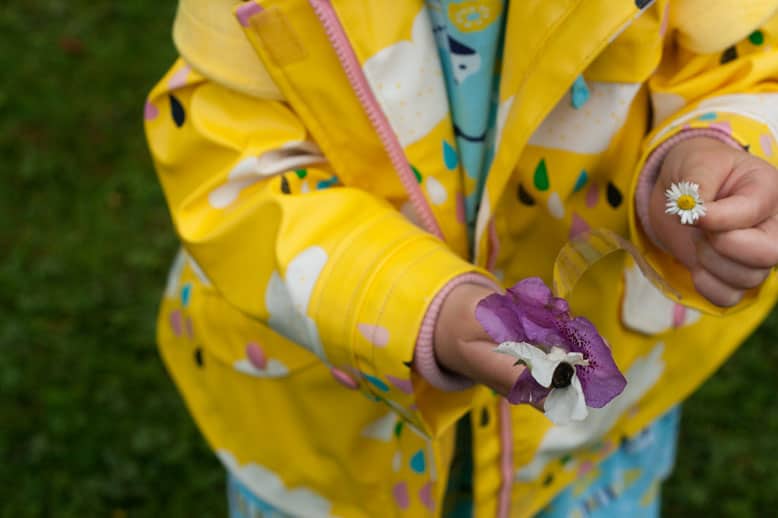
Sticking flowers to her journey stick
Play fetch
Perfect if you have a dog but my kids actually like to pretend to be dogs and play this sometimes too.
Make a stick den
My girls love finding stick dens on walks. Why not have a go at den building yourself though? One large enough for your child is not always possible but how about creating a small one for a toy? Find out how to build a den with sticks here.
Find more fun forest school activities here.
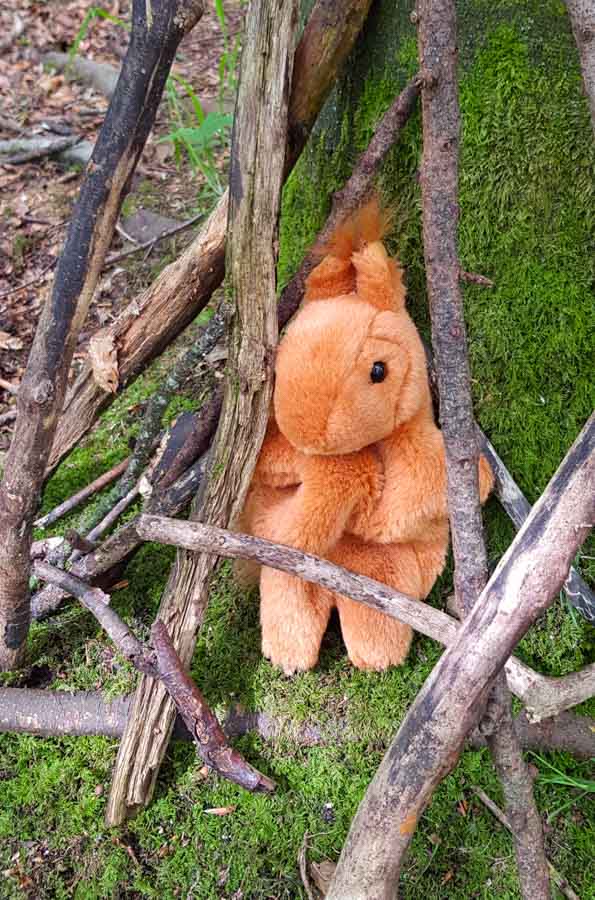
Measure how deep a puddle is
Try guessing how deep a puddle is and then use a stick to measure. You don’t need to take a ruler to measure exactly but it’s a great maths activity for preschool and primary school if you do.
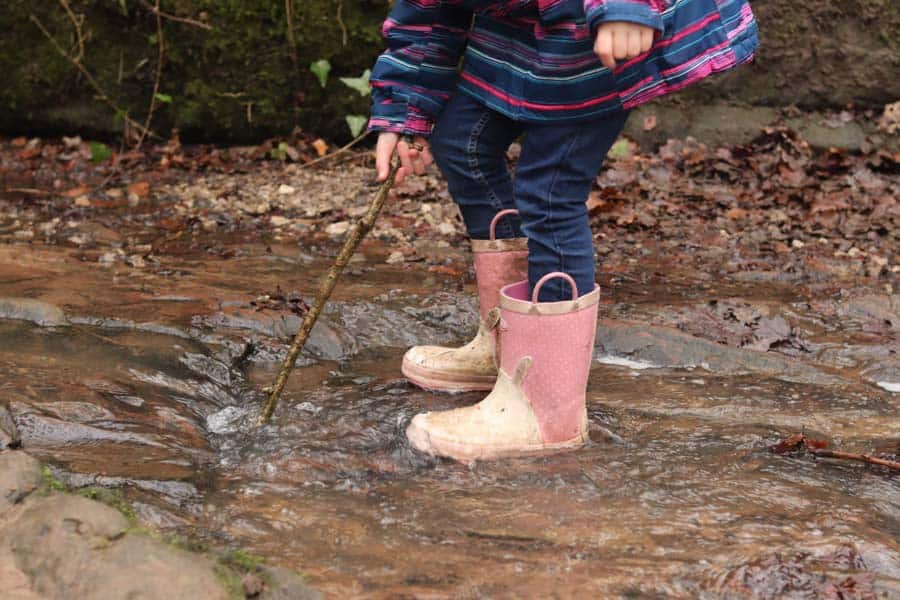
How deep is this puddle?
Nature crafts to do with sticks
This is the section for you if you have ever wondered what can I make with sticks? I have lots of stick craft ideas for you.
My children love creating as much as they love being outdoors so we love to combine the two. Nature crafts are also perfect for bringing nature inside rainy days. Crafts are also a good way to practice fine motor skills as your child will be handling small pieces in all these fun ideas.
You can do many of these crafts out and about if you have a few basic supplies with you or they are a great way to use that ever growing pile of sticks at home. These are the supplies we love:
* String or twine
You might choose to collect the sticks on your walk and do the crafting at home. In this case you need a * children’s treasure collecting bag. My kids love collecting nature on our walks.
Create wool-wrapped sticks
A really simple nature craft is to tie a piece of wool to a stick and tightly wrap it around the stick and then tie off at the other end. You could do them all one colour or change colours to make a pattern.
Create a nature loom weaving
Make a frame using four sticks and some garden twine, string or wool which you use to bind the corner together. Once you have your frame tie a piece of wool to the frame and wrap it around the frame from one side to the other side. Then simply fill it full of nature such as leaves, long grass and flowers. This is one of many Forest school activities for 2 year olds.
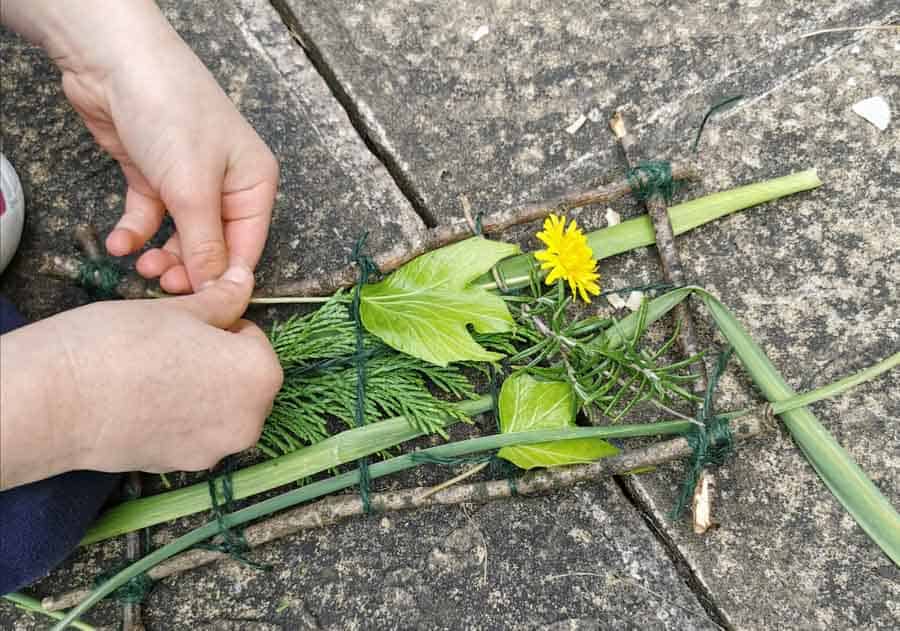
Make a bow and arrow
For this, you will need a flexible stick for the bow and a shorter, straight stick for the arrow. Start by making the bow by securely tying some wool to one end, bending the stick into an arc and tying the string at the other end. You can decorate your stick with feathers, wool and washi tape. As well as using cardboard to make a point for your arrow.
Make flags
Sticks are perfect for making flags. The ones below are triangles of decorated paper, attached with * masking tape. So simple but kids will love making them, displaying them, using them as plant markers in the garden or running around using them as batons in a relay race.
Make a stickman
We love the Julia Donaldson book * Stickman. Why not make your own with sticks bound together with some wool. Perfect for children to use in their own storytelling sessions.
Make a stick wind chime
How about using some painted sticks to make a wind chime for your garden like this one?
Make a god’s eye
This is a great craft that uses sticks and wool to make a god’s eye, this one is ideal for older kids. Find out how to make them Gods eye weaving. They’re not only fun but they’ll use up all those tangled-up wool scraps too.
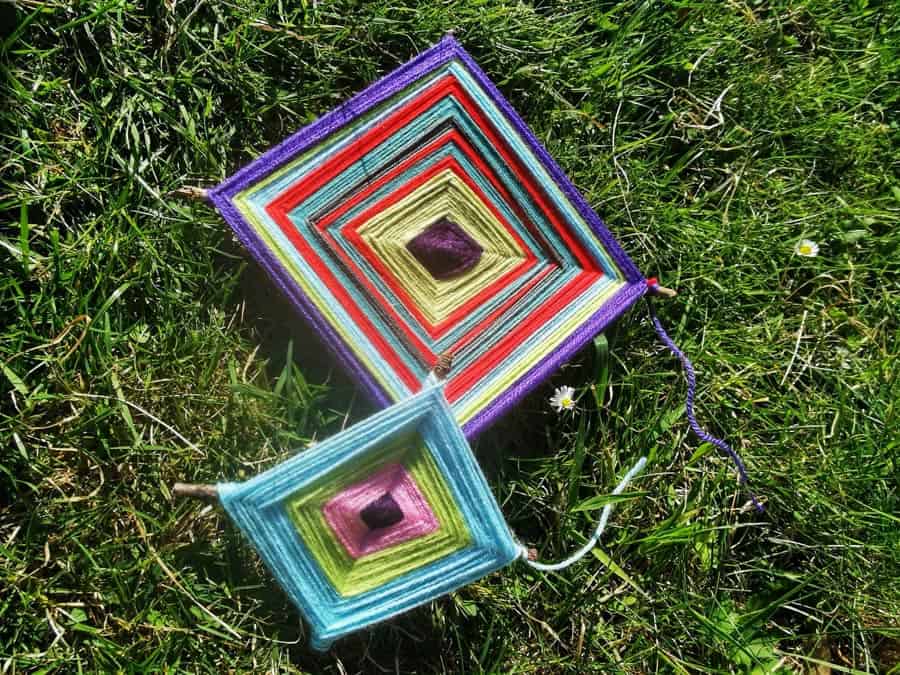
Make a stick boat
Stick rafts or stick boats are really simple to make and then you can take them outside to float their little boat in a puddle, stream or even the seashore.
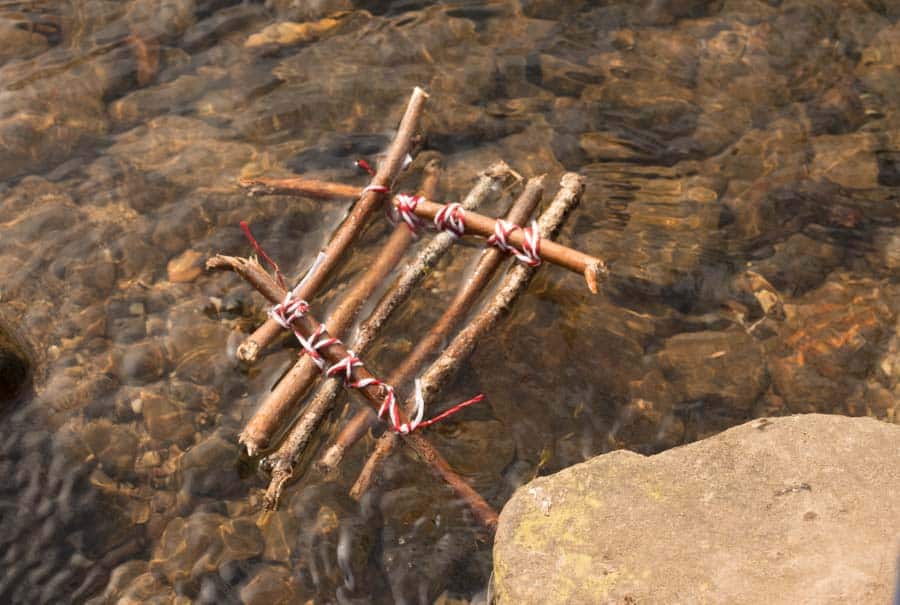
Make a wand
There are many different ways to make a magic wand. The one below is made with flowers and leaves tied to the stick, a real flower fairy wand. We’ve also made them with ribbons, beads and pipe cleaners. Simply choose the most fun way for your child.
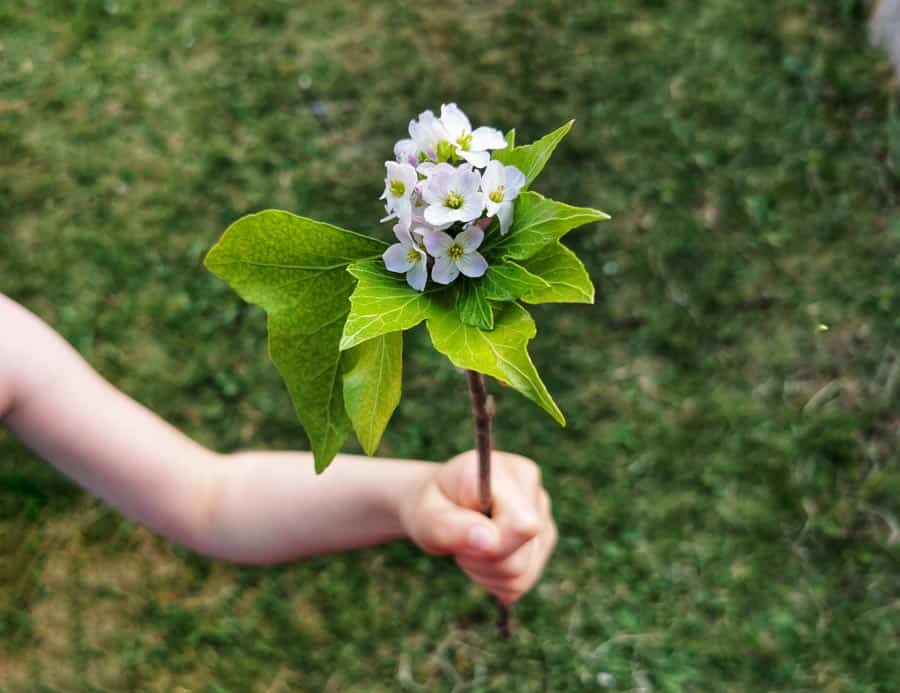
Use them in a bug hotel
This is a really simple bug hotel to make. Simply thread a length of string through an empty kitchen roll tube and tie the ends together to make a loop. Then fill the tube with sticks. You could also do the same with a plastic bottle with each end cut off to make a more weatherproof and permanent bug hotel.
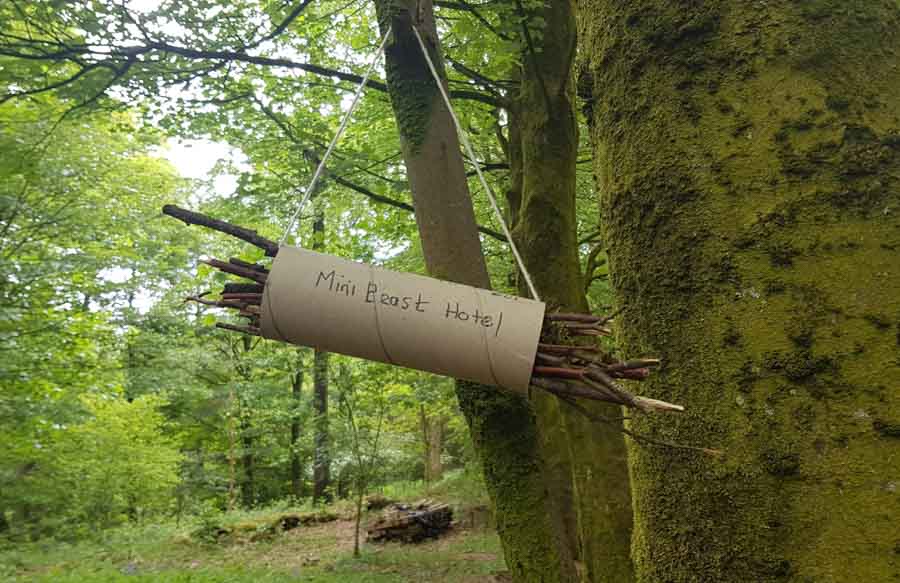
Use them with clay to make creatures
Air-dry clay is a great art material to combine with natural materials. Sometimes my kids will make creatures like this cute little hedgehog. Short sticks are great for spikes but also legs and arms in other creatures. Find * air dry clay here. You could also use play dough for young children.
Decorate them
Why not wrap * pipe cleaners around sticks? you could even add beads or other decorative objects to some of the pipe cleaners. A great fine motor activity.
Paint them
Washable * poster paints are great for worry-free painting with young children. For older children, acrylic paints will give more vibrant colours. I love these * acrylic paints for kids (UK only).
You could even decorate your sticks further with pipe cleaners and beads once dry. This is always such a fun activity.
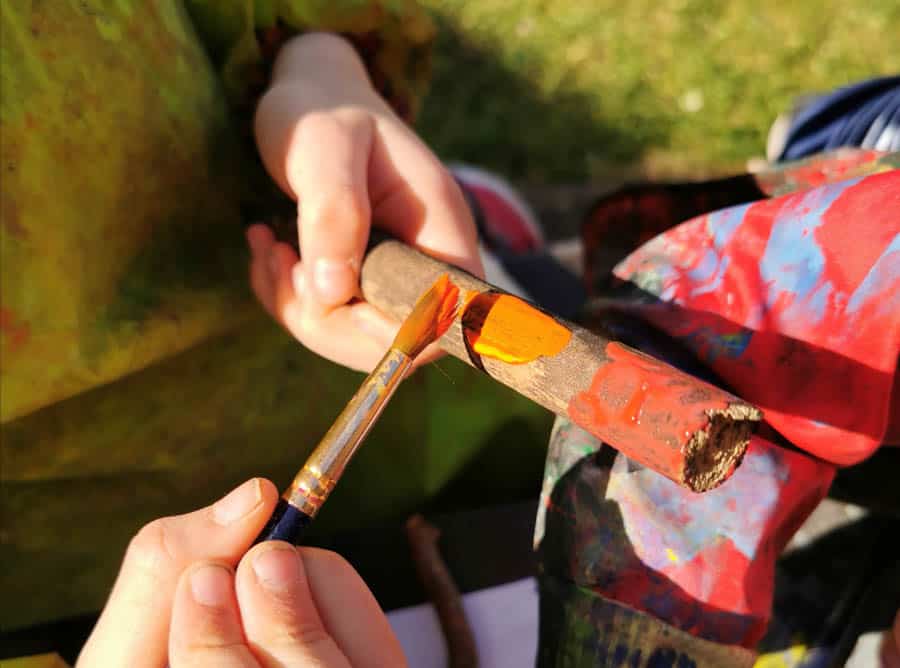
Painting sticks with washable poster paint
Make a nest
Use sticks, moss, straw and anything else you can find that is suitable to make mini bird nests.
Make a stick picture frame
Create a really simple frame using 4 sticks bound together as we did for the nature loom above.
Make nature paint brushes
Painting with nature is so much fun. In the autumn we love painting with leaves and conkers (see my post on autumn process art for more details). Nature paint brushes can be made all year round with anything you find. Think fallen leaves, dandelions, feathers and moss. Simply tie your chosen natural material to a stick. Then give your child the nature paintbrushes, some paint and paper and watch them explore the different marks each brush creates.
Find more Easy nature art for kids here.
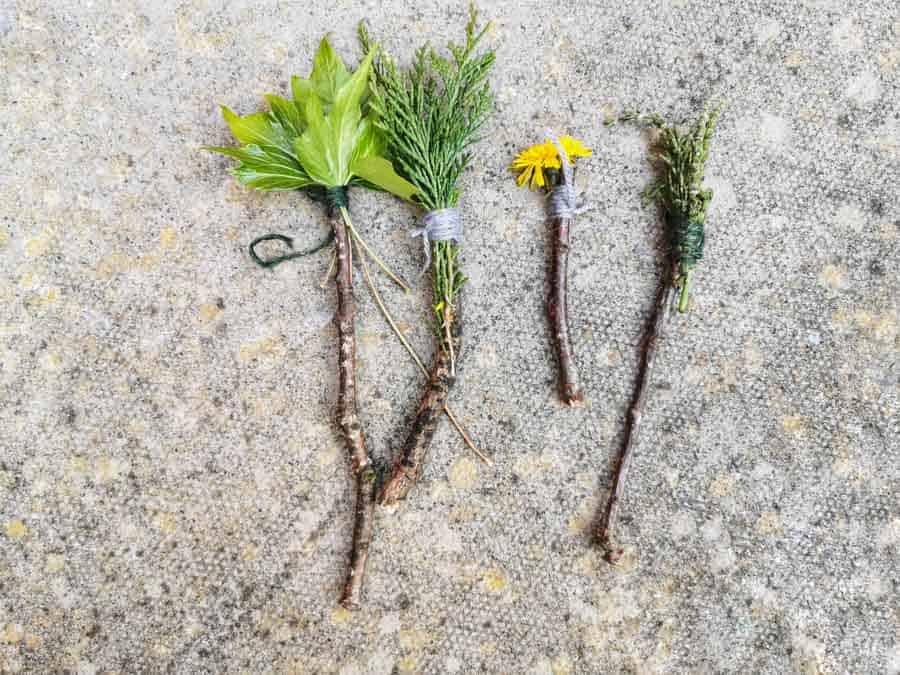
Try whittling
This is something I’m keen to try with my kids but we never quite get around to it. Here is a great book full of tips and projects – find my Forest craft review here.
Find a beginners * whittling kit here (UK)
Make a stick butterfly
This is a really simple to create stick butterfly craft with kids. All you need are sticks, coffee filter paper, felt tips and pipetts. How beautiful are they?
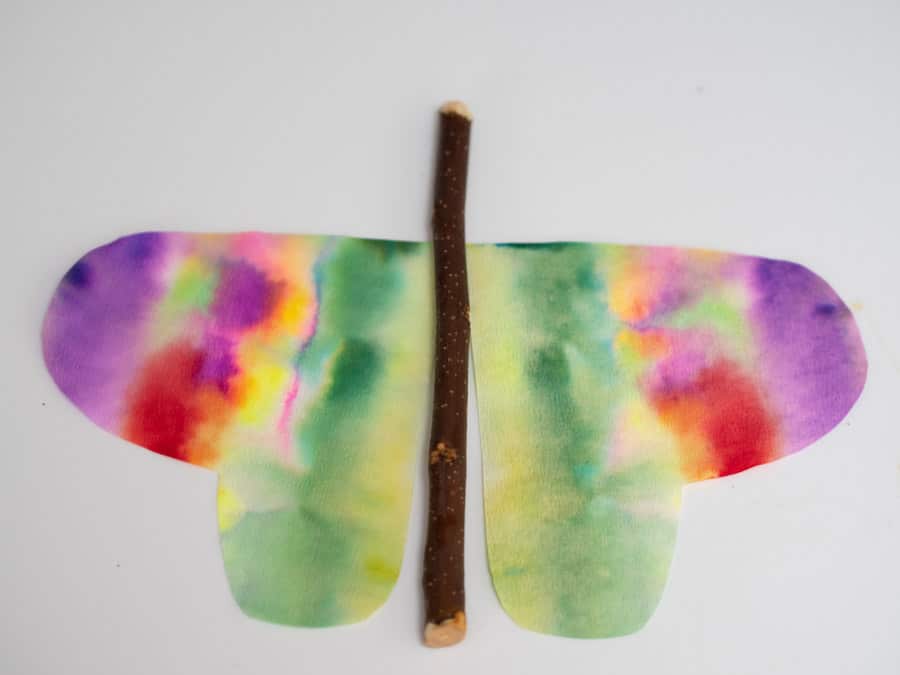
Other things to do with sticks
Use them to do outdoor maths
Sticks can be used with other natural loose parts in all sorts of maths activities for all ages. Preschoolers can count them or arrange them in size order. Primary school kids can use them as 10’s and stones, leaves or shells as 1’s to help them solve maths questions. For more ideas for taking maths outdoors, I love this book * Messy maths.
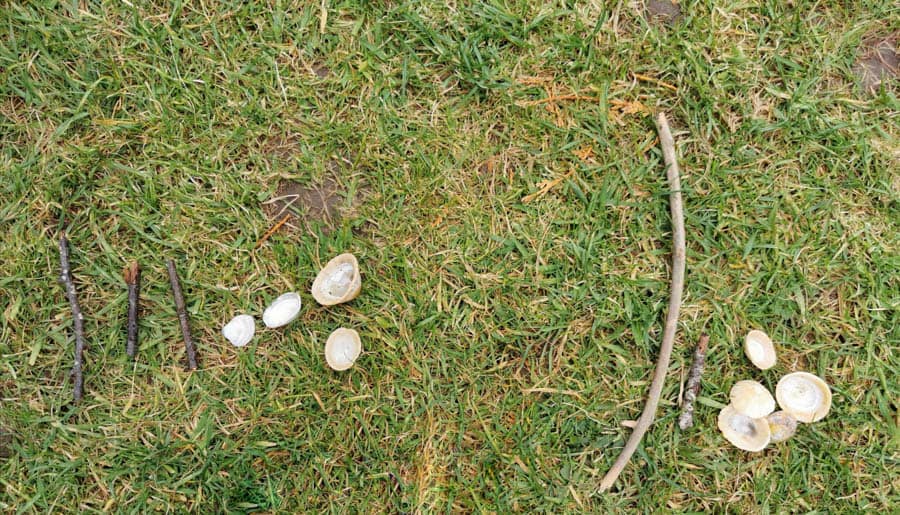
Using sticks and shells to represent 34 + 25
Use them to write letters
Can you write the whole alphabet using sticks and other nature?
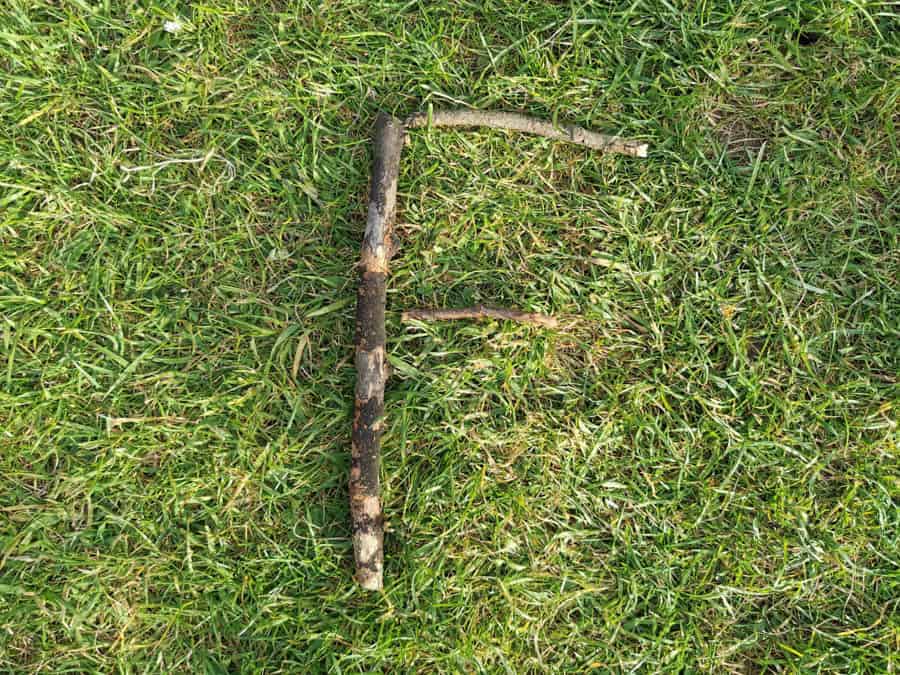
Stir a mud pie
Kids love mud. Sticks are great for using to mix things like soil and water or perhaps your child will choose to make a magic potion with water and flower petals. They can use a stick to mix up this potion.
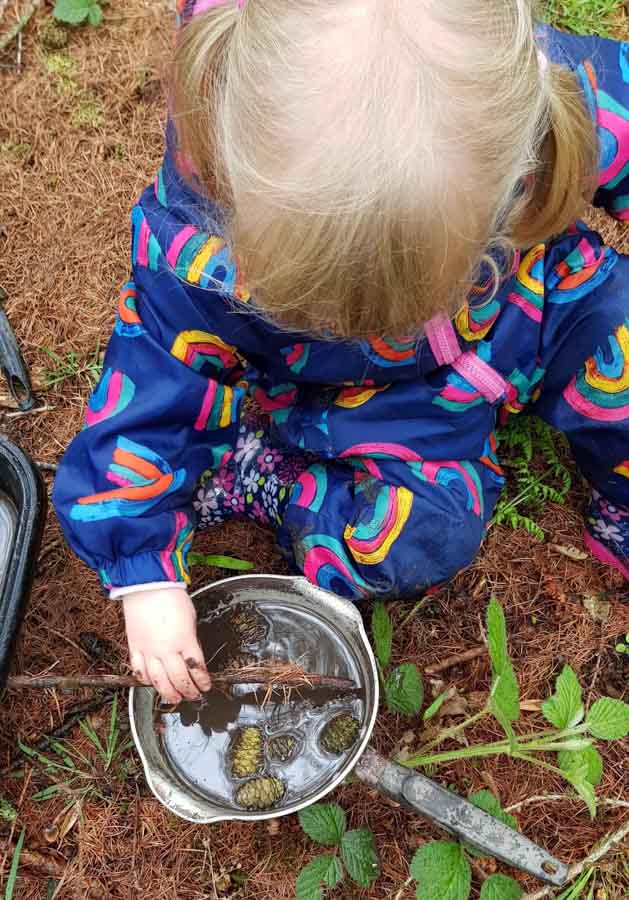
Mixing mud soup
Make a campfire
Toasting marshmallows over a fire has to be one of the highlights of forest school sessions for my kids. Pictured below is a * Kelly kettle.
Make sure you pack a * fire steel and these * kneeling mats are lightweight and great for kneeling on damp grass.
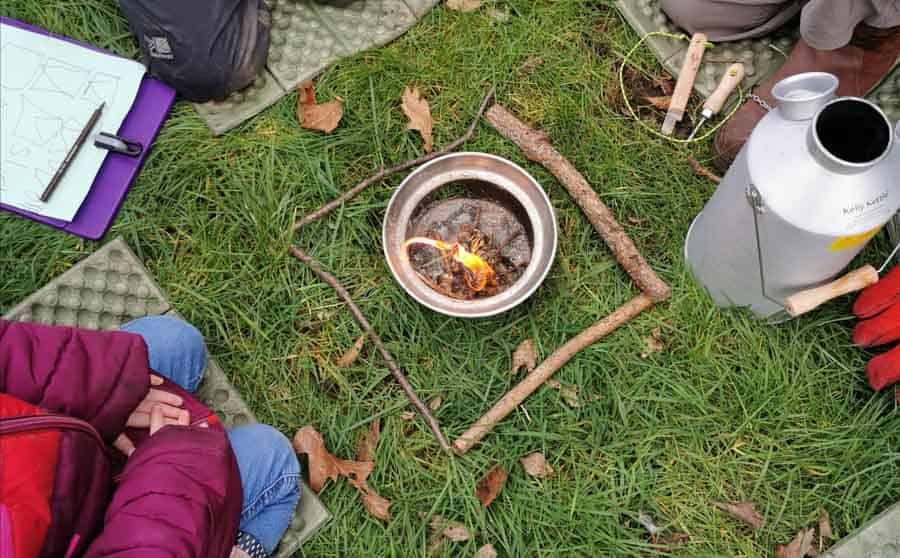
Pretend it’s a broomstick
I’m sure your kids will come up with even more things to pretend the stick is. Tell me your favourite stick activity in the comments.
Leaves are another great natural material to use in activities. Find loads of autumn leaves activities for toddlers here.
Find more ideas for outdoor activities for toddlers here.
If you’re particularly looking for outdoor activities, then you need Autumn outdoor activities for kids
I know how difficult it can be to keep kids happy on a walk. I’ve got you covered with 25 things to do on a walk with kids.
Do you want even more ideas for things to do outside with kids?
Perhaps you need ideas for things to do outside at home? There are so many things you can do in your garden, driveway or even a small balcony.
Find my favourite inspiring outdoor play quotes here.
How to Prepare Pinecones for Crafting
Before we get started with the crafts, though, here are a few tips about preparing your pine cones for crafts. You don’t HAVE to do any preparation if you don’t want to, but since pine cones can often harbor tiny bugs, I always recommend using one of these quick prep solutions to avoid introducing any pests into your home.
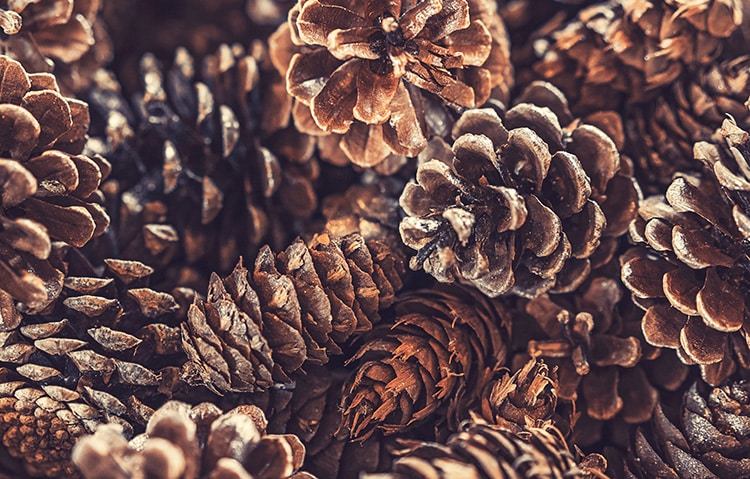
Prep Pine Cones with Vinegar
In your sink or a bucket, make a vinegar solution that is 1 part vinegar and 3 parts water. Soak the pine cones for 30 minutes in the solution and then allow to dry completely before using them for crafting.
Prep Pine Cones in the Oven
To rid the pine cones of any pests, preheat your oven to 225 degrees. Place the pinecones on a baking sheet and bake for 45 minutes (larger pine cones can be baked for up to 60 minutes if necessary). Baking the pine cones into the oven will also cause them to dry out and open up a bit more, which is really handy for crafting!
Prep Pine Cones with Both Methods
Of course, you could also opt to dunk your pinecones in the vinegar solution and then dry them in the oven. This is actually my favorite method, and it fully ensures that your pinecones are clean, free from any living organisms, and ready for crafting.
Fun and Creative Pine Cone Crafts!
Click on the images below to explore these 14 Creative Pine Cone Crafts from our friends! Please leave a comment on your favorites so our bloggy friends know you found them at Mom Does Reviews! ~ Happy crafting, Diane
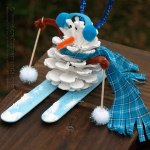


DIY Cotton Stem - Farmhouse Style Decor

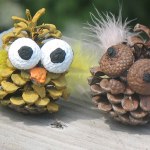
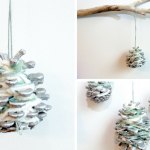
Elegant Yarn Wrapped Pinecone Ornaments
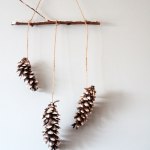
DIY Snowy Pine Cone Wall Hanging
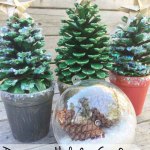
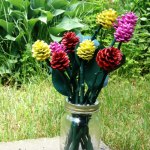
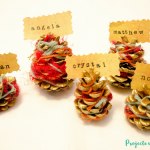
Beautiful Pinecone Place Card Holders for Your Holiday Table

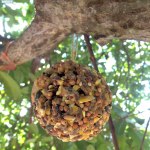
How To Make A Pine Cone Bird Feeder
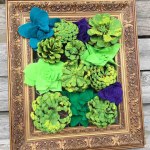
Faux Succulent Vertical Hanging Wall Garden
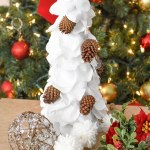
Wonderful Fall Leaf Crafts Ideas
When it comes to fall crafting, nothing beats fall leaf crafts!
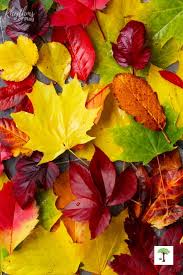
It’s one of the most fun and frugal nature crafting materials ever, and you can easily plan your fall leaf projects for every age group – there are a whole lot of possibilities! Here are some of my favorites.*this post contains affiliate links*
We love making all kinds of crafts with real leaves as it’s different shapes and colors allow many creative projects. You can make all kinds of different animals and creations with imagination being your guide.
When it comes to toddlers and preschool, our favorite thing to make is to supply kids with a bunch of leaves, googly eyes, glue and a sheet of paper and just let them create their arts and crafts. You’ll be amazed at all sorts of crazy cool things they will be coming up with (you’ll find some inspiration right here too).
We also have some cool ideas to share with you that will be great to use with a themed unit.
Have you surveyed the amazing colors of autumn and wondered how to preserve leaves?
If so, you’re not alone.
Autumn foliage season moves quickly. Once the leaves stop producing chlorophyll and morph from green to orange, yellow, or red, it means they’re getting ready to drop.
(This link will help you learn more about leaves.)
This process protects deciduous trees as they prepare for winter.
There are several ways to preserve leaves from the trees in your yard. You’ll need up to a week to use these three methods.
Adult supervision recommended.
To preserve leaves for crafts, you can press them between heavy books or a flower press, coat them with Mod Podge for a seal, dip them in melted wax for a shiny, protective finish, or use a glycerin bath to keep them flexible.
Other methods include laminating with plastic sheets or microwaving them between paper towels to dry them out before sealing with a spray.
Pressing (Drying & Flattening)
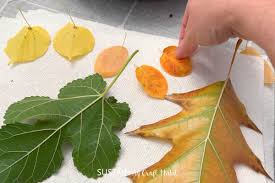
Prepare: Collect fresh, clean leaves and lay them flat, ensuring they don't overlap.
Sandwich: Place leaves between absorbent paper like newspaper or cardstock.
Weight: Stack heavy books on top of the paper and leaves, or use a flower press.
Dry: Leave them for several weeks, checking periodically, until they are completely dry.
Use: Frame them or use them in crafts.
Mod Podge (Sealing)
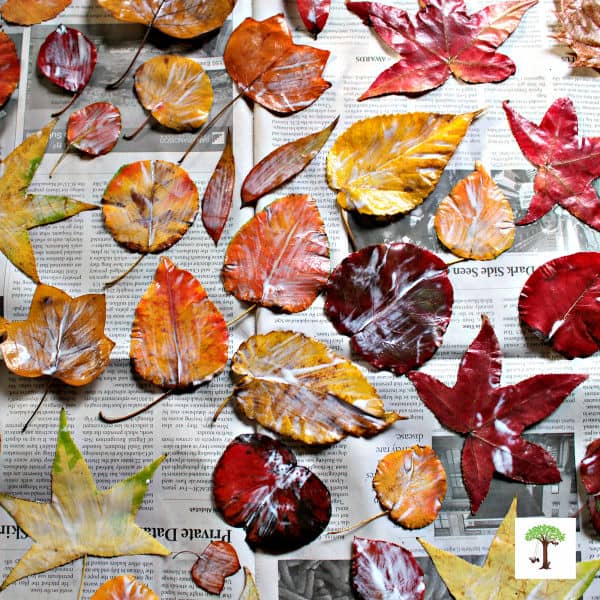
Prepare: Coat a table with old newspaper.
Apply: Use a foam brush to apply a layer of Mod Podge (or a watered-down PVA glue) to one side of a pressed leaf.
Dry: Place the leaf on the newspaper and let it dry completely.
Repeat: Flip the leaf and apply a coat to the other side.
Use: The dried leaves will be sealed and can be used in various crafts.
Wax Dip (Shining & Sealing)
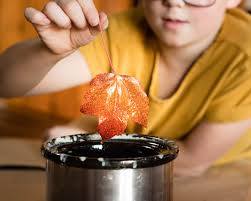
Melt Wax: Using a double boiler, melt paraffin wax or beeswax over low heat in a disposable pan.
Dip: Dip each leaf into the melted wax, ensuring both sides are coated.
Dry: Hang the leaves by the stems or lay them on wax paper to dry.
Use: Drip-dried leaves are preserved and ready for decorative accents.
Glycerin Bath (Flexibility)
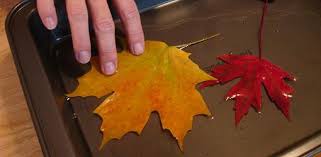
Mix Solution: Create a mixture of one part glycerin to two parts water.
Submerge: Place leaves in the solution and use a weight to keep them fully submerged.
Soak: Allow them to soak for several days to a week, depending on size and thickness.
Dry: Remove the leaves and pat them dry; they will become soft and flexible.
Laminating (Durability)
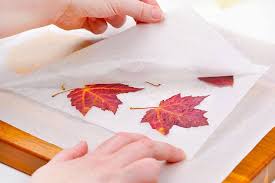
Arrange: Place the leaves in a single layer between sheets of laminating film or contact paper.
Seal: Run the arranged leaves through a laminating machine or use a hot iron to seal the edges of the plastic.
Use: This method creates sturdy, shiny leaves great for various craft projects.
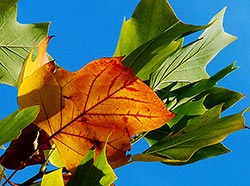
Let the leaves sit for a day or two and then finish by spraying an acrylic sealant on both sides of the leaves.
Compare the texture and color of the leaves after using the different preserving methods. Did one method work well for a particular tree species, but another method work better for a different tree species? What do you conclude about what happens to the leaves during the different preserving processes? If you’d like, use a tree identification guide for help identify the leaves of different species.
Additional Information
Try this leaf chromatography experiment to discover the different color pigments in leaves. The results might surprise you!
You might also enjoy pressing leaves (or flowers) in a plant press.
If “veins” and “bones” don’t scare you, try this Leaf Skeleton project.
Fall Leaf Art With Printable Prompts
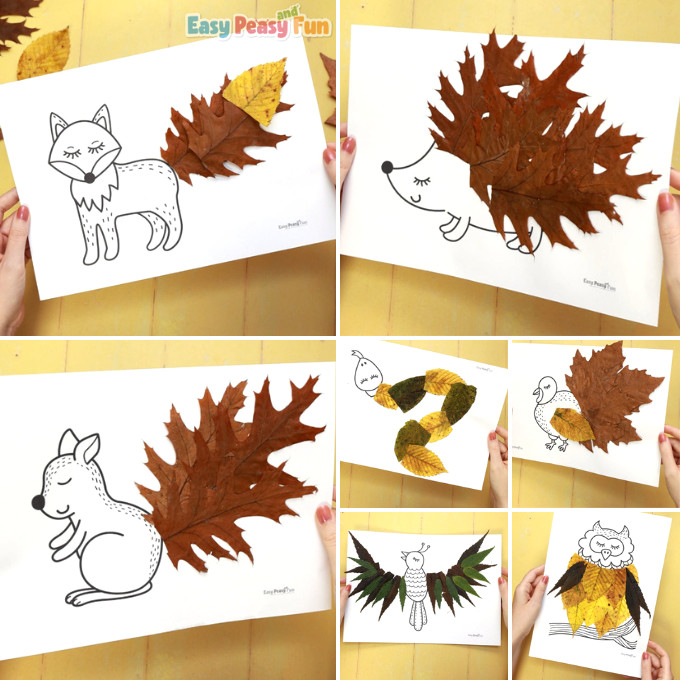
Draw simple forest animals or use our fun printable leaf art prompts to create a gorgeous fall-themed display. If you press and preserve leaves these artworks will stay as they are for years to come.
Easy Leaf Printing Art for Kids
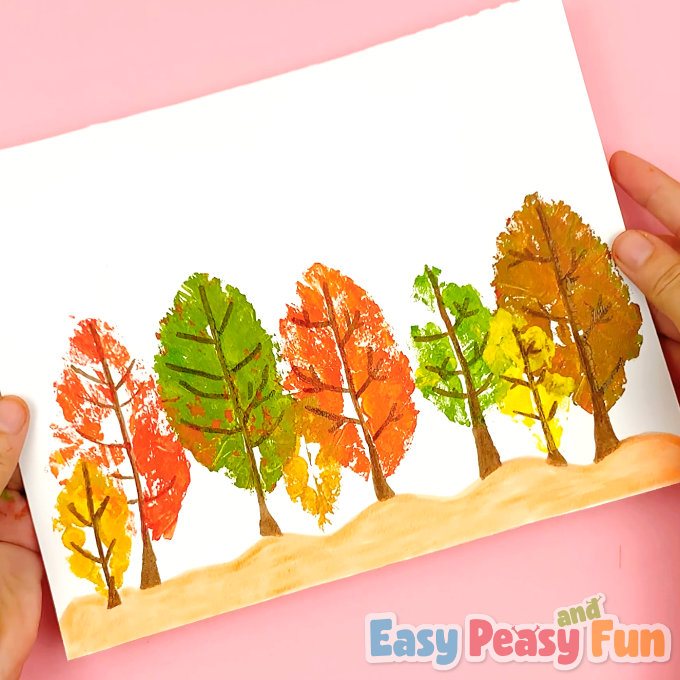
Why use regular brushes when you can use leaves as one? Paint the leaves and make all kinds of wonderful artsy creations. We have a simple-to-follow leaf art tutorial that will guide you through all the steps for making a fall forest scene.
Bat Leaf Art
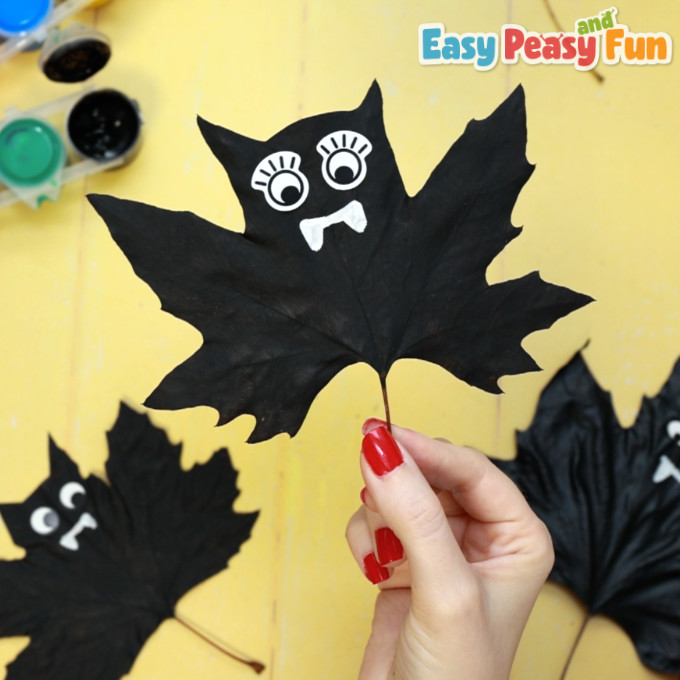
Gather maple leaves and transform them into the one and only flying mammal – the bat. See how we made our leaf bats.
Lion Leaf Craft for Preschoolers and Kindergarten
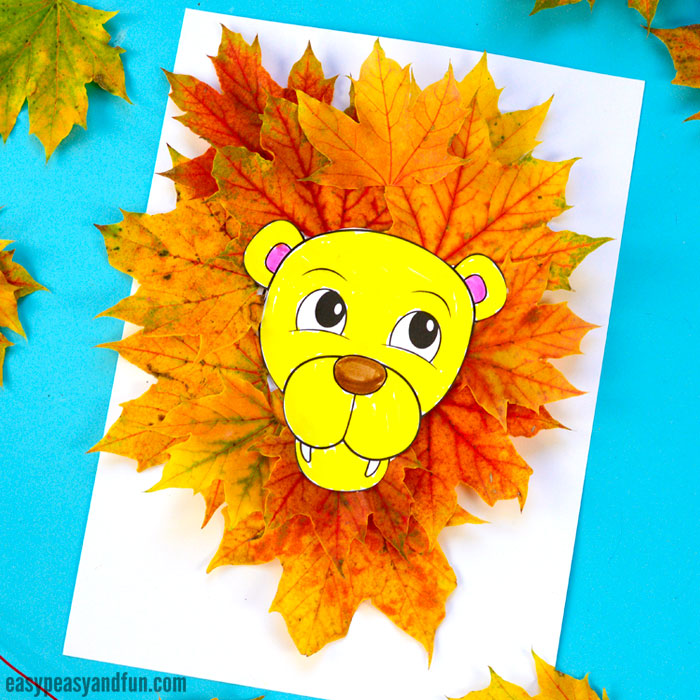
This magnificent lion leaf craft comes with a fun template for kids to color in, so it’s a great activity with leaves that focuses on fine motor skills and pencil grip.
For a more open ended process version skip the template and have the kids design their own lion head with a variety of materials offered to them – construction paper, paints, fabric, googly eyes…
Leaf Crafts With a Paper Plate
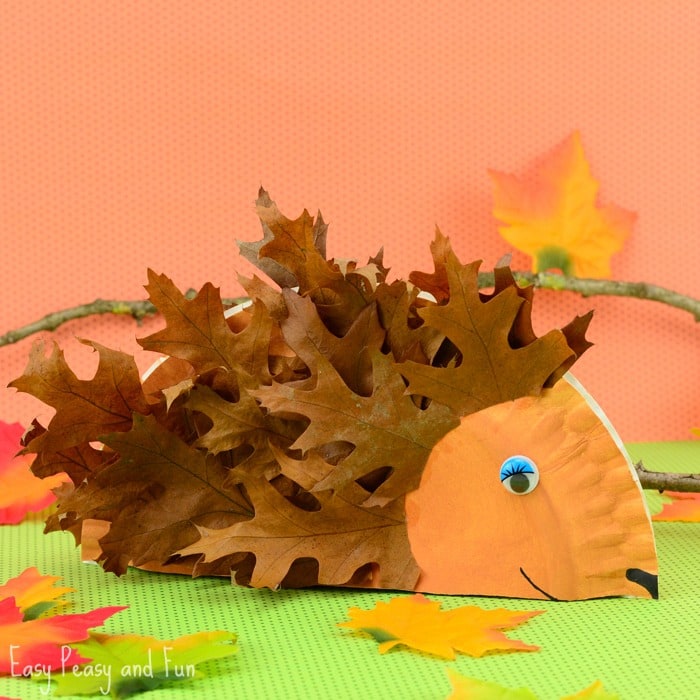
This paper plate hedgehog craft is one of my personal favorite paper plate crafts ever. Oh, the pointy spikes! Adorable!
And with deep paper plates, this one will easily stand on its own – with regular ones just tuck a paper roll between them to spread them a little, and it will work out just fine.
Why only use paints and paper when you can make an awesome-looking hedgehog with real leaves? Can there really be a more fitting fall leaf project than this one?
Paint them
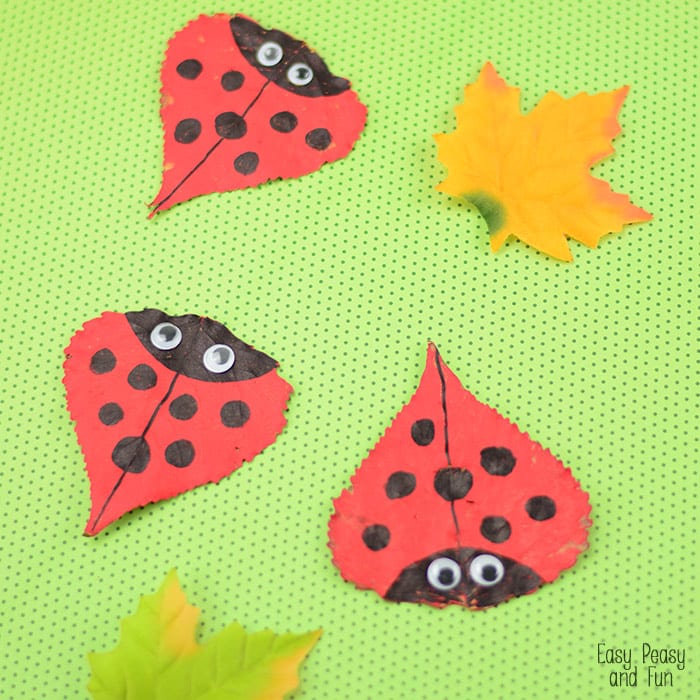
Give your little ones some paint and let them get super creative transforming real leaves into little creatures of all kinds…
They could be making leaf ladybugs, bugs, foxes, or anything really.
Draw on them
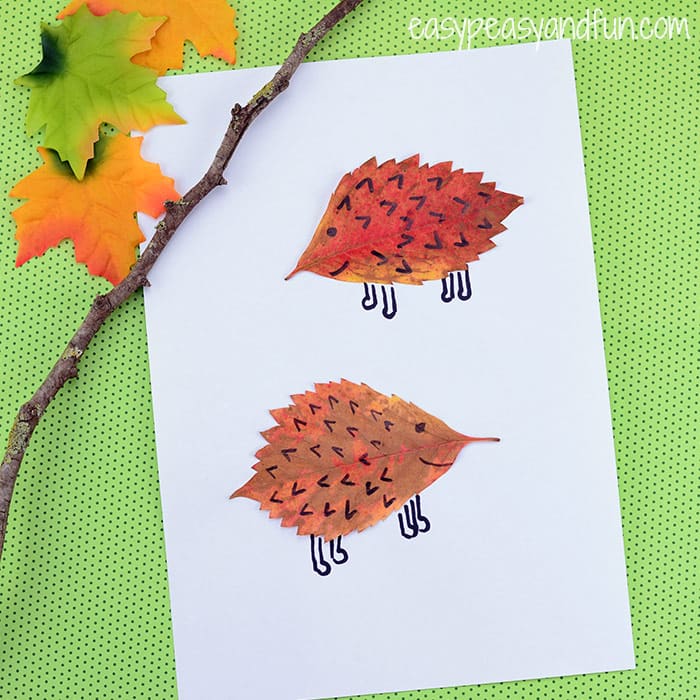
Give the kids a selection of dry leaves and a black marker and watch them create. From silly faces to these adorable hedgehogs. Only their imagination is the limit here!
Another Fun Template to Print and Get Creative With
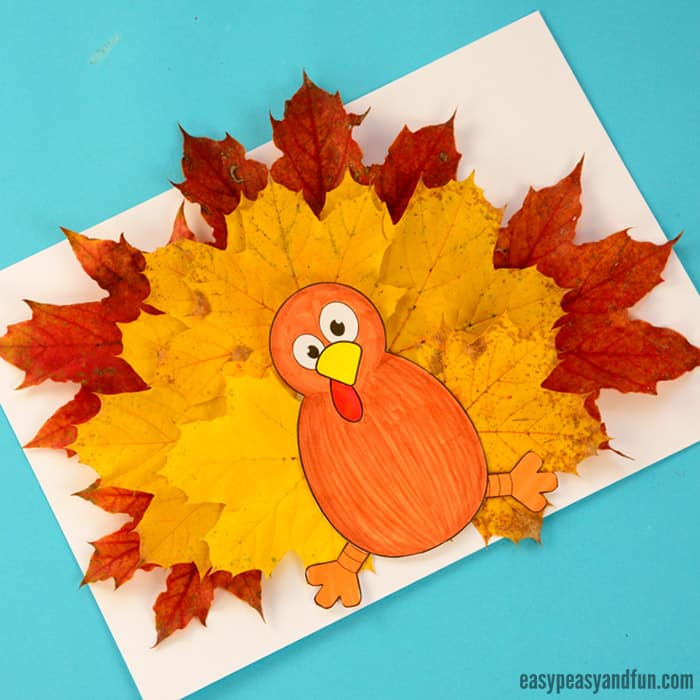
Turkeys are another fun theme to make in the fall time and to make things easier, we have prepared a printable turkey craft template… Just grab some real leaves on your next walk, and you have yourself a nice little fall leaf activity.
Pair Paper Rolls with Leaves
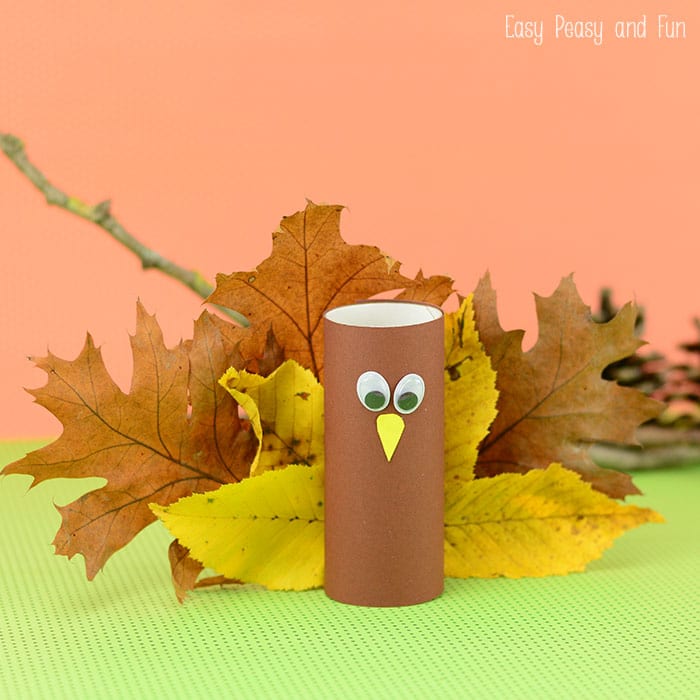
When two super popular crafting materials clash… Magic happens!
Combine leaves with paper rolls and create wonderful creatures. We loved making this paper roll turkey, and we just know a peacock would turn out pretty cool too.
Make Flowers
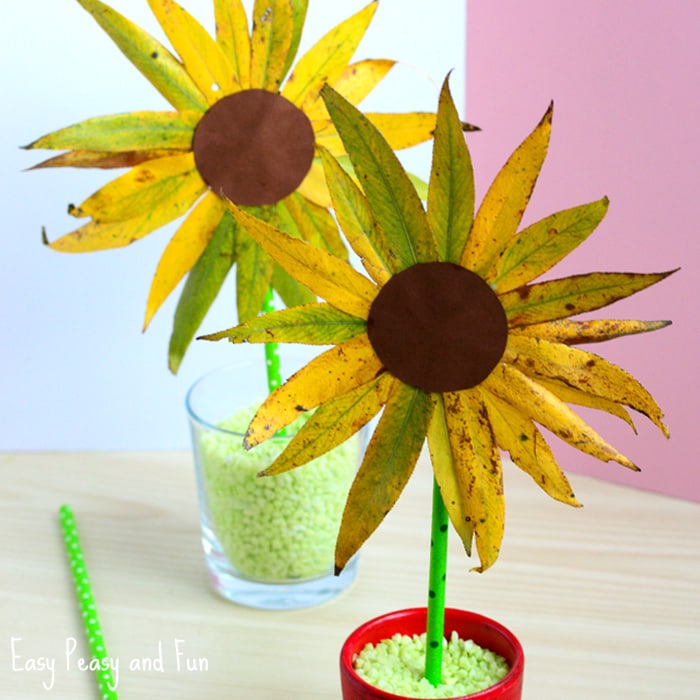
Gorgeous-looking flowers are another fun thing you can do. You can make them stand up like we did with this sunflower craft or have the kids glue the leaves on a sheet of paper.
Another Leaf and Paper Plate Combo
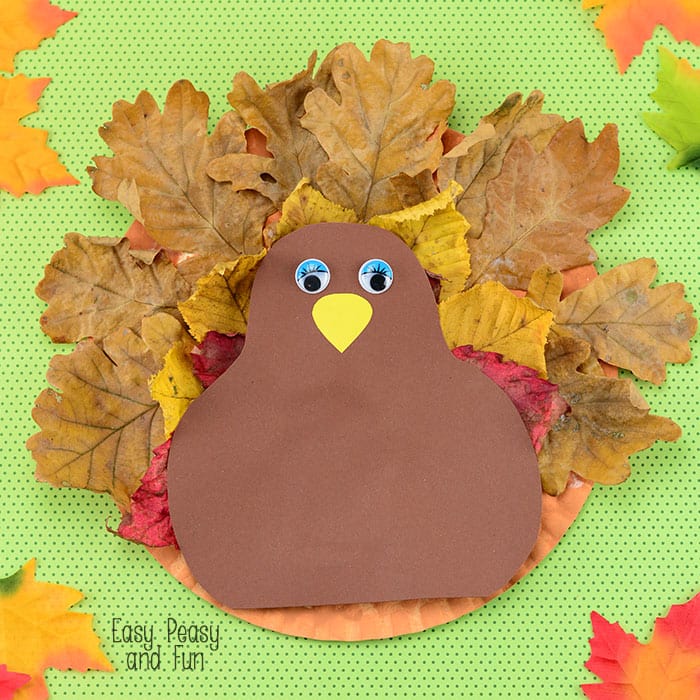
Use a paper plate as a base to stick all your leaves on and create a wonderful turkey craft or even a peacock one.
Pinceone + Leaves
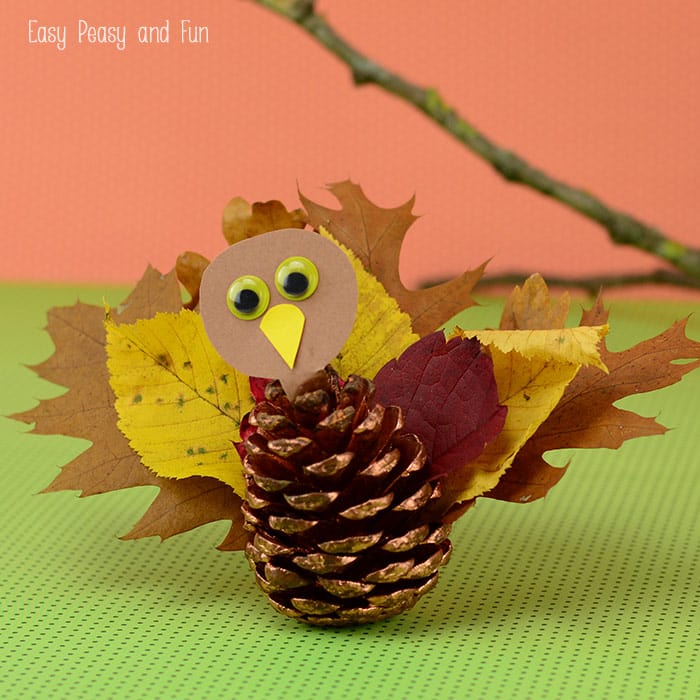
Why stick with one material from nature when you can have two? Pick up a pinecone and let the crafting fun begin!
More Wonderful Leaf Arts and Craft Ideas
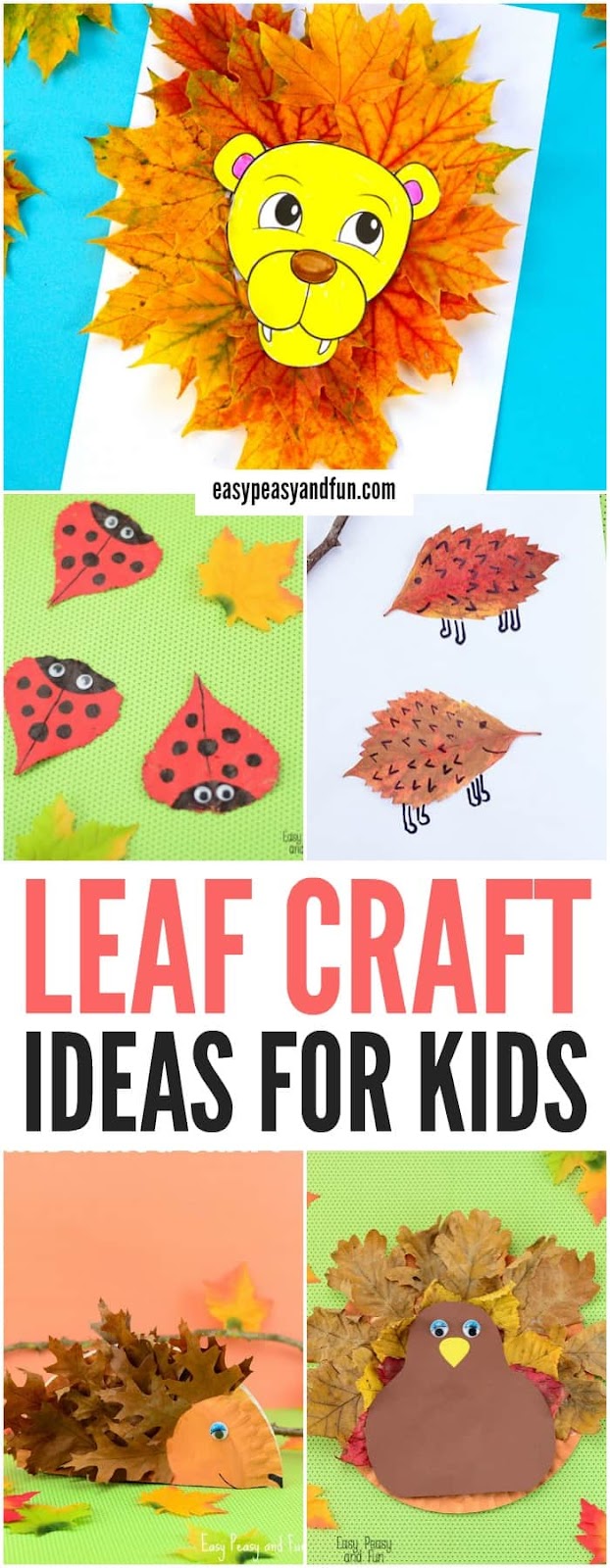
Art activity – get crazy creative with this simple activity from Arty Crafty Kids.
DIY crowns – what better way to celebrate fall season than to make yourself a wonderful crown out of nature’s materials like Red Ted Art did.
Pressed dishes – combine clay and leaves to make the most adorable little dishes – a great tutorial from The Best Ideas for Kids
Bookmarks – this cool technique from Buggy and Buddy can be used to make the most gorgeous fall bookmarks ever.
Dreamcatchers – falling asleep will be easy with these gorgeous dreamcatchers made by The Craft Train.
Zombies – the silliest idea from Mother Natured.
Mobile – you won’t believe how amazing a mobile made out of leaves can be! by hello, Wonderful
Leaf Prints – oh so colorful! I Heart Crafty Things
Another crown – this time it comes with a template you can decorate with either real leaves or other fun materials. by Twitchetts
Suncatcher – you can make great suncatchers with leaves, just check this one by Fireflies and Mud Pies
Threading Leaves – another wonderful fine motor activity by Kids Crafts Room
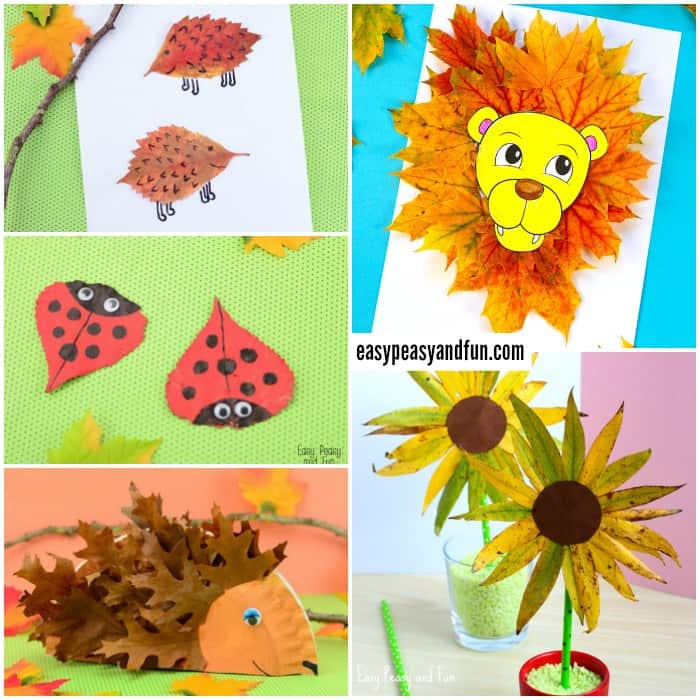
Related Posts
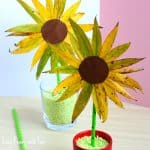
Leaf Sunflower Craft - Fall Crafts for Kids
Fall is the best time of the year to get crafty with the materials nature…
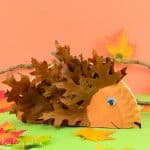
Paper Plate Hedgehog Craft - Fall Crafts for Kids
We'll soon be saying bye, bye to summer so it's just the right time to…
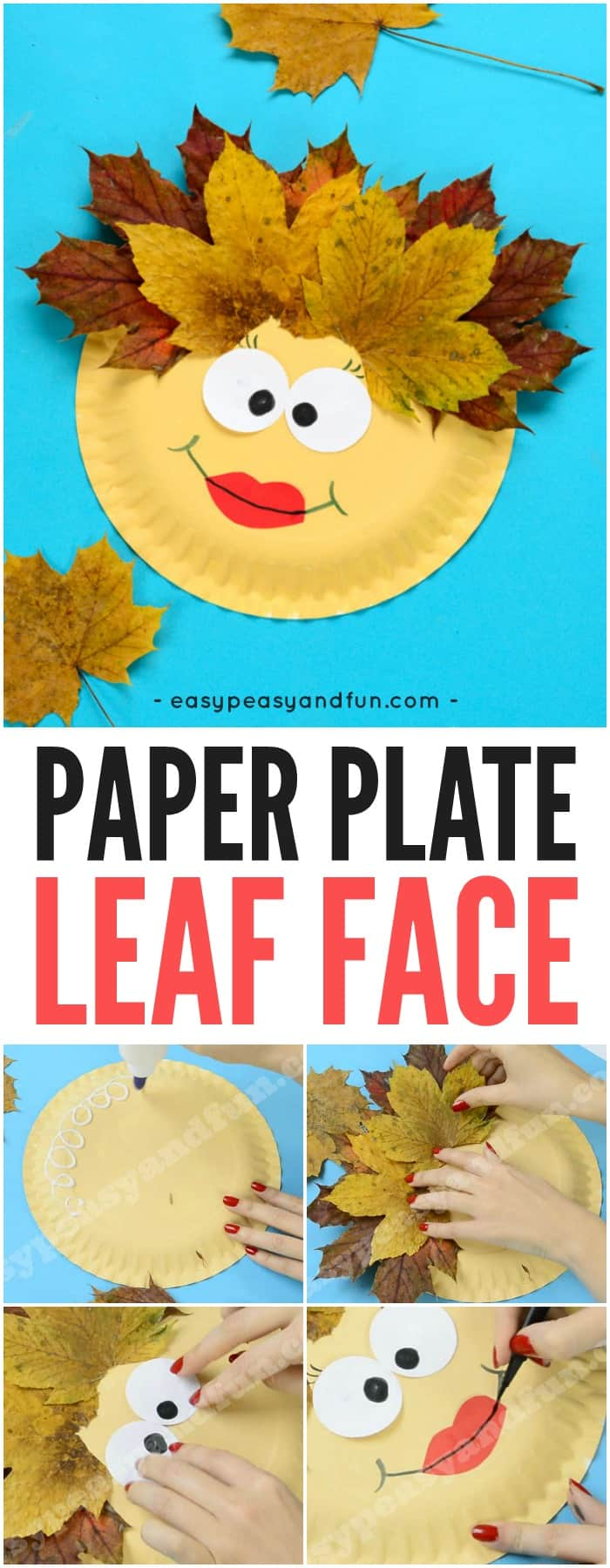
Grab the coloful fall leaves and let's make a leaf face paper plate craft together!…
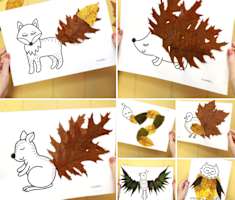
Fun Ways to Use Preserved Fall Leaves: Nature Crafts and Art Ideas
How to Make a Thankful Tree for Thanksgiving with Real Fall Leaves
Best Fall Nature Crafts: Includes leaf art ideas and nature crafts made with real fall leaves.
Natural Celebrations From Ranger Rick
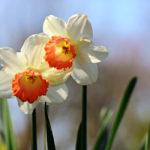
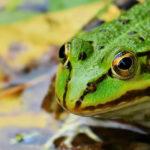
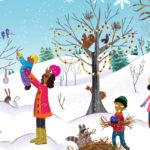
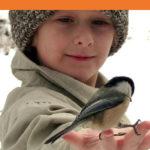
Attract Chickadees to Your Hand
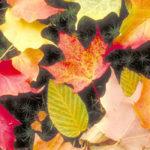
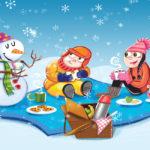
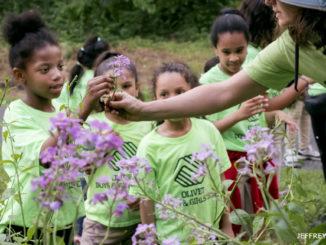
Hit the trail of a nearby park to search out the following nature items. Check off each one you “detect.” …
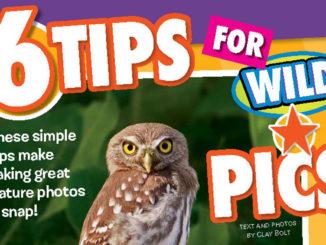
These simple tips make taking great nature photos a snap! …
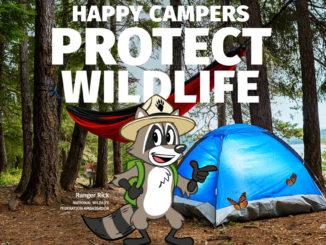
Are you ready for your own “best-ever” camping adventure? Make it memorable with some of these outdoor activities. …
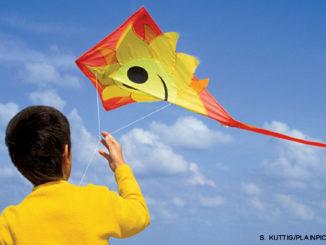
Whoosh! Look what the wind blew in—three windy-day activities that are fun for the whole family. …
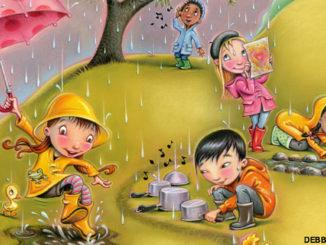
Rain, rain, go away. . . No, wait! Please STAY! Let’s go outside and PLAY! …
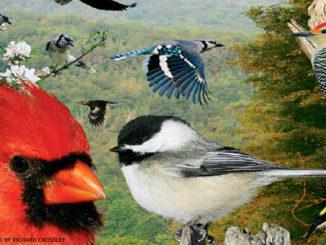
Got eyes? Good! Use ’em to help you identify birds wherever you see ’em. …
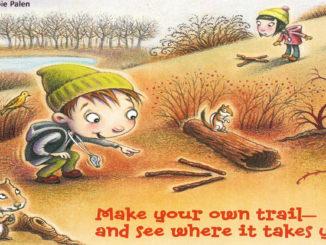
Make your own trail—and see where it takes you! …
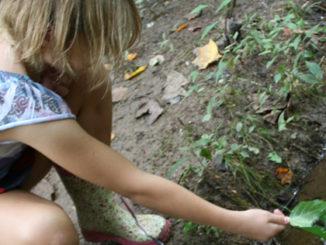
For some old-fashioned fun you can have on a stream, pond, or lake, try making your own leaf boats …
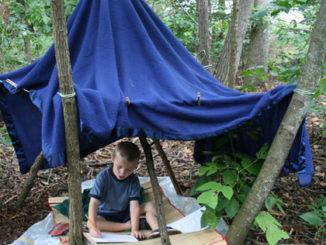
Have your child create their own outdoor hideout! What You Need Old blankets, tarps or large fabric that can …
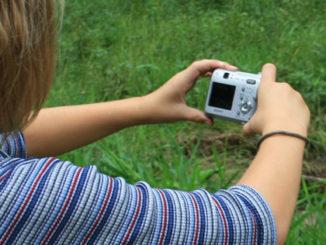
Want to get some great nature photos? Just grab a camera and follow these easy tips! What You Need Camera …
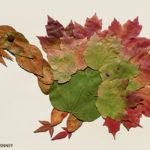
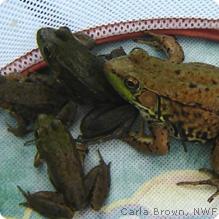
Watching a frog next to a pond is fun. But it’s even more fun to hold that slippery frog in …
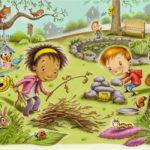
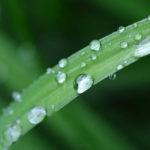
Get Outside for Tree-mendous Fun!
